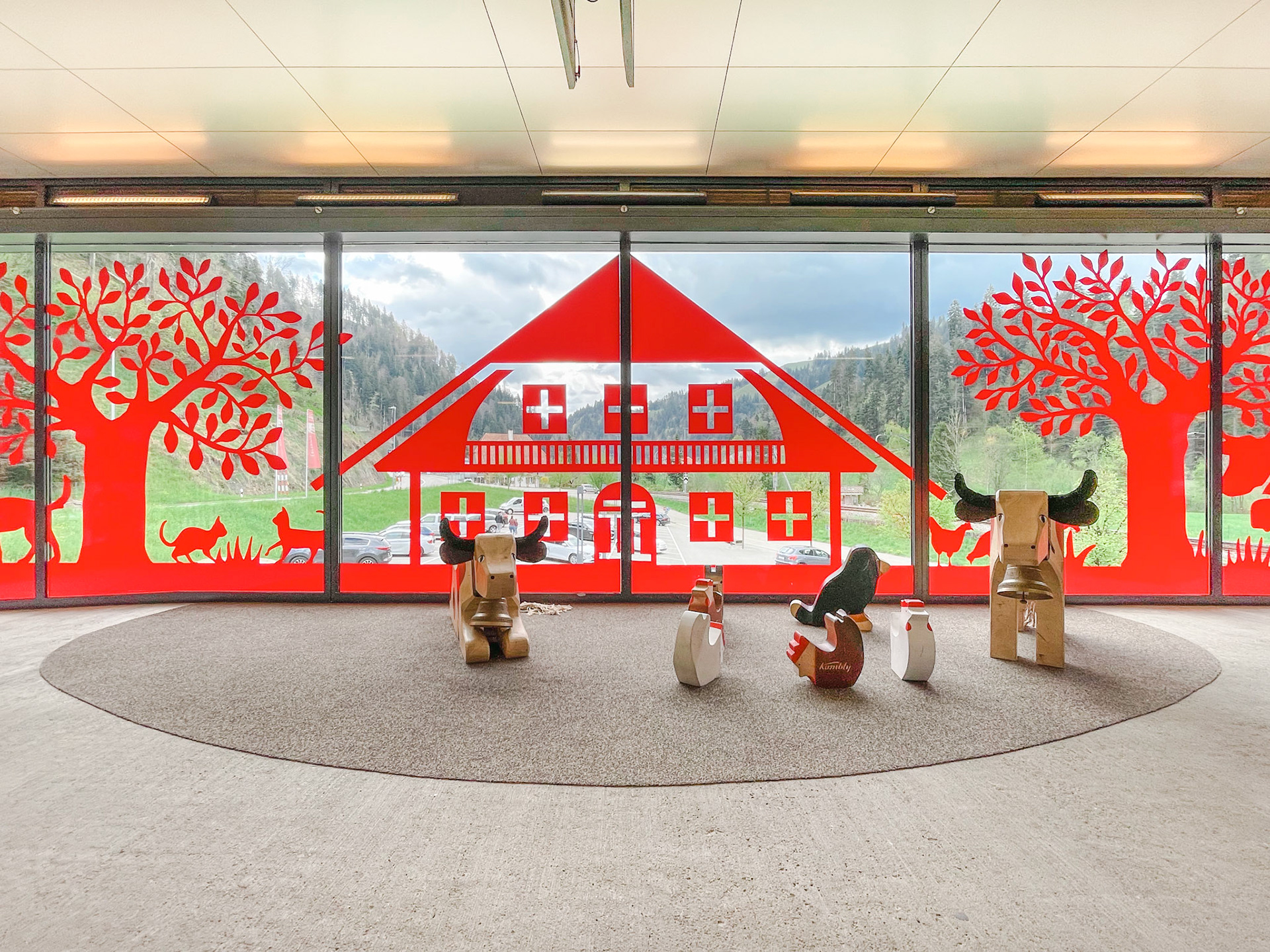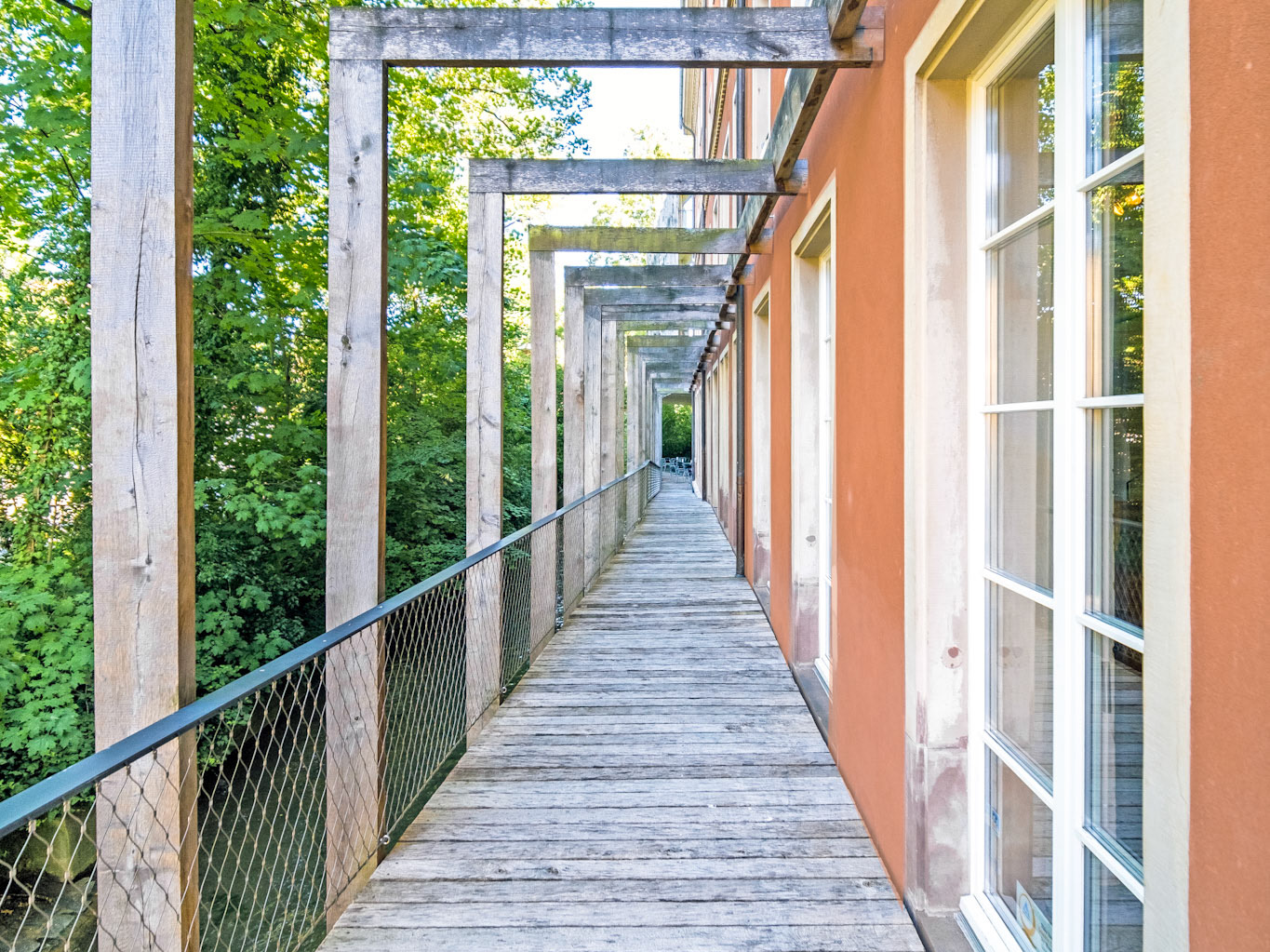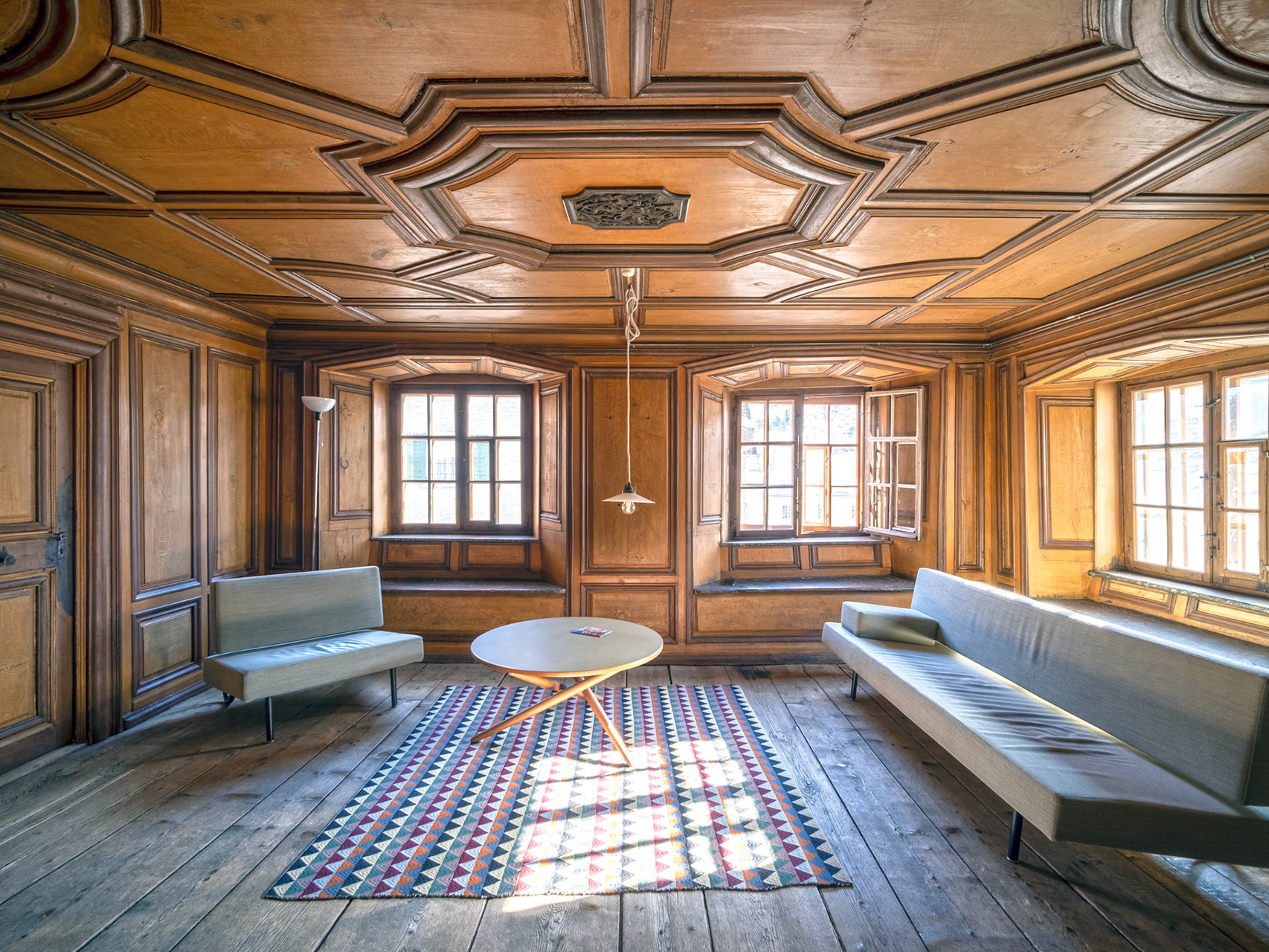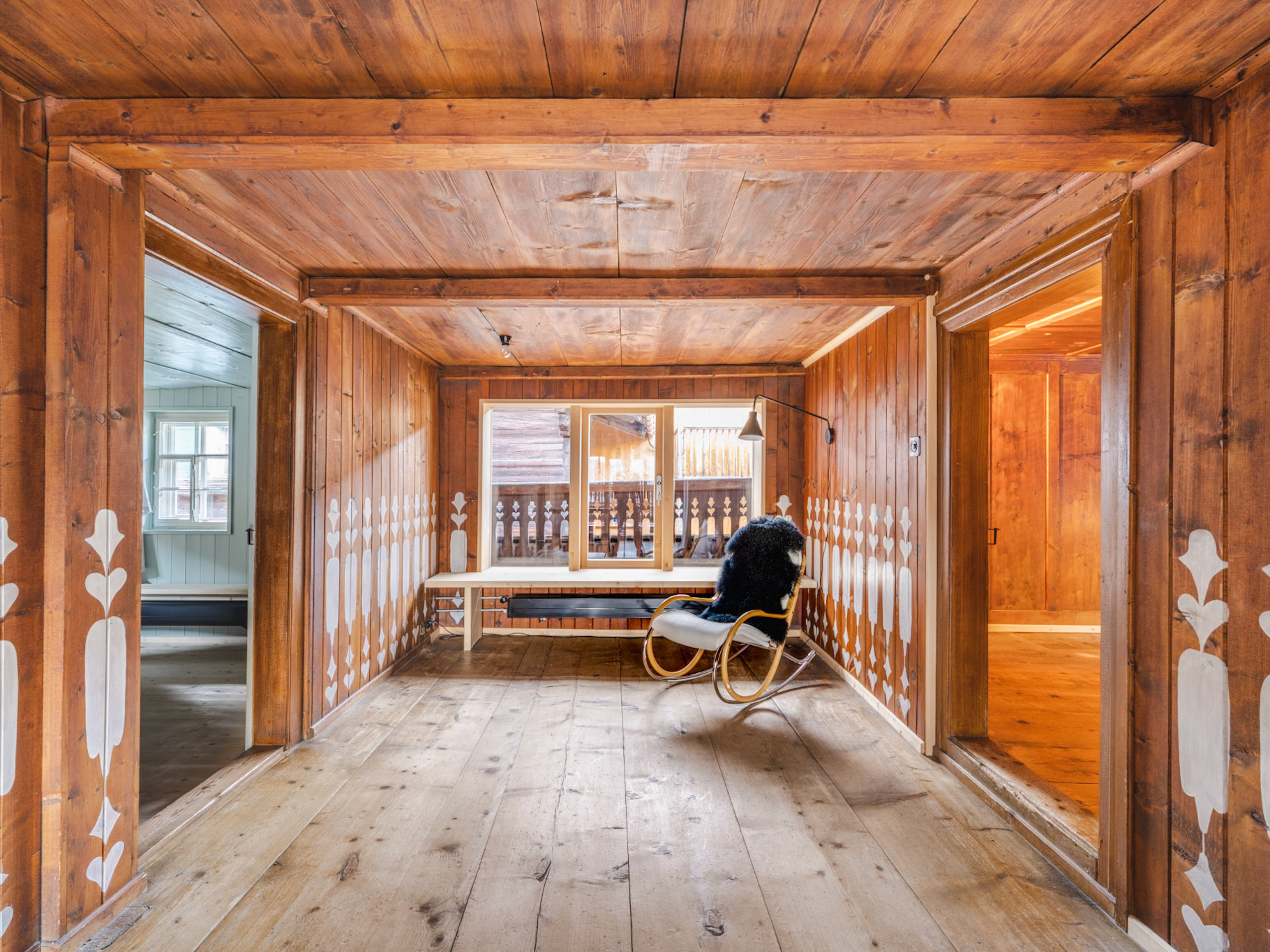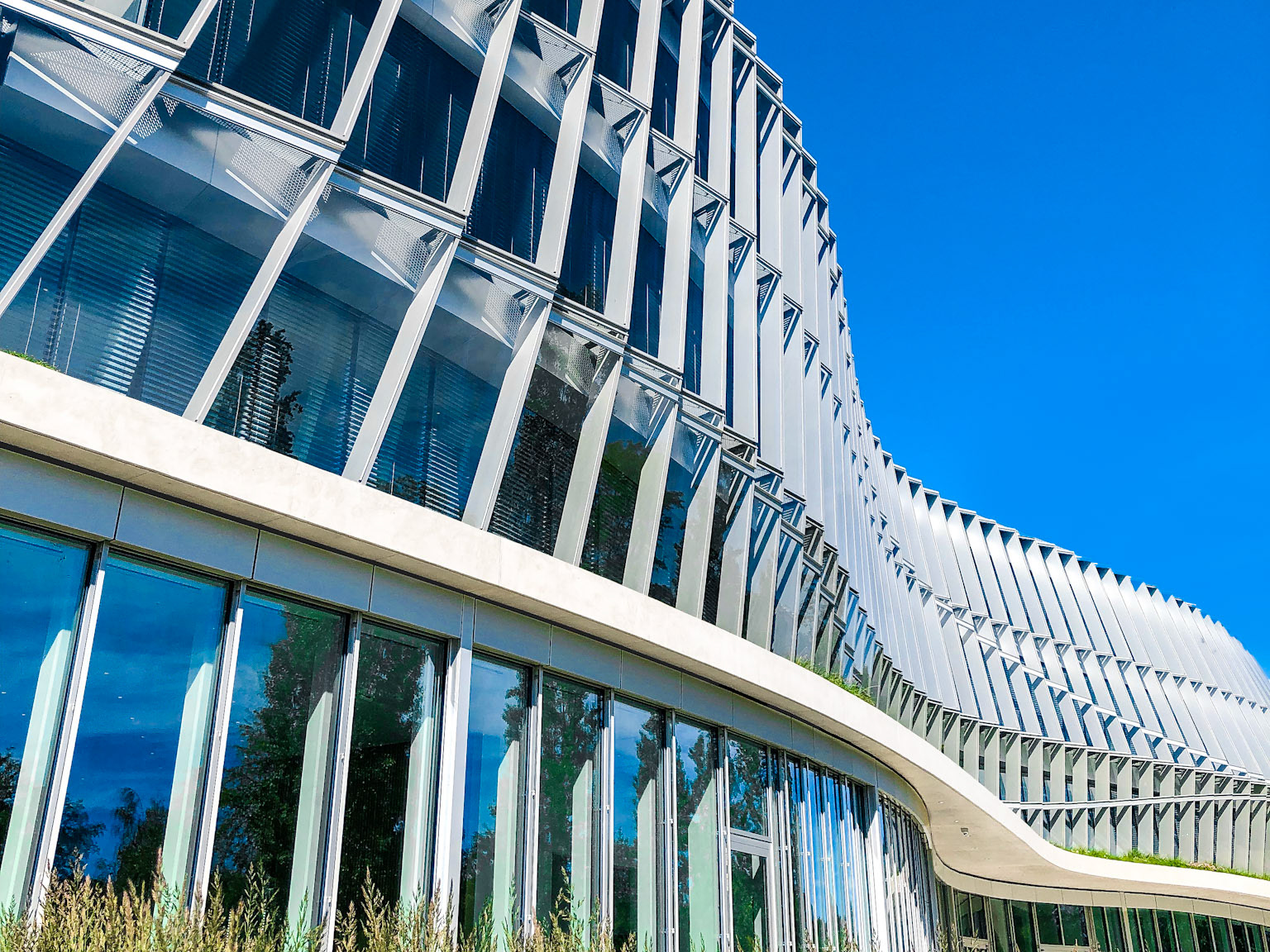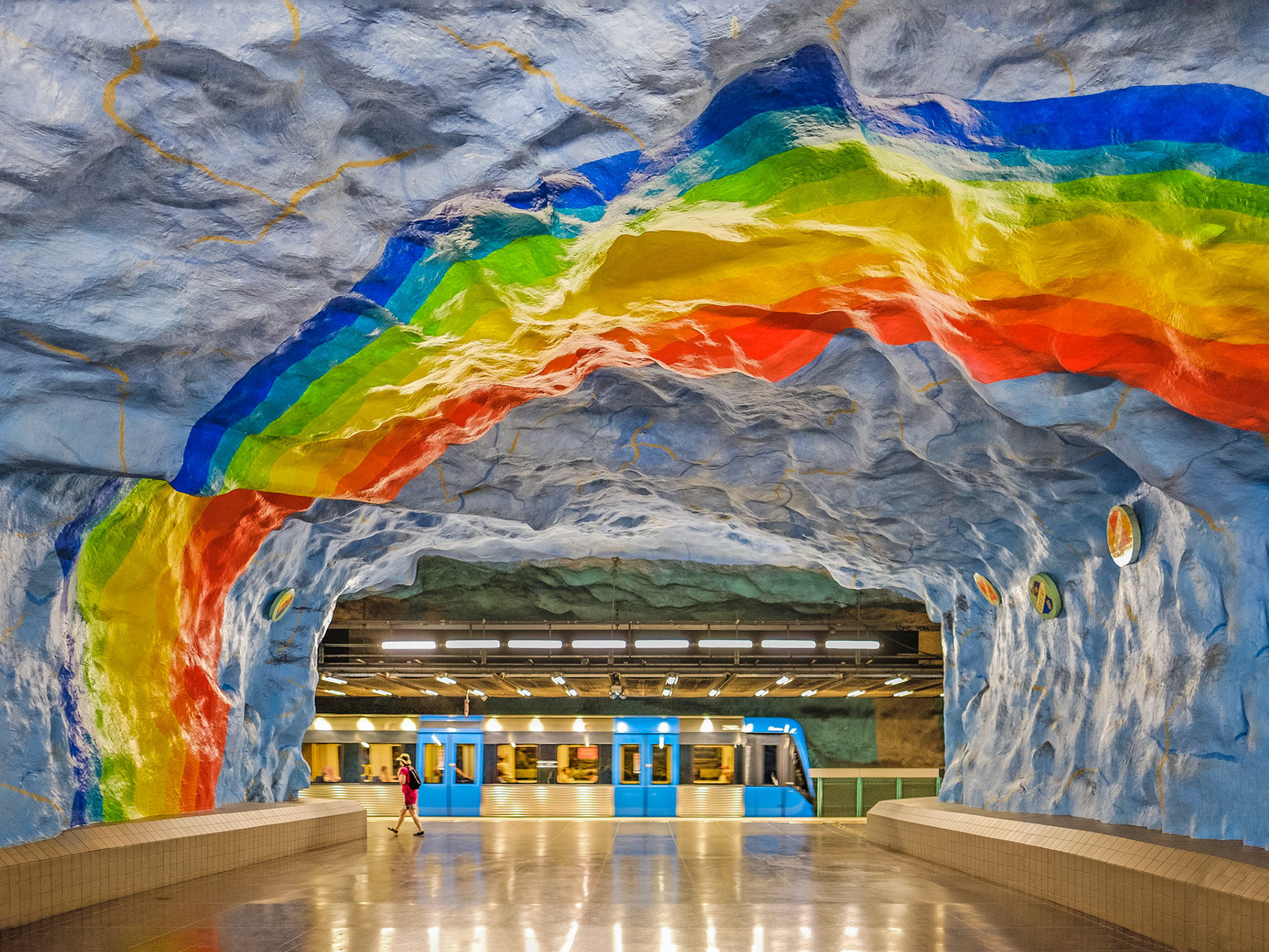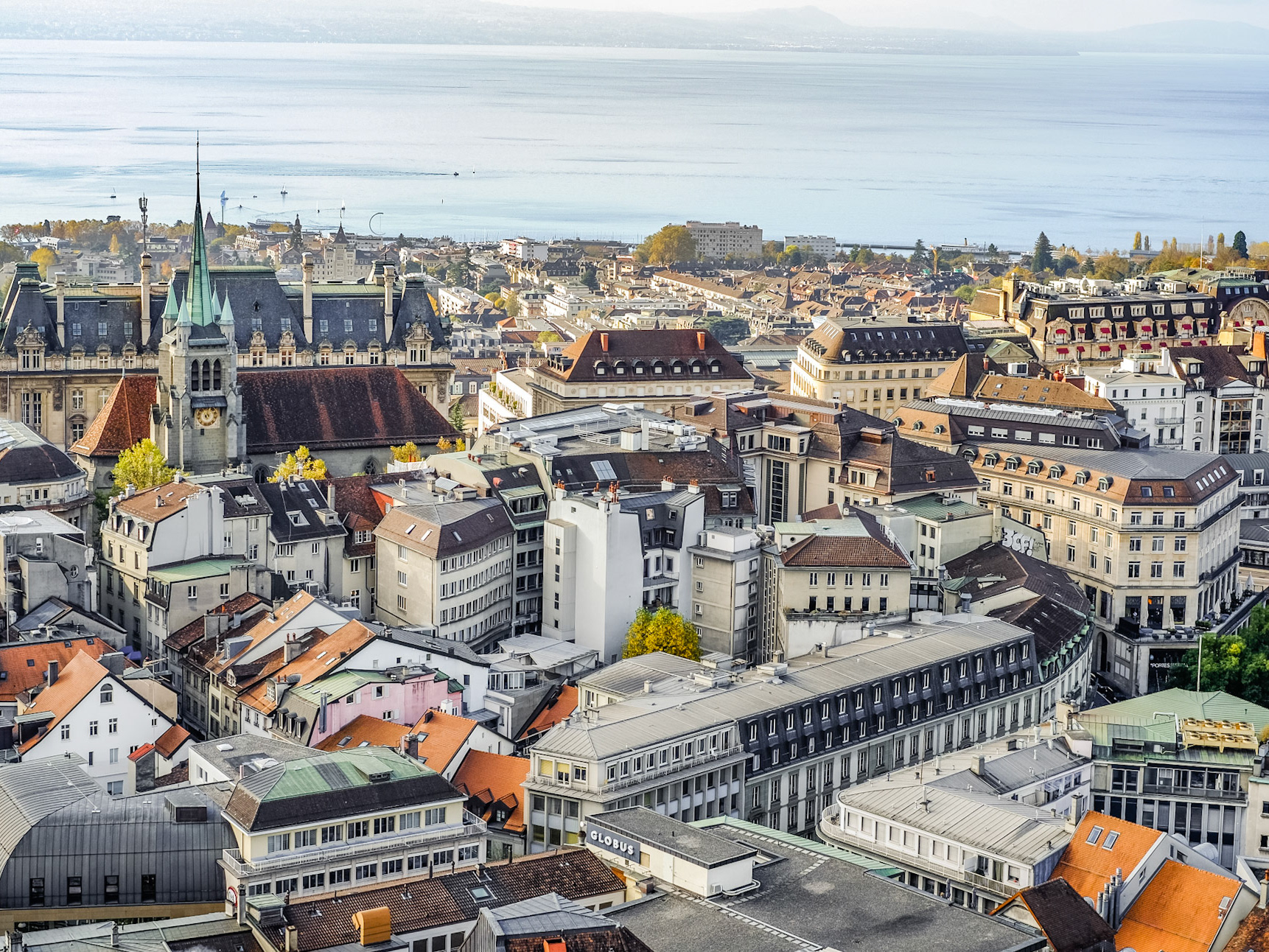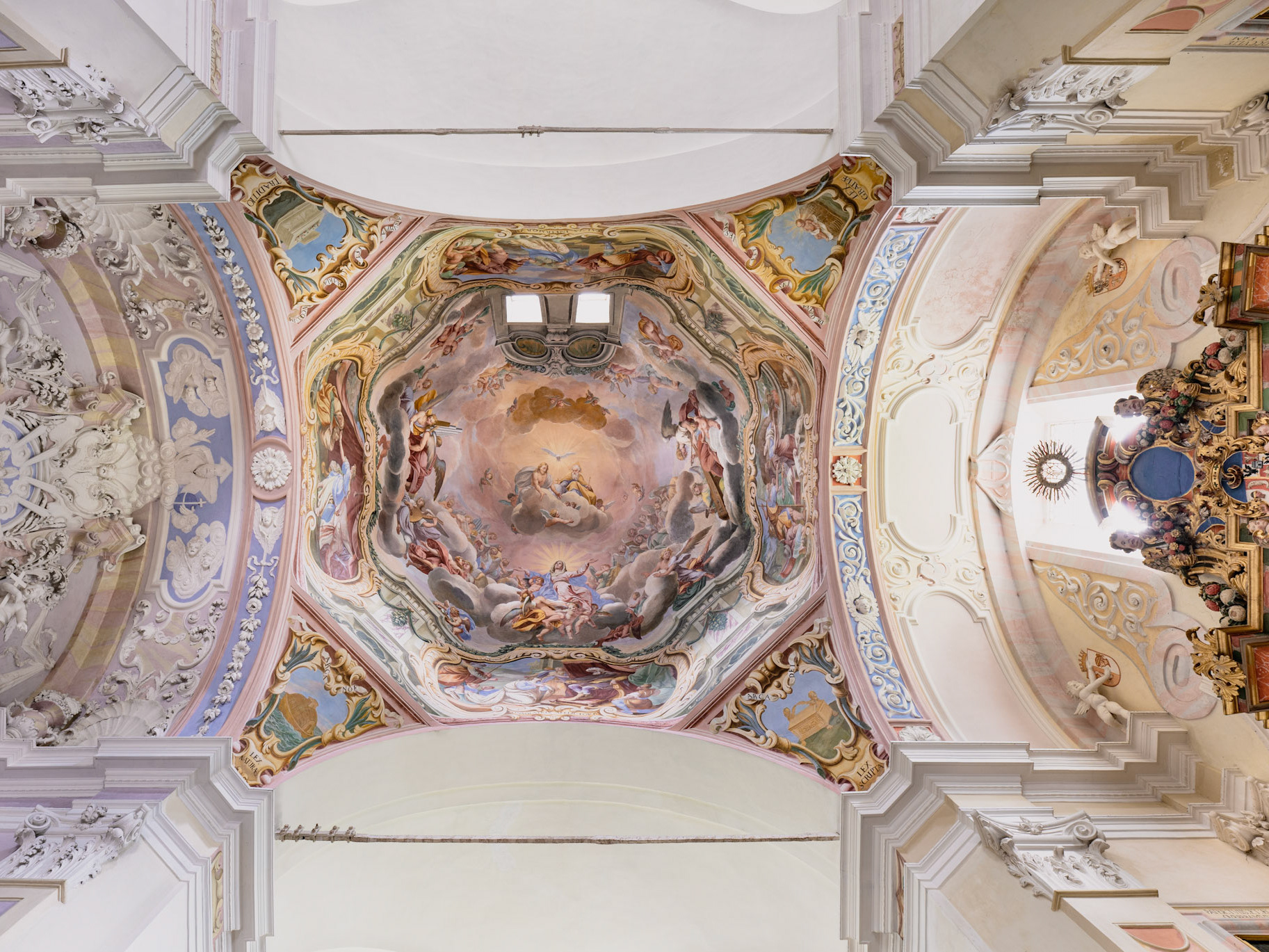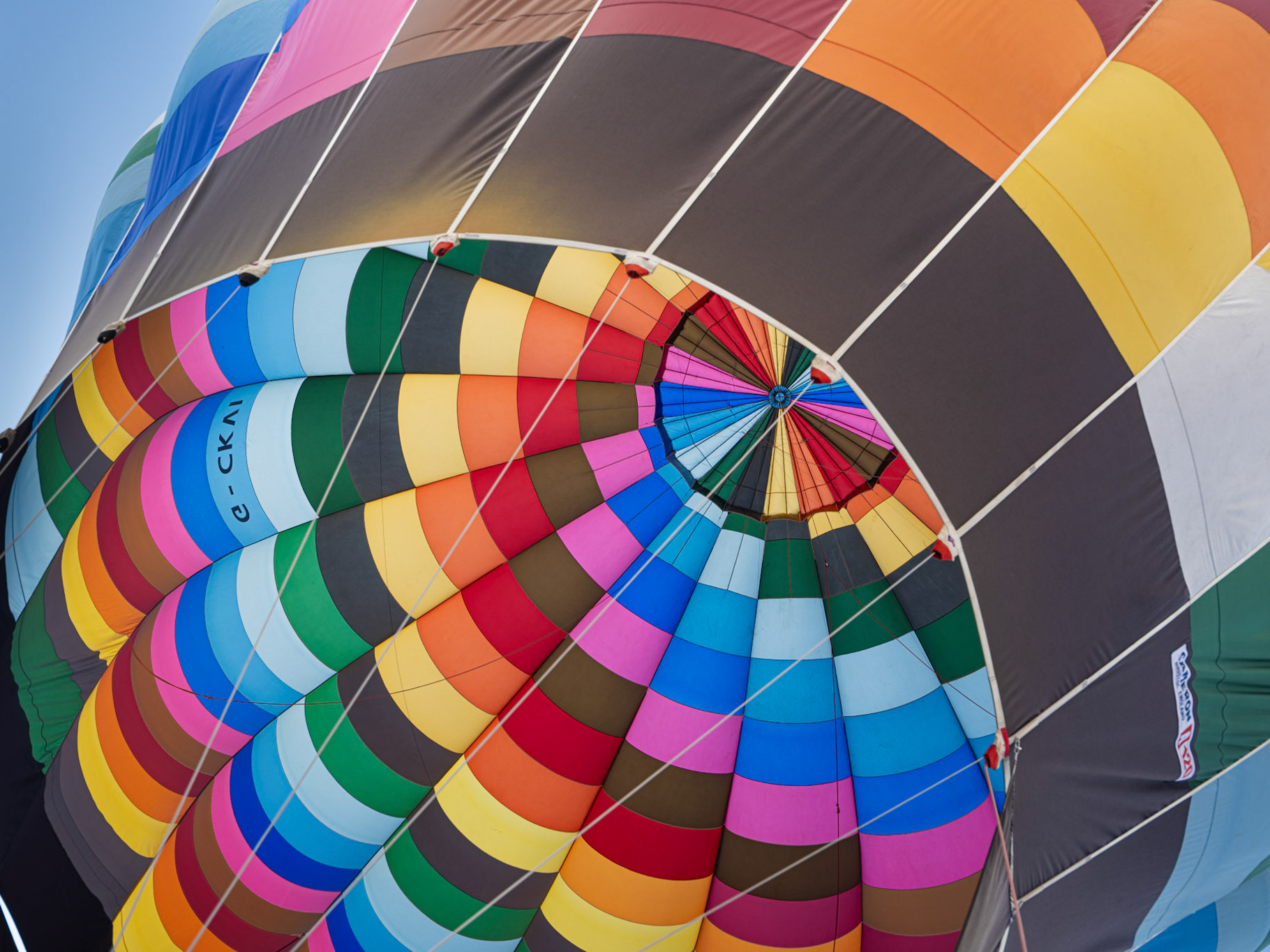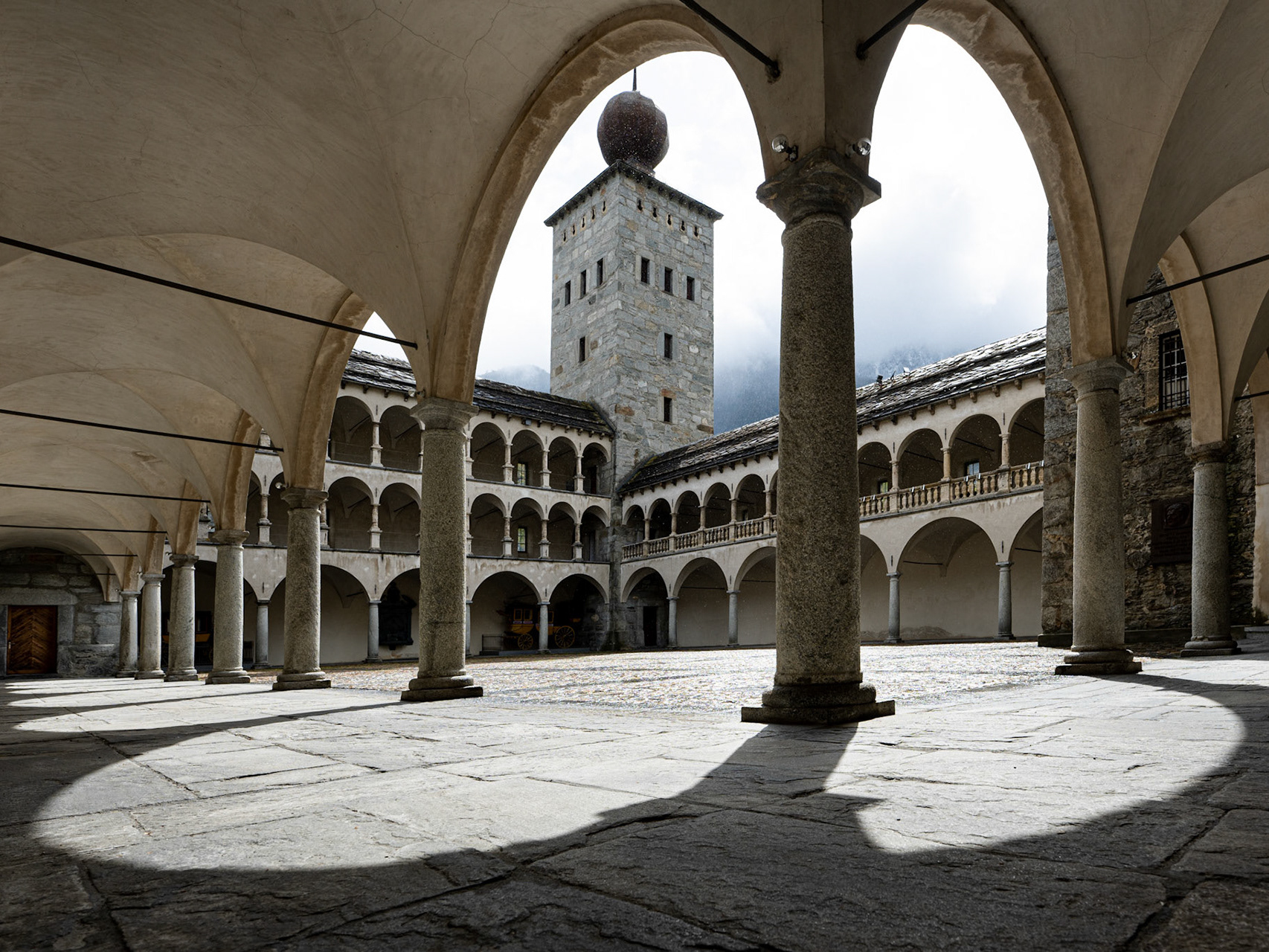The region of Central Switzerland comprises the cantons of Lucerne, Uri, Schwyz, Obwalden, Nidwalden and Zug. It is the birthplace of Switzerland where in 1291, the federal charter, a treaty for mutual assistance and for the settlement of disputes, was signed between Uri, Schwyz and Unterwalden ! These cantons also participated in the Sonderbund war, a Swiss civil war, which ended in November 1847 with a win of the progressive federal troops and led to the modern federal state with the Federal Constitution of 1848. So lots and lots of history to discover here !

We visited this region over the span of a week, staying in two charming historical houses that can be rented through Ferien im Baudenkmal.
Day 1: Arriving in Central Switzerland
Our first vacation home was located in Unterschächen, so on our way from Lausanne, we made a stop at the Reussdelta, on the shores of Lake Lucerne.
Reussdelta
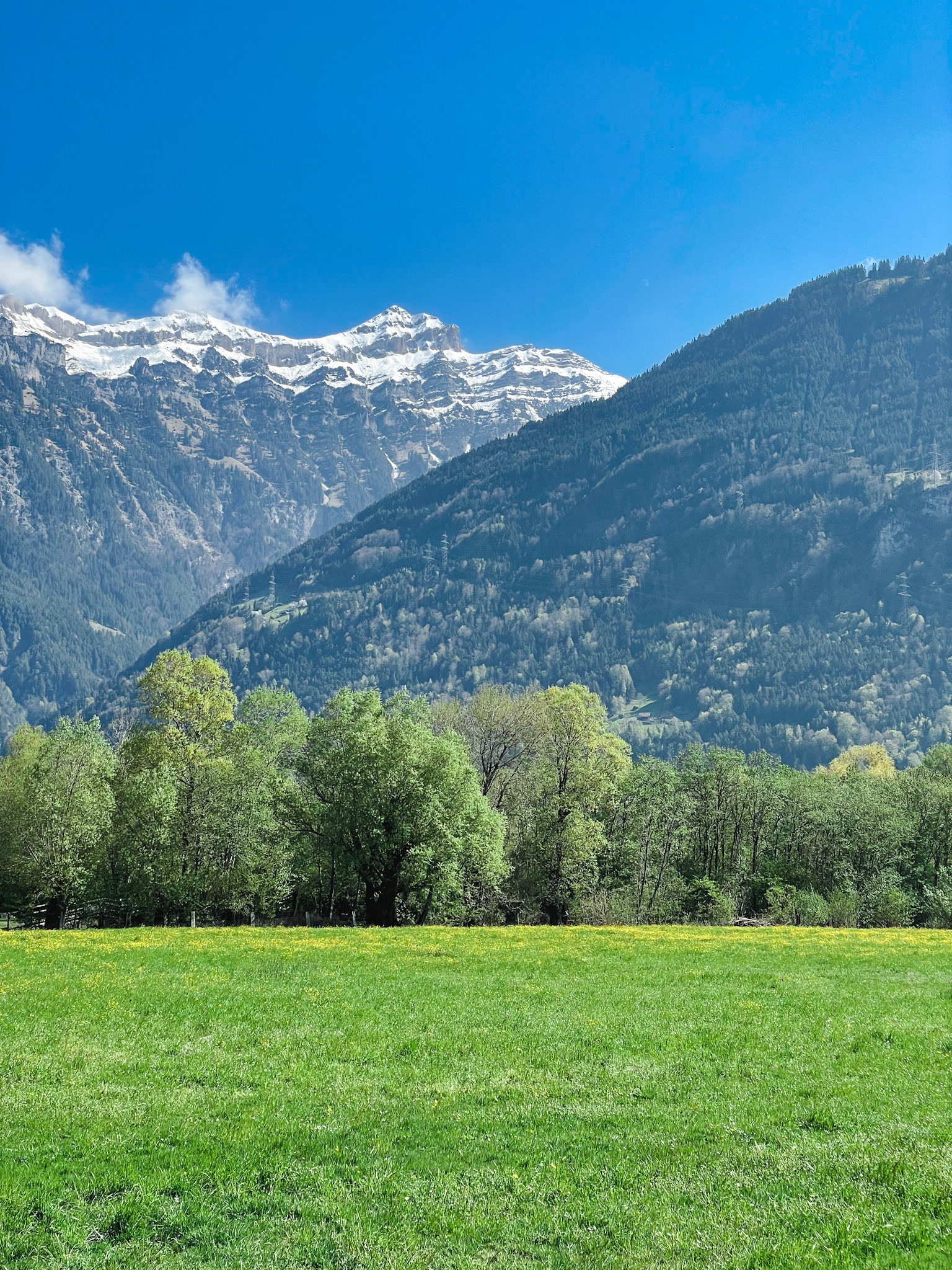
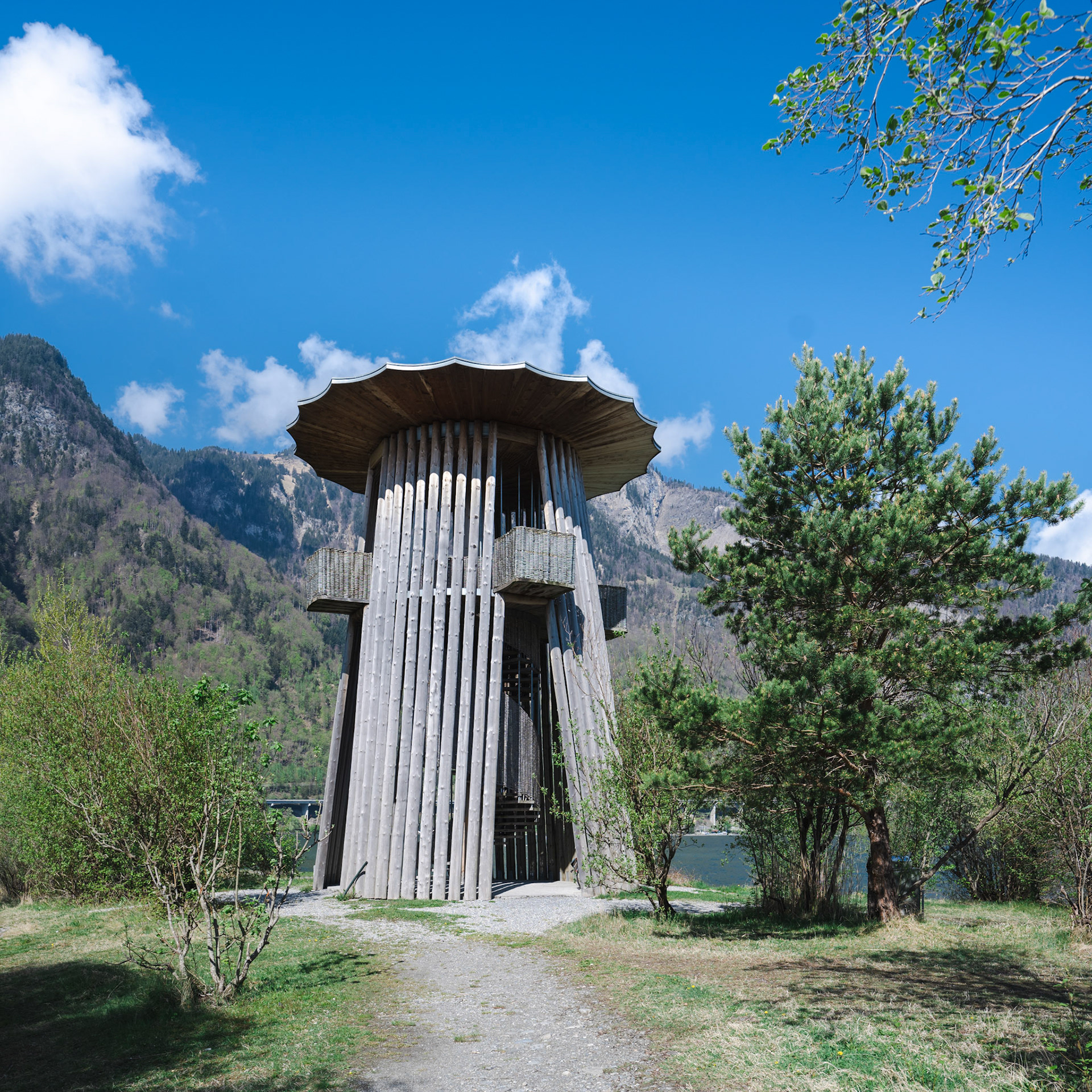
The Reussdelta is a nature reserve and recreation area stretching along the southern shore of Lake Uri, a section of the over 100 square kilometers large Lake Lucerne, between the villages of Flüelen and Seedorf. The delta created by the river Reuss which flows from the Gotthard massif into the lake (and leaves the lake again in Lucerne) is left to its natural dynamics and is lined with reed beds and has extensive shallow water zones. In addition to the natural protection areas, there are hiking and biking trails, bathing beaches and playgrounds.
The 11m high nature observation tower, Aussichtsturm Reussdelta, was designed by Grisons architect Gion A. Caminada and built by local craftsmen and apprentices in 2012. It is composed of 48 silver fir trunks, grouped into four groups of 12 tree trunks, and its four observation baskets are accessible through a spiral staircase with 39 steps. The railing is made of willow rods woven around 20 vertical steel poles.
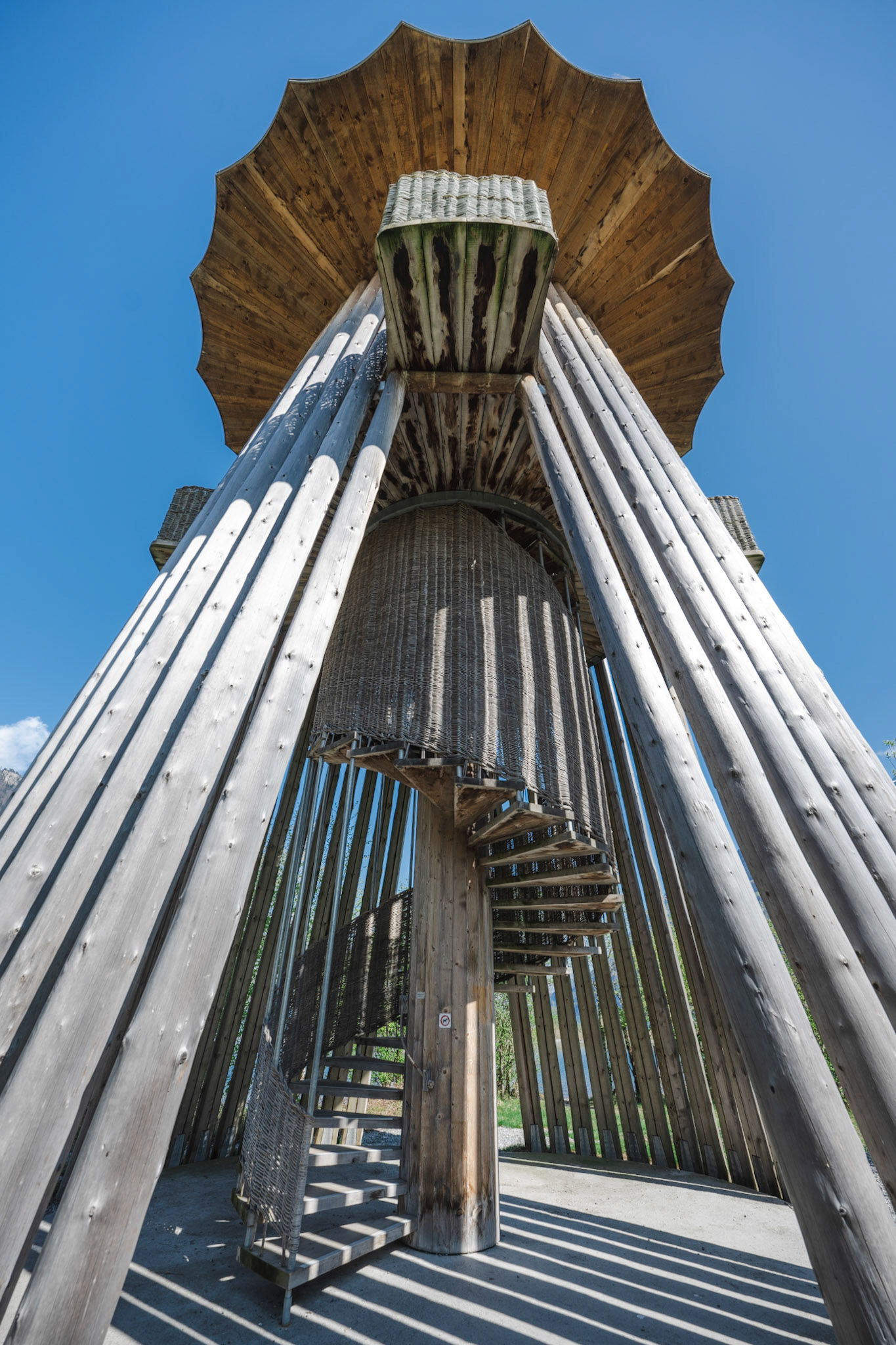
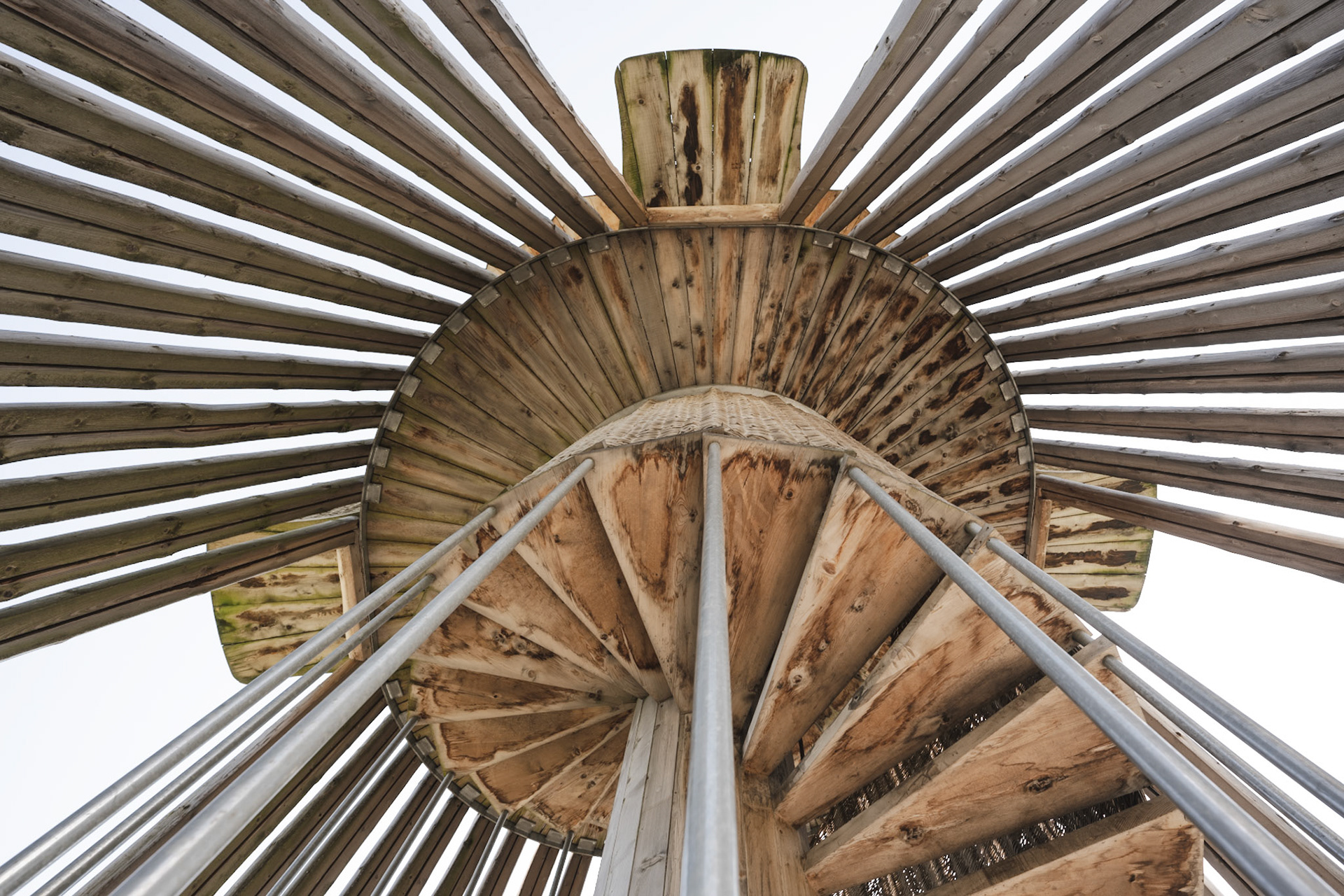
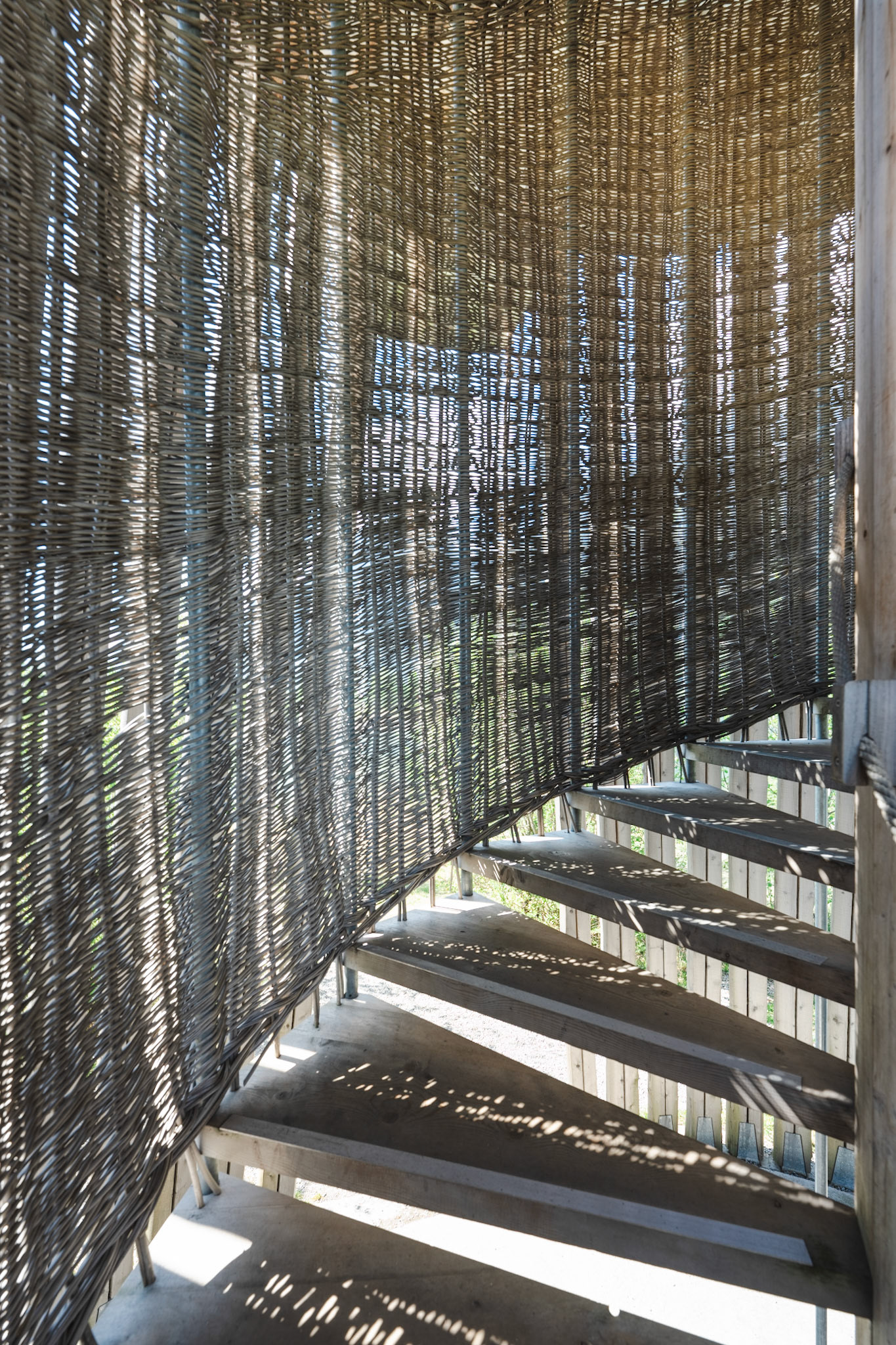
After a picnic and some bird observation time, we continued our road following the river Schächen into the Schächental, the valley where Wilhelm Tell was born according to 16th century Swiss historian Aegidius Tschudi.
Stüssihofstatt
The Stüssihofstatt in Unterschächen was built in 1450, almost 600 years ago ! Through the centuries, it was inhabited by farming families and has seen almost no changes to its original structure.
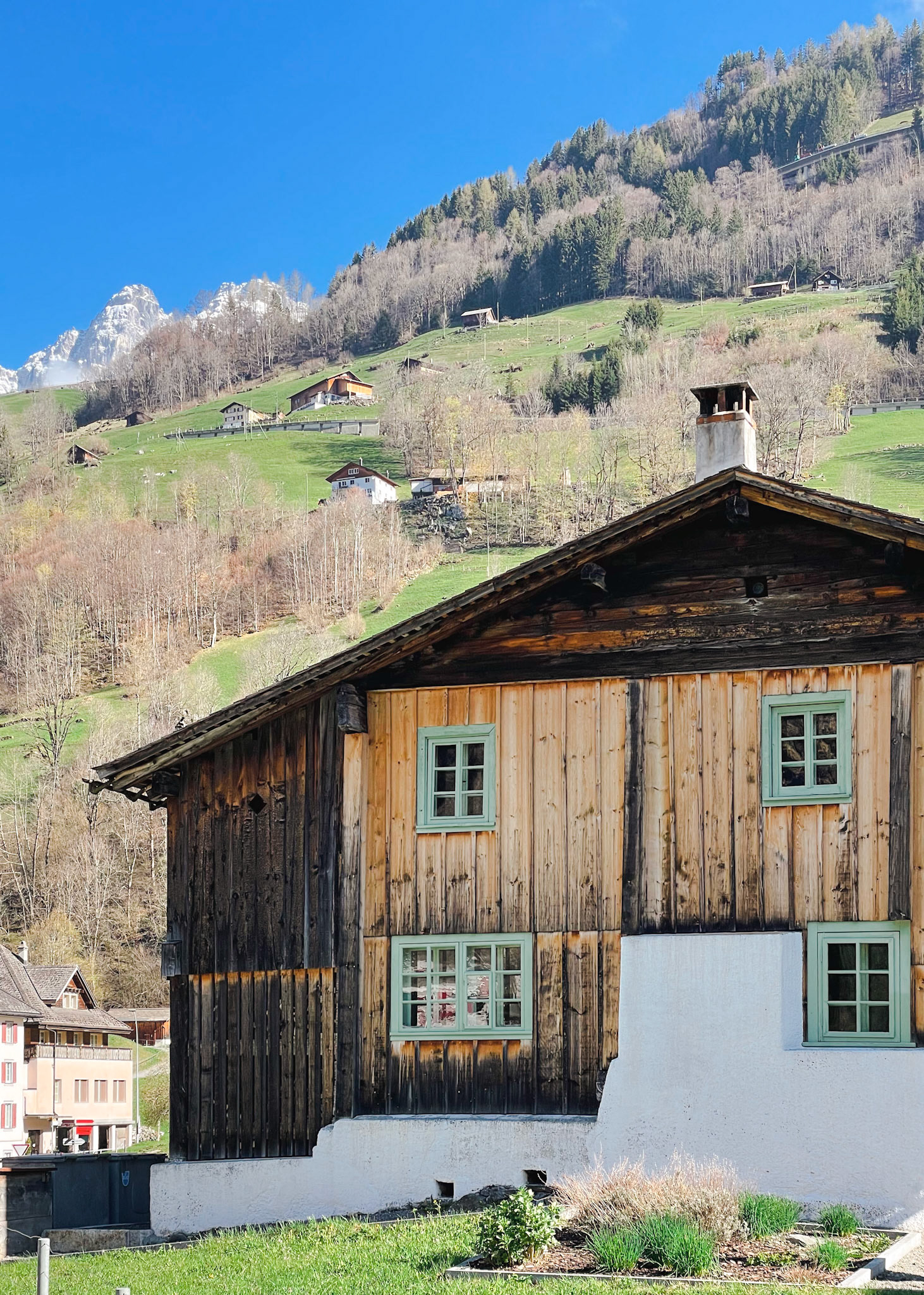
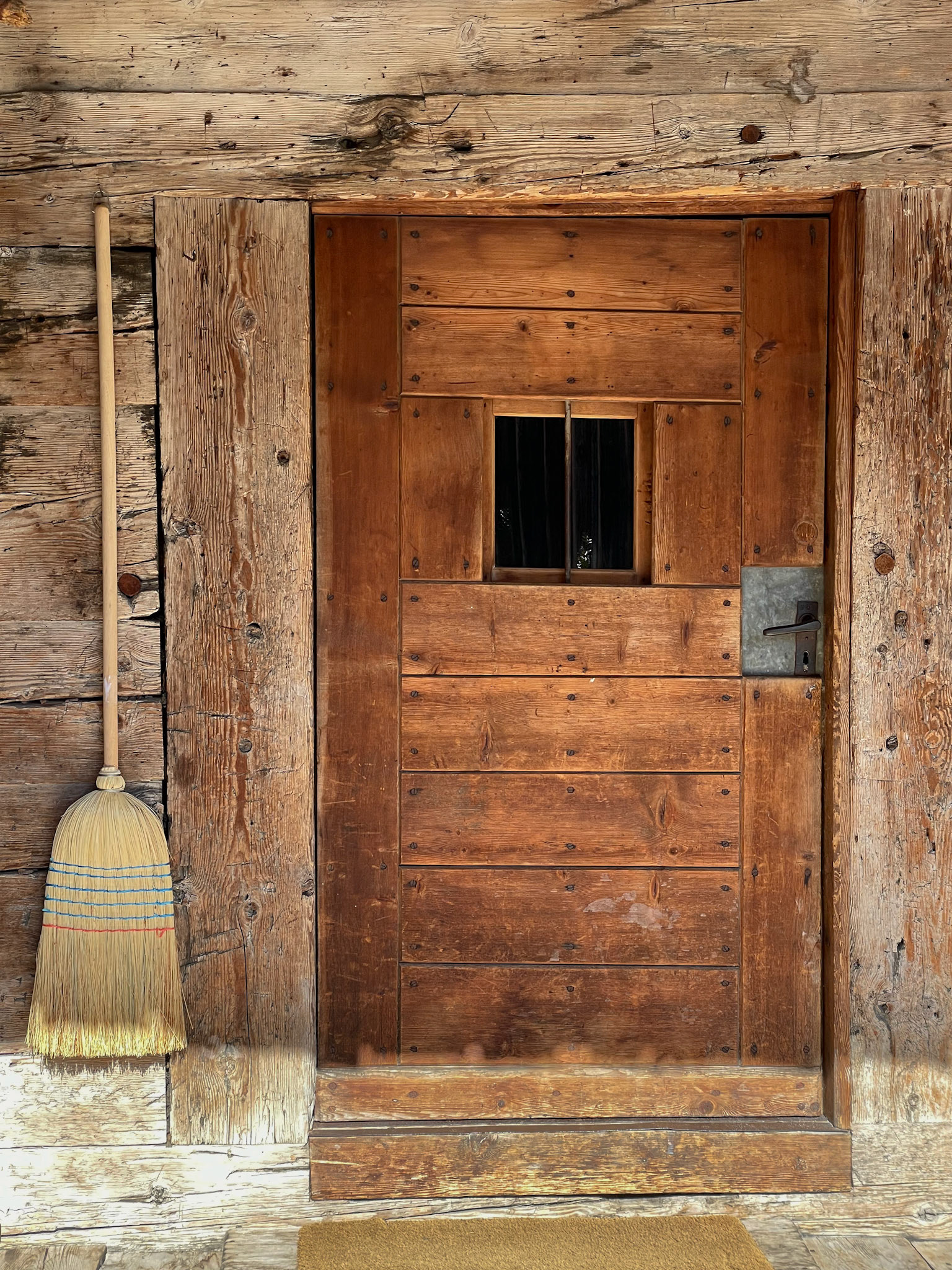
After the last tenants had moved out in 2010, it was renovated to plans by architect Hanspeter Odermatt and is now a vacation home equipped with a modern kitchen and sanitary facilities.
The kitchen prep area in the middle of the house is now open to the full height, allowing you to see the beautiful old wood. Two staircases lead up to the rooms on both sides of the house.

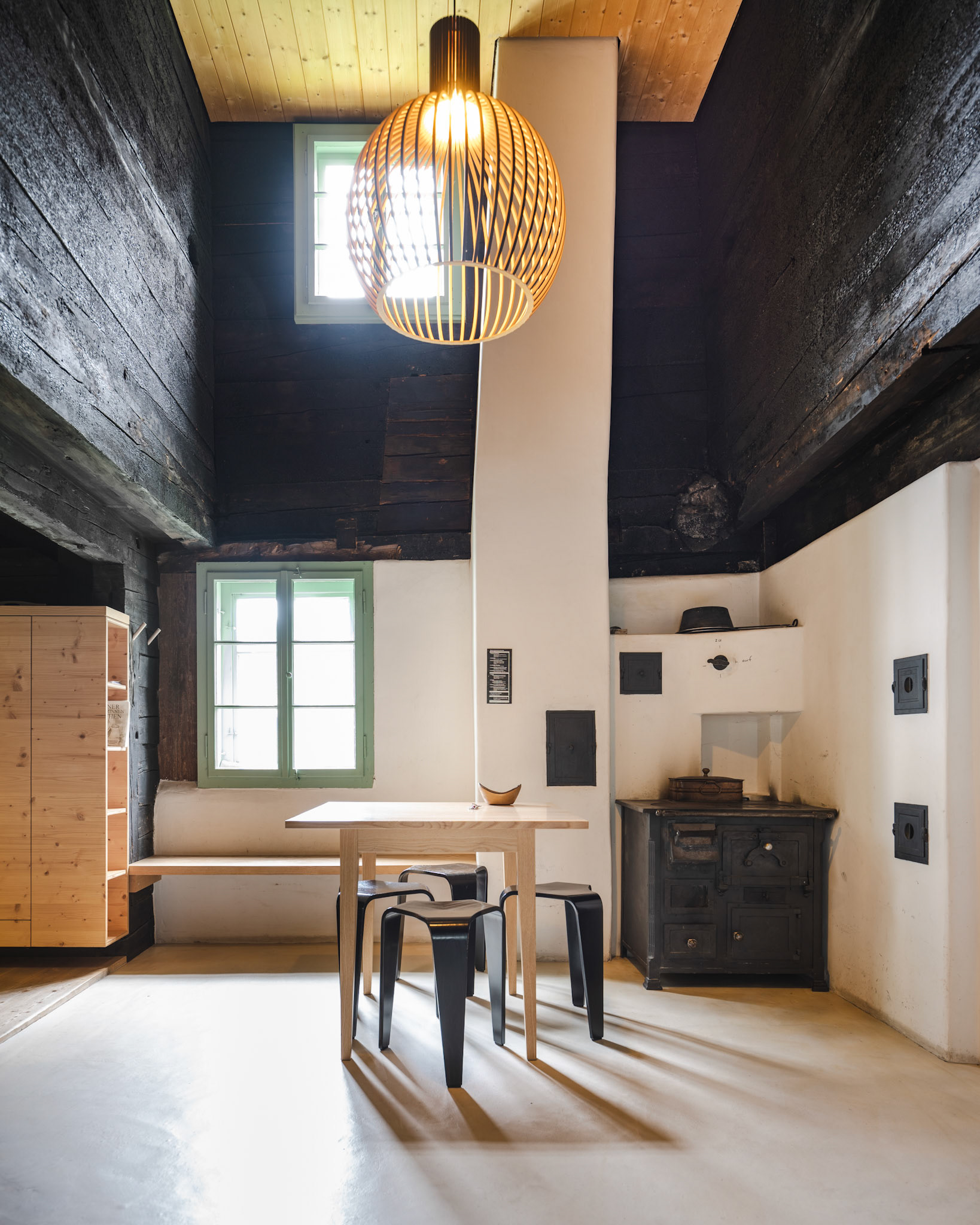
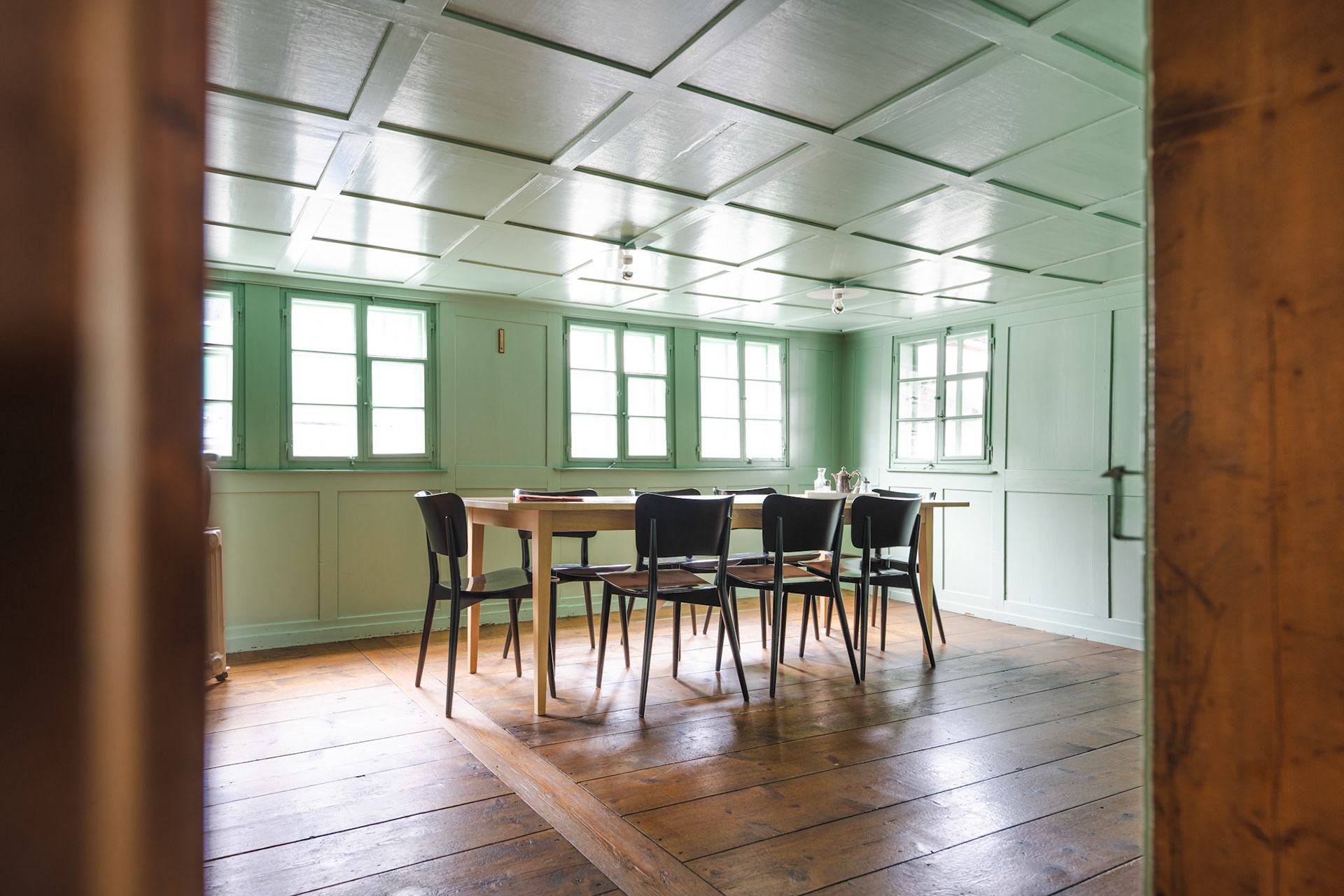
It is heated with a wood burning soapstone oven that also heats the water ! We were surprised how much heat it retained over the night, the stones still warm when we woke up in the morning.

We loved the cheerful light green color and spent a lot of time in the cozy living area enjoying the early morning sun or playing games in the evening.
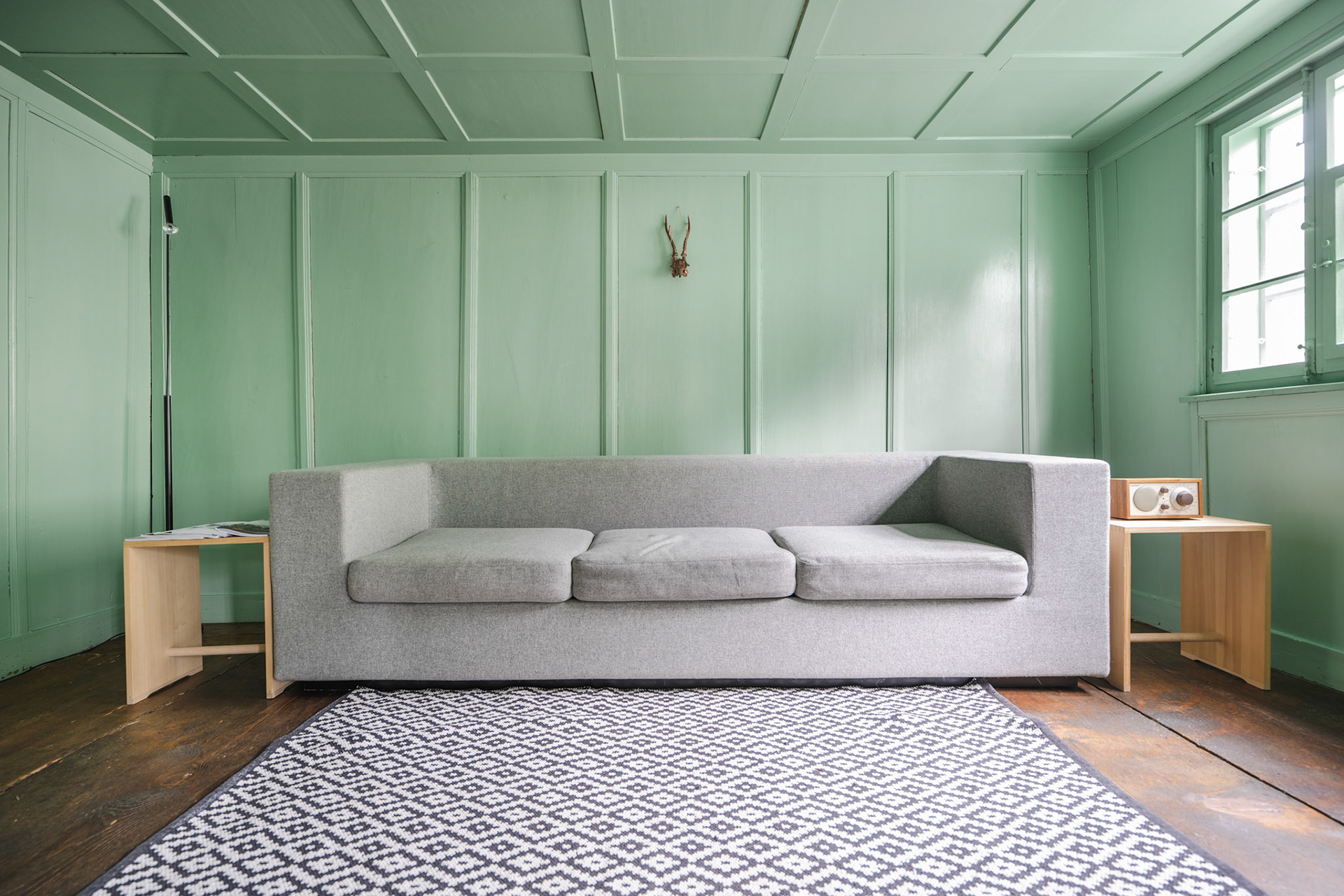
Right next to the house we could take short walks along the river with beautiful views of the surrounding mountains.

Day 2: The origins of Switzerland: Schwyz and Andermatt
Our second day was all about the origins of Switzerland, and what better place to do that than in the town of Schwyz with the Bundesbriefmuseum and the Forum Schweizer Geschichte ?
Bundesbriefmuseum
The Museum of the Swiss Charters of Confederation (Bundesbriefmuseum) is home to the founding document of the Swiss Confederation, the Federal Charter of 1291.
The building was designed by Swiss architect Josef Beeler and inaugurated in 1936.
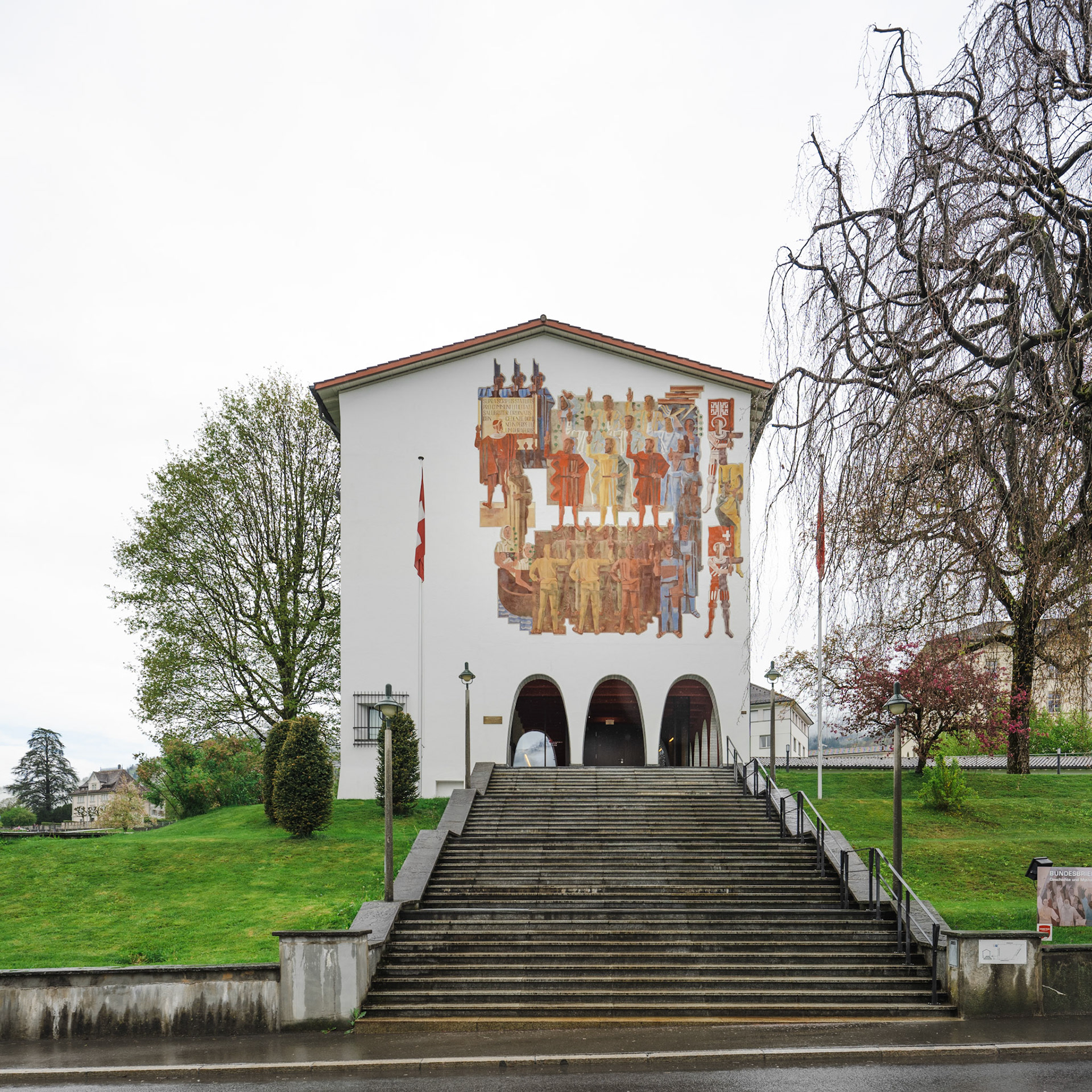
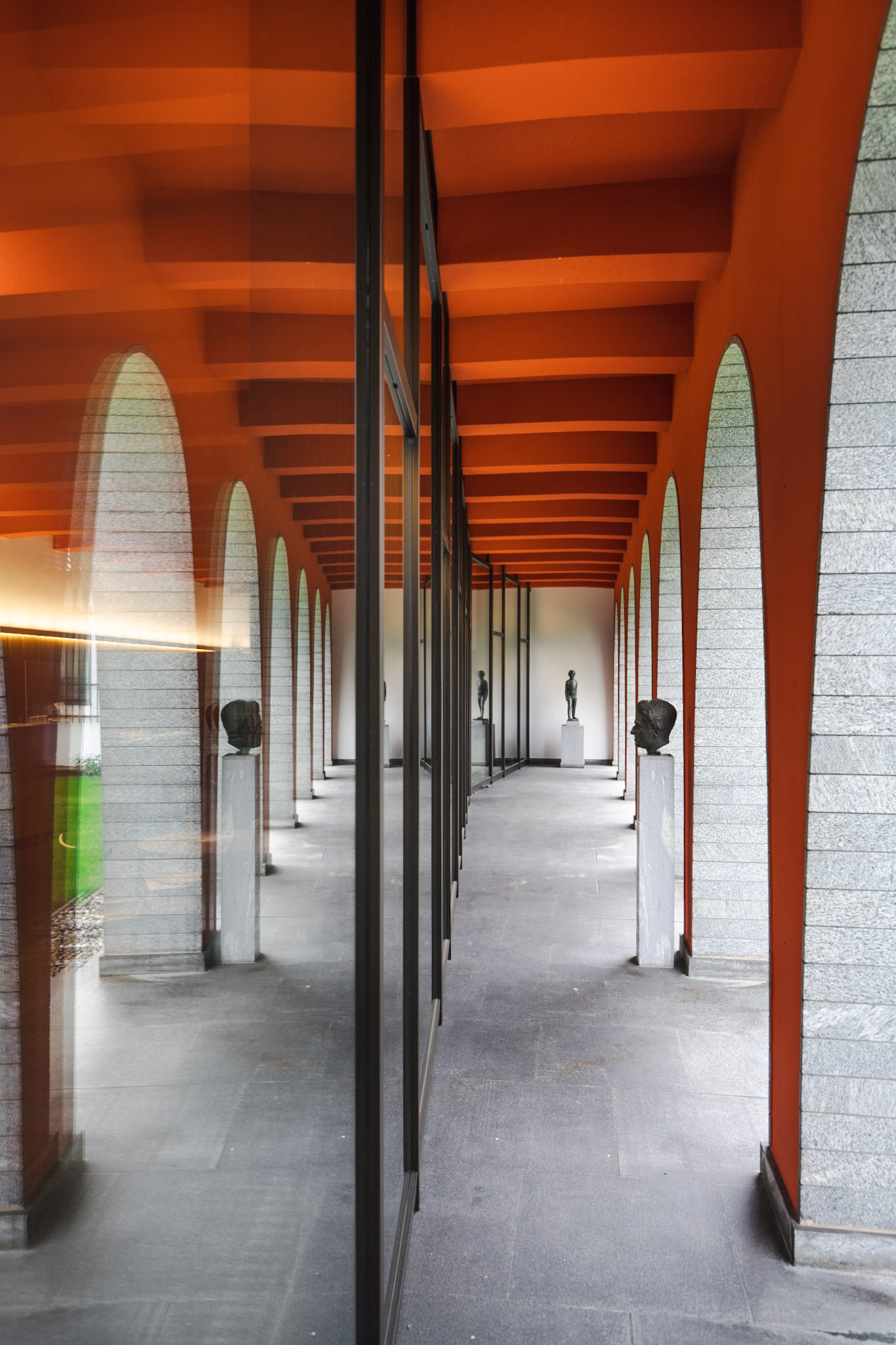
Along with many historic documents, it features artworks, such as the "Fundamentum" by Heinrich Danioth on the main façade, "Der Bundesschwur auf dem Rütli" (The Federal Oath on the Rütli) by Walter Clénin in the upper exhibition room and "Bruder Klaus" (Brother Klaus) by Maurice Barraud in the lower exhibition room.
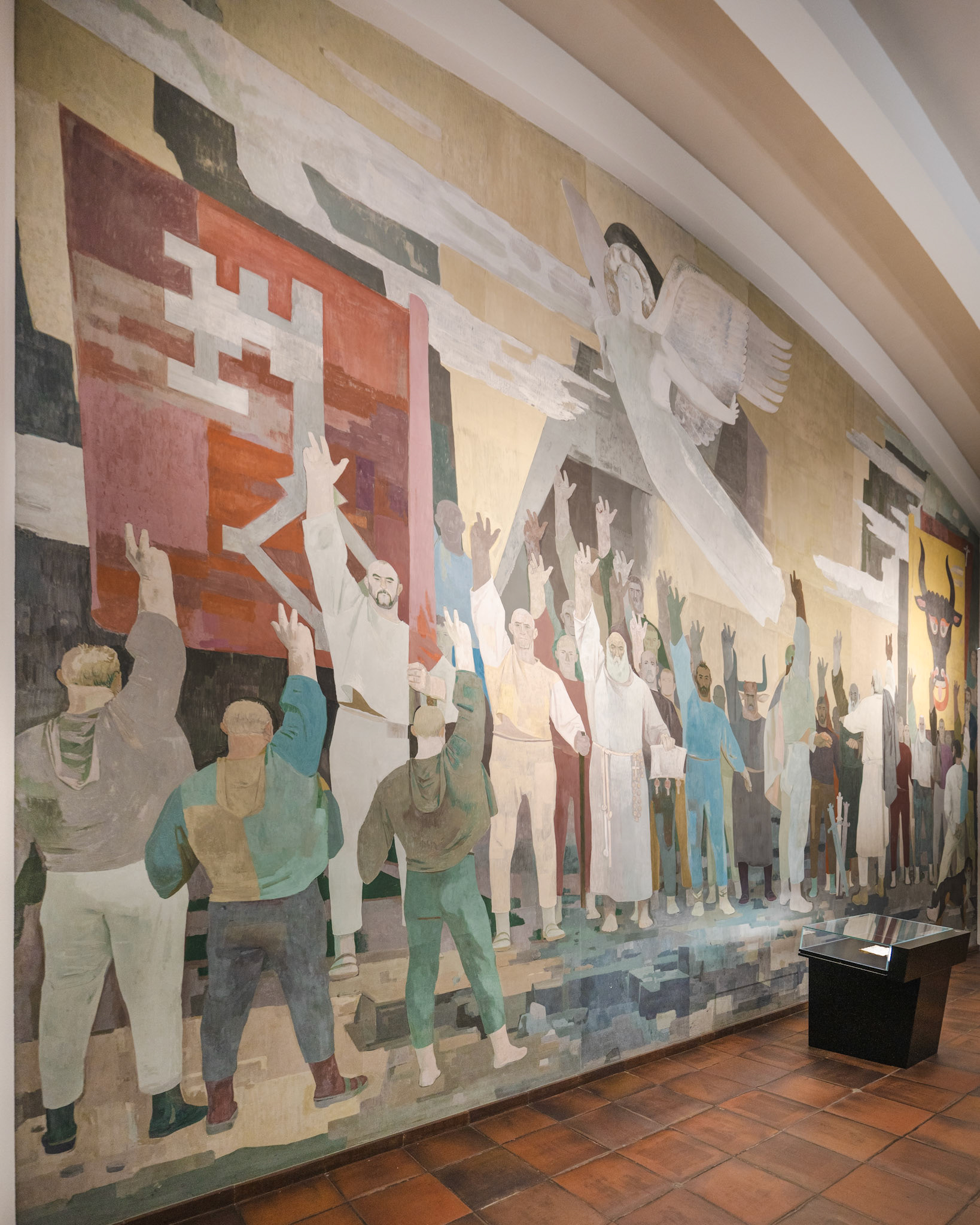

The parchment of Federal Charter of 1291 measures 30cm x 20cm and contains 17 lines written in latin. It was discovered in the cantonal archives of Schwyz in 1724 and since it mentions as the signing date the “beginning of August”, the Swiss National Day is celebrated since the 600th anniversary celebration in 1891 on August 1st. The museum also shows an interesting history of Swiss Flags.
From the Bundesbriefmuseum it is a short 5 minute walk to the Forum Schweizer Geschichte.
Forum Schweizer Geschichte
The Forum Schweizer Geschichte in Schwyz was inaugurated in 1995 and forms, together with the Landesmuseum Zürich and the Château de Prangins on the shores of Lake Geneva, the Swiss National museum.
Its home is a Baroque granary and armory dating from 1711.

During the renovations between 1992 and 1994 to plans by Andi Scheitlin, Marc Syfrig and Hans Steiner, a spiral staircase tower was added at the center of the building.

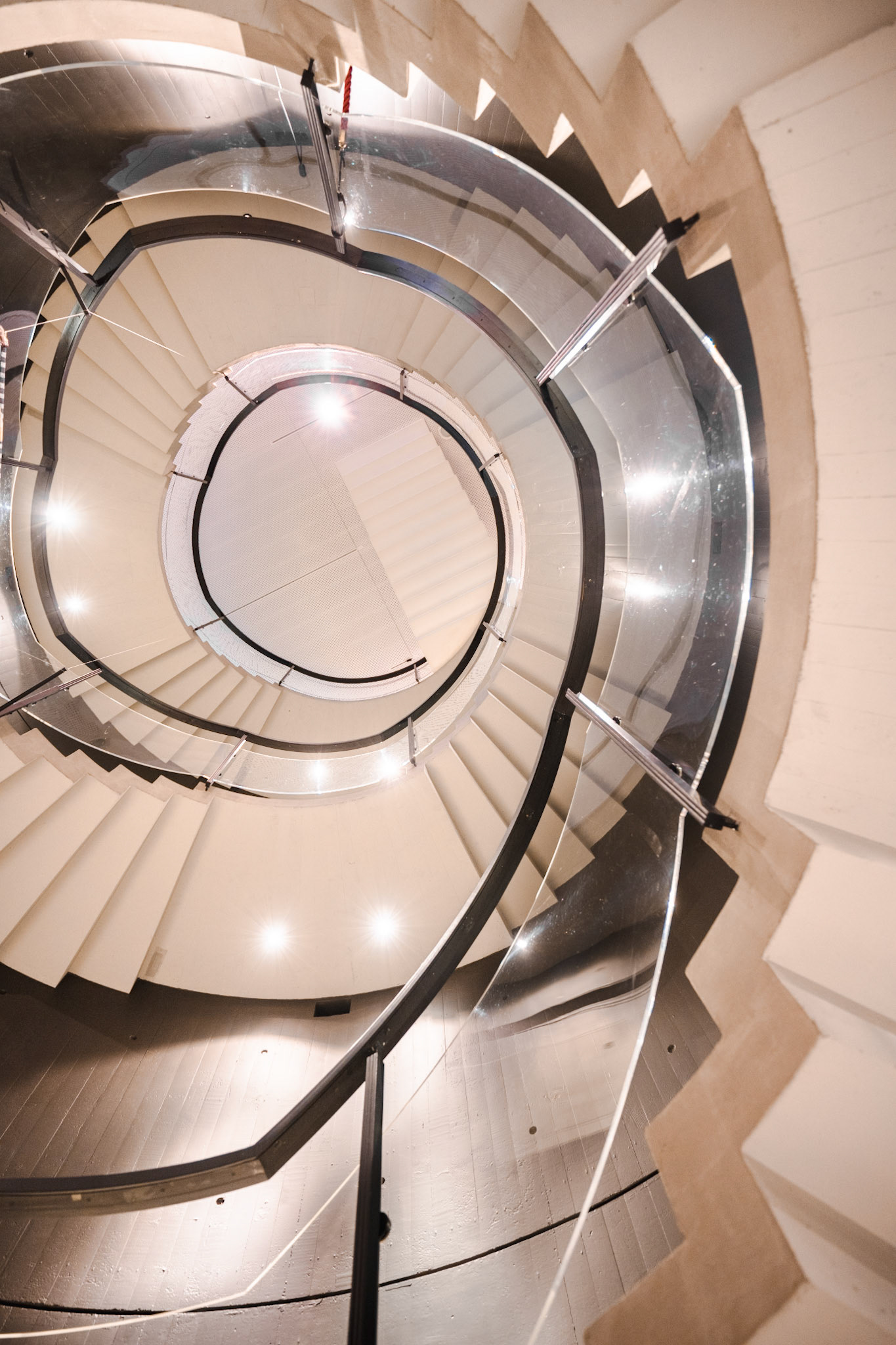
The three upper floors are used by the permanent exhibition "Switzerland in the Making" and the lower floor is used for temporary exhibitions. The current temporary exhibition is “The alps in legend” and explains, among others, the legend of the “Devil’s bridge” near Andermatt. As the legend goes, in the middle ages, the people of Uri faced the difficulty of building a bridge crossing the river Reuss above Göschenen in order to ease the crossing of the Gotthard pass. The Devil appeared and proposed to build the bridge in exchange for the first soul to cross it. He built the bridge in 3 days but the people of Uri sent a goat over the bridge. The devil then tried to destroy the bridge with a stone found nearby but an elderly woman carved a cross into the stone which made him miss.
Both the devil’s stone and the bridge can still be seen today at the Devil’s bridge on the way to Andermatt, the next stop of our day.
Teufelsbrücke
Just before arriving in Andermatt, one can have a great view on the Devil’s bridge and the new railroad bridge.
Andermatt itself is a mountain village at an altitude of 1400m above sea level. It is located at a major crossroads of mountain passes leading both from North to South as well as East to West. The Oberalp Pass is the connection with Grisons, the Furka Pass leads to Valais and the St Gotthard Pass heads to Ticino. Andermatt flourished economically when, in the first half of the 19th century, the St Gotthard Pass was made accessible to stagecoaches. This wasn’t long lived though with the opening of the first St Gotthard tunnel in 1881 as the tunnel passes slightly lower between Göschenen and Airolo in Ticino, avoiding the village altogether.
A stroll in the village gave us a glimpse of what a great ski village it must be in the height of the winter season!
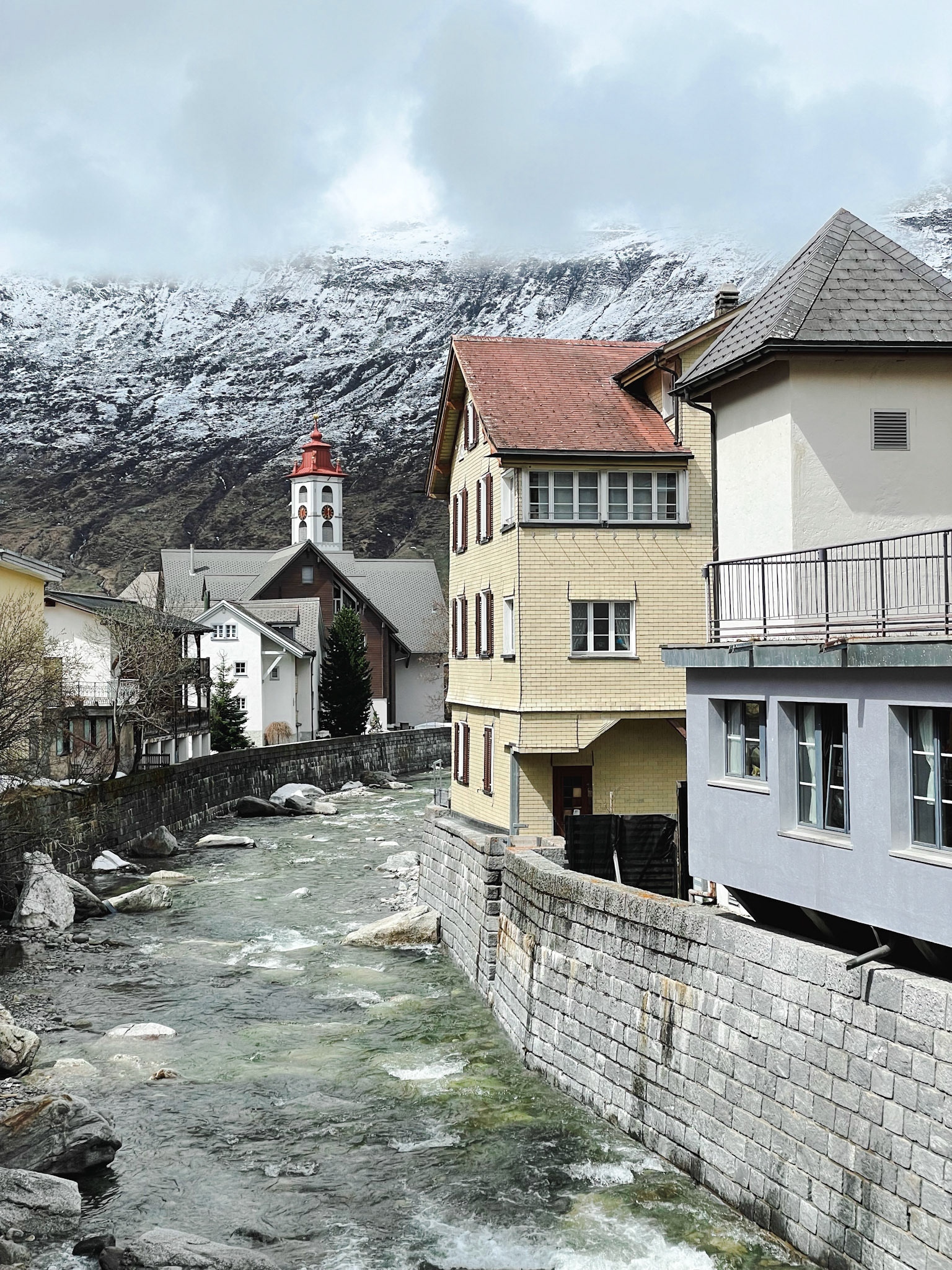
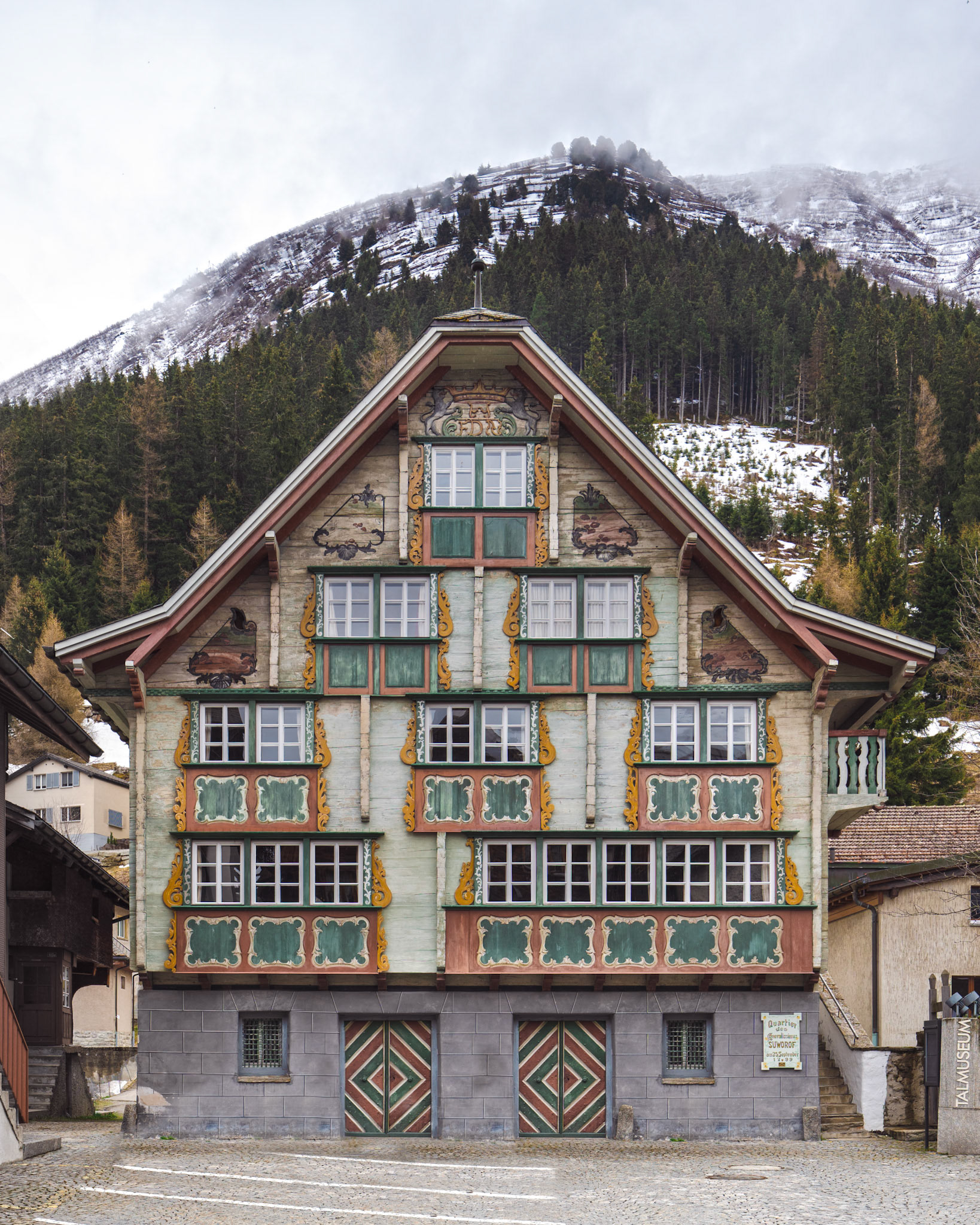
Pfarrkirche St. Peter und Paul
The parish church of St. Peter and Paul in Andermatt was built between 1601 and 1602 to plans by Johannes Schmid. At the end of the 17th century, local architect Bartholomäus Schmid designed the plans for its extension in the Baroque style. The main altar is the work of the famous Valais sculptor Johannes Ritz and was completed in 1716.
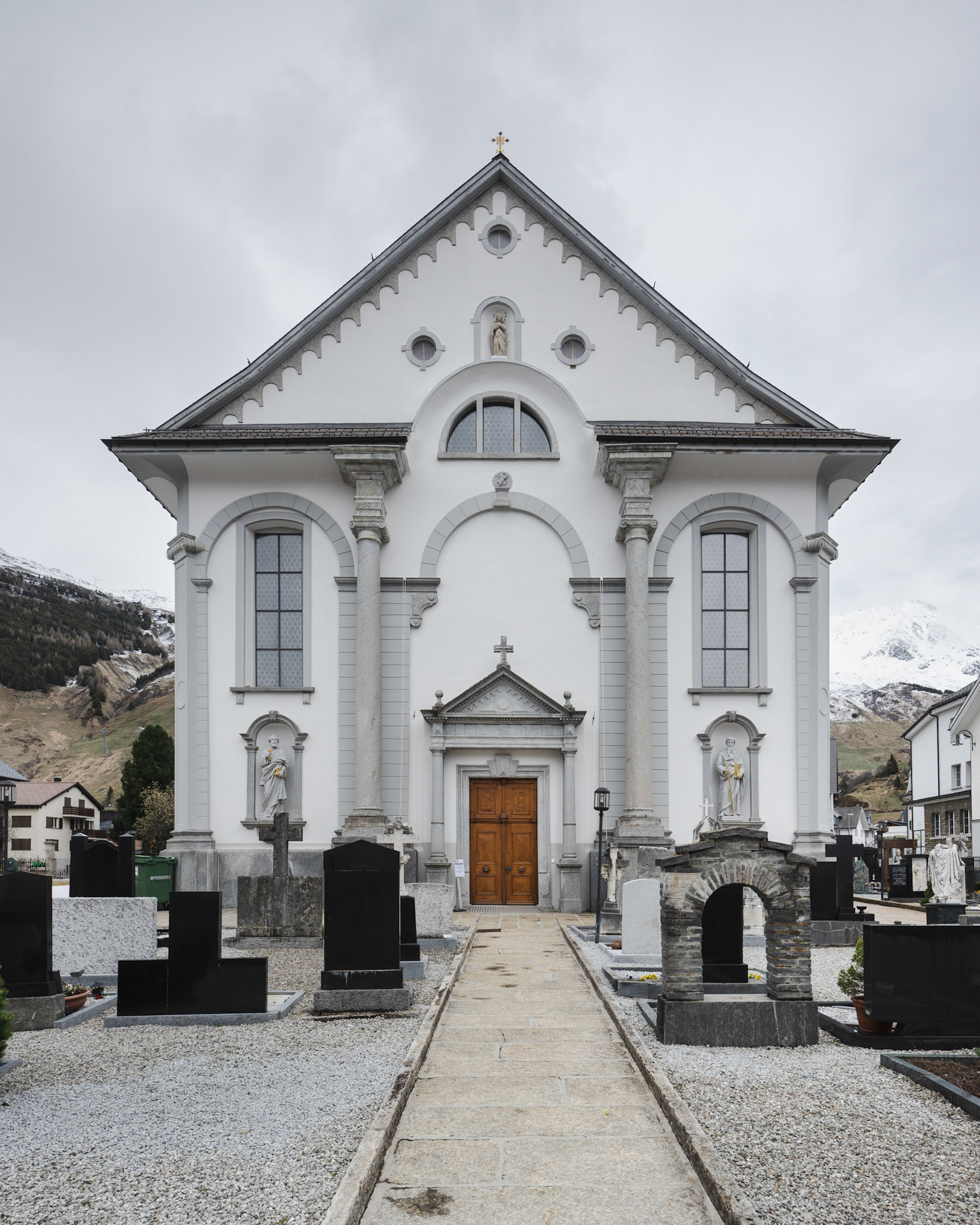
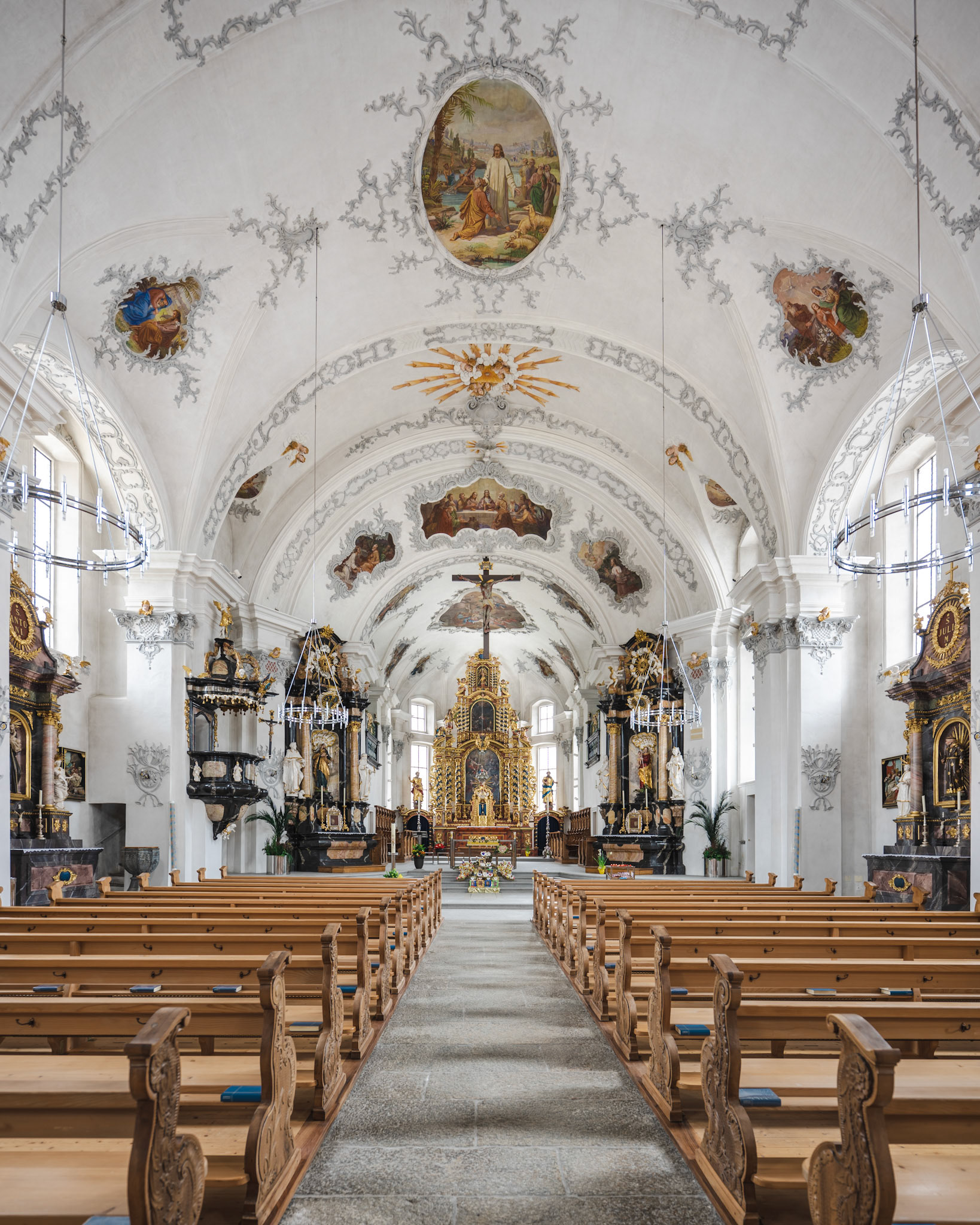
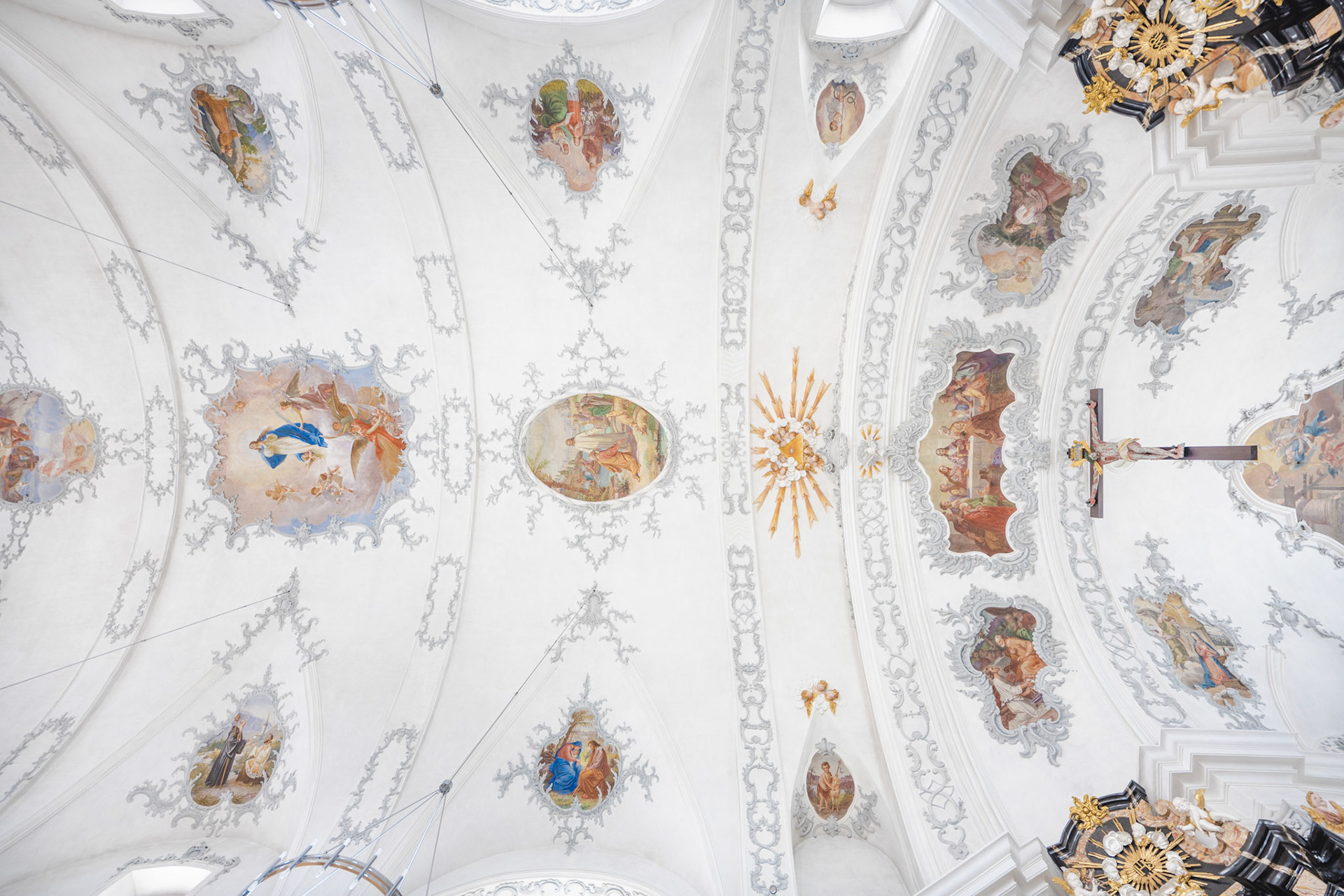
Recently, new development projects have been started in Andermatt, possibly expanding it into a large resort. Among them is the new Andermatt Concert Hall.
Andermatt Concert Hall
The Andermatt Concert Hall was designed by Studio Seilern Architects and completed in 2019. The project transformed an existing underground space designed for conventions into a concert hall with a total capacity of over 600 spectators and a 75 piece symphonic orchestra.
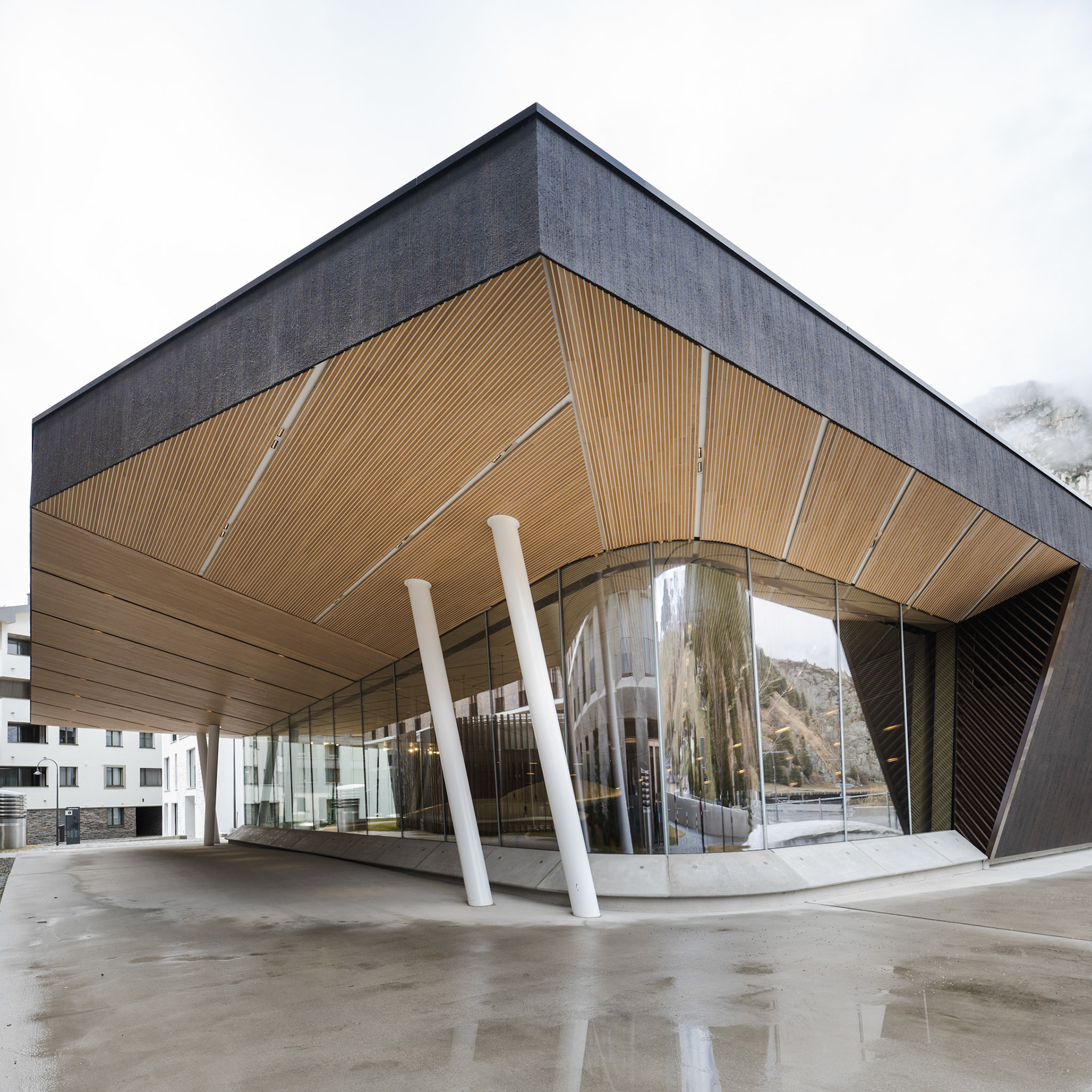

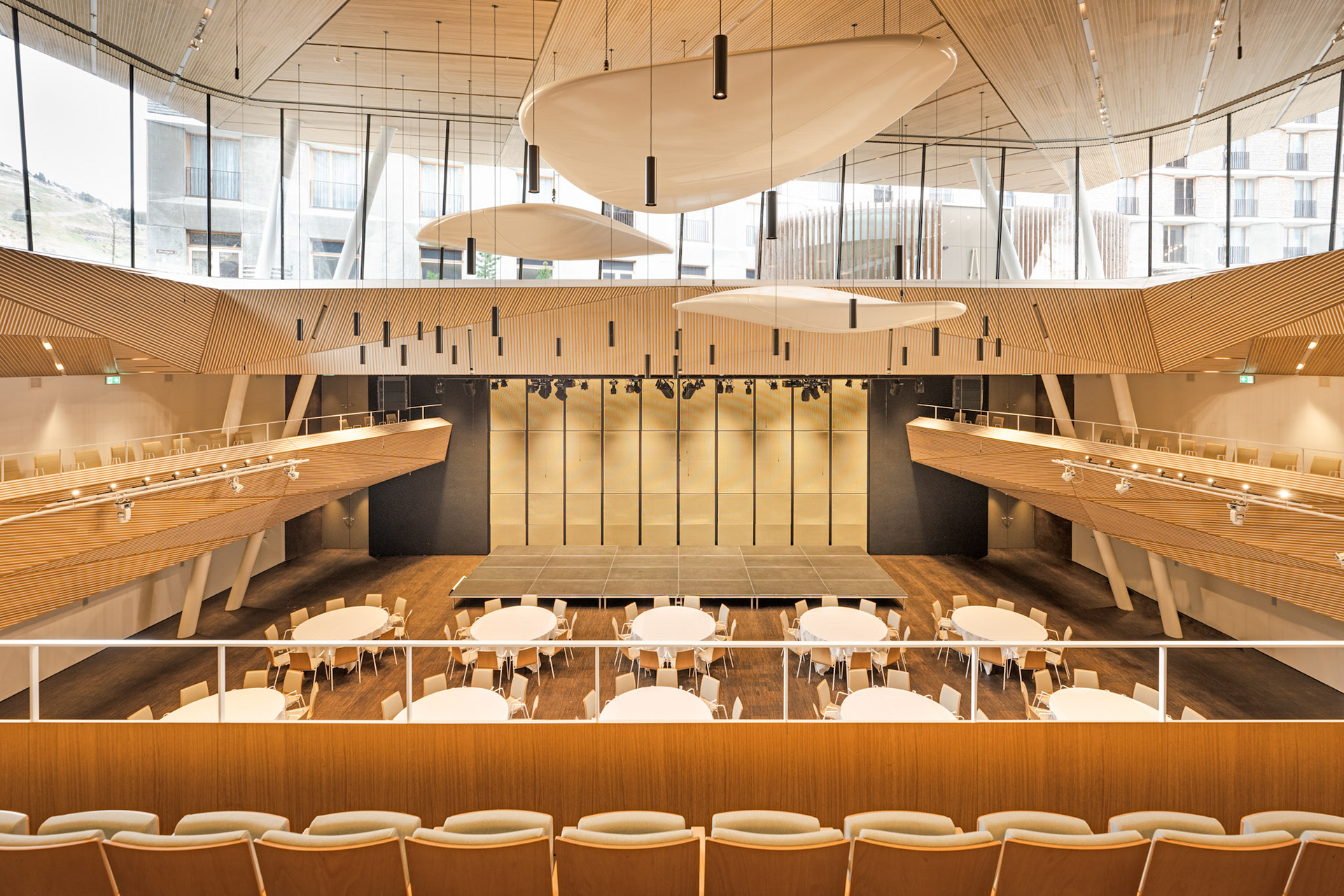
Day 3: Architecture of the second half of the 20th century
On our third day, we wanted to visit the Swiss Museum of Transport located slightly outside of downtown Lucerne. On our way from Uri through Schwyz to Lucerne on the east side of Lake Lucerne, we made stops at two 20th century churches. Although they were built in the same era, they are also very different.
Piuskirche
The Piuskirche in Meggen was built between 1964 and 1966 to plans by Franz Füeg. The 13 meter high cubic building has no windows - the outer walls between the steel supports beams consist of 888 slabs of 28mm thick, translucent, Greek marble. While the building appears almost white from the outside, the marble has rich yellow and orange tones from the inside.
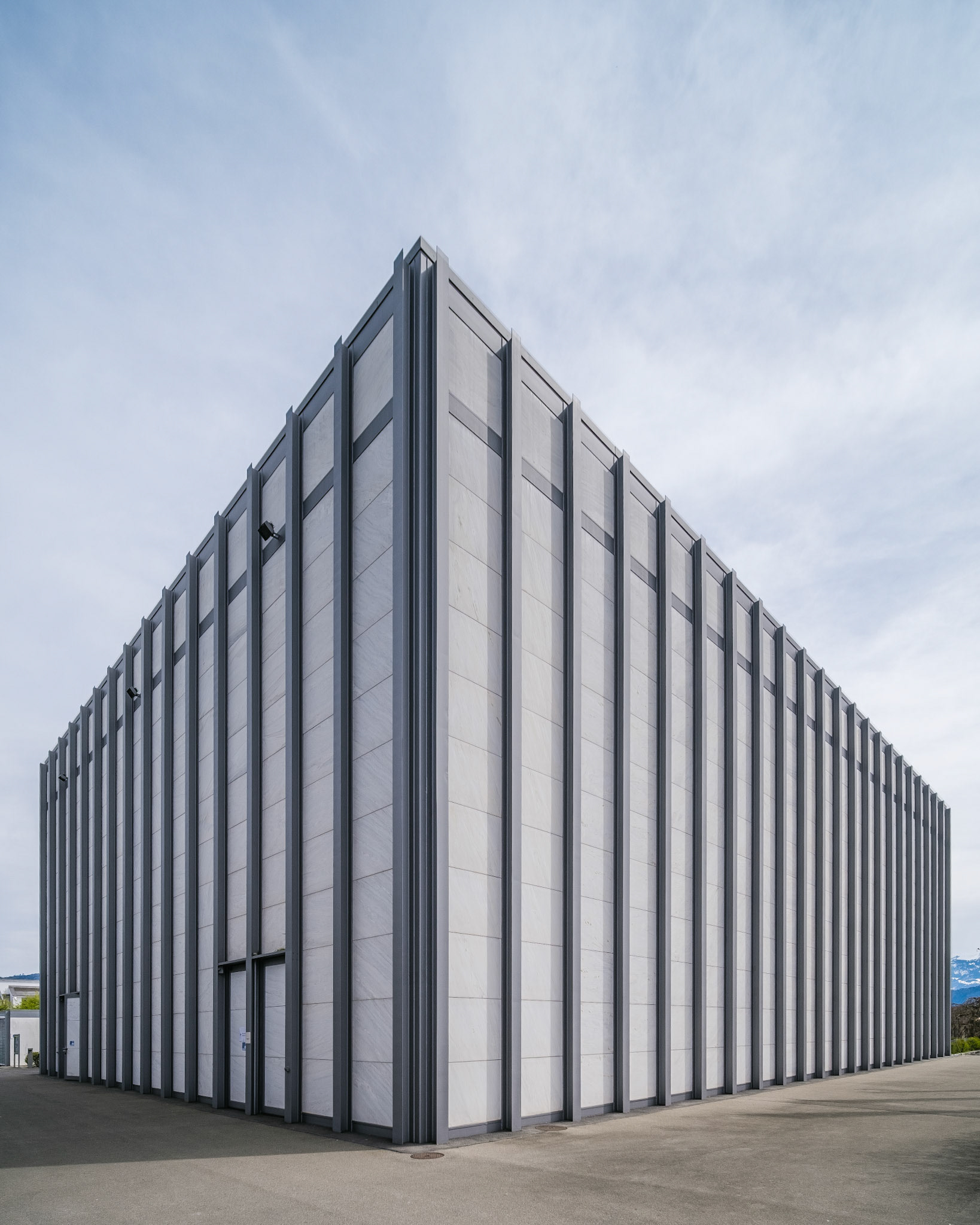
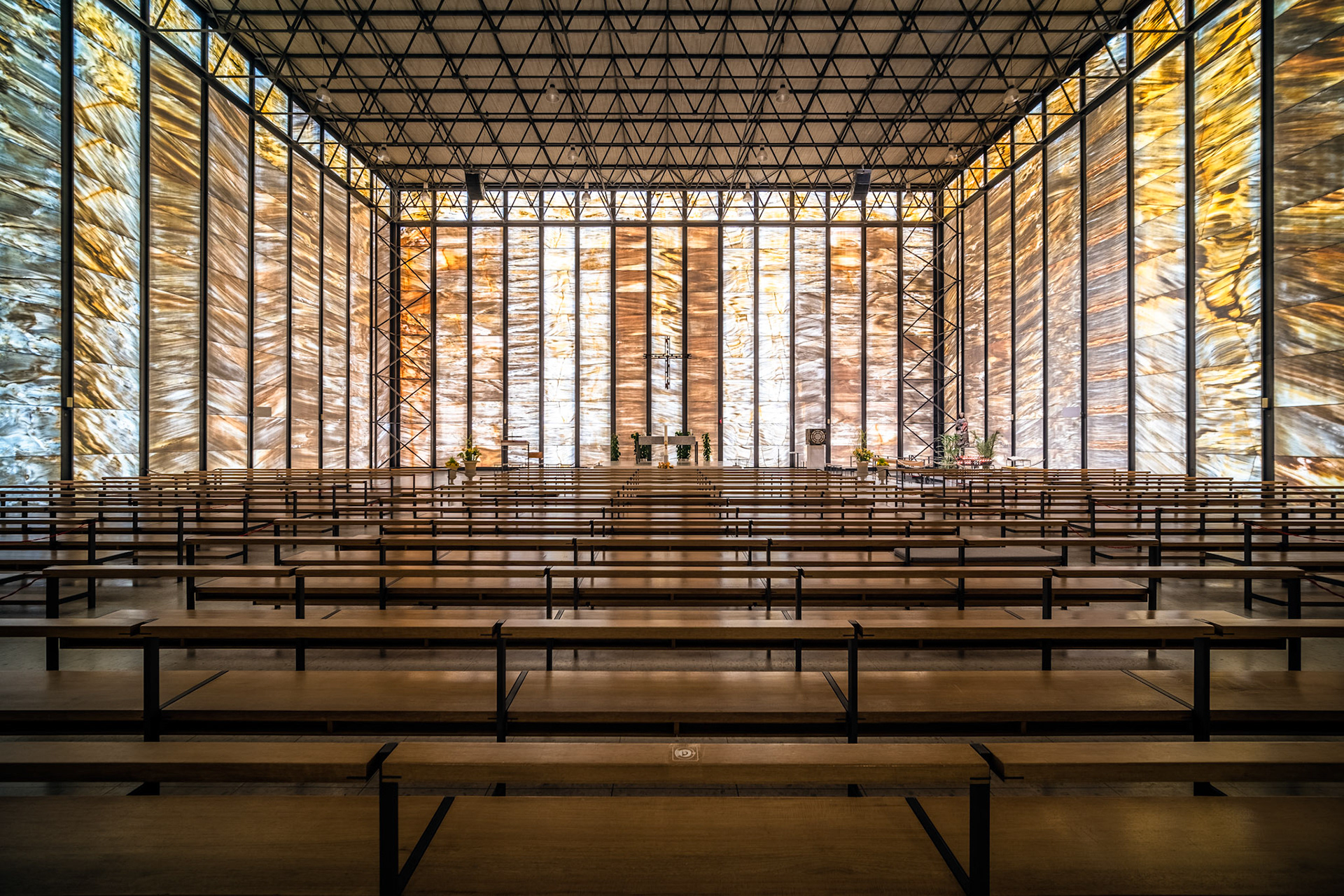
Johanneskirche
The Johanneskirche in the Würzenbach district of Lucerne was designed by Walter Maria Förderer and built between 1967 and 1970. As many of Walter Maria Förderer's churches, it uses exposed concrete as its main building material and gives the impression of being inside a sculpture made out of concrete.
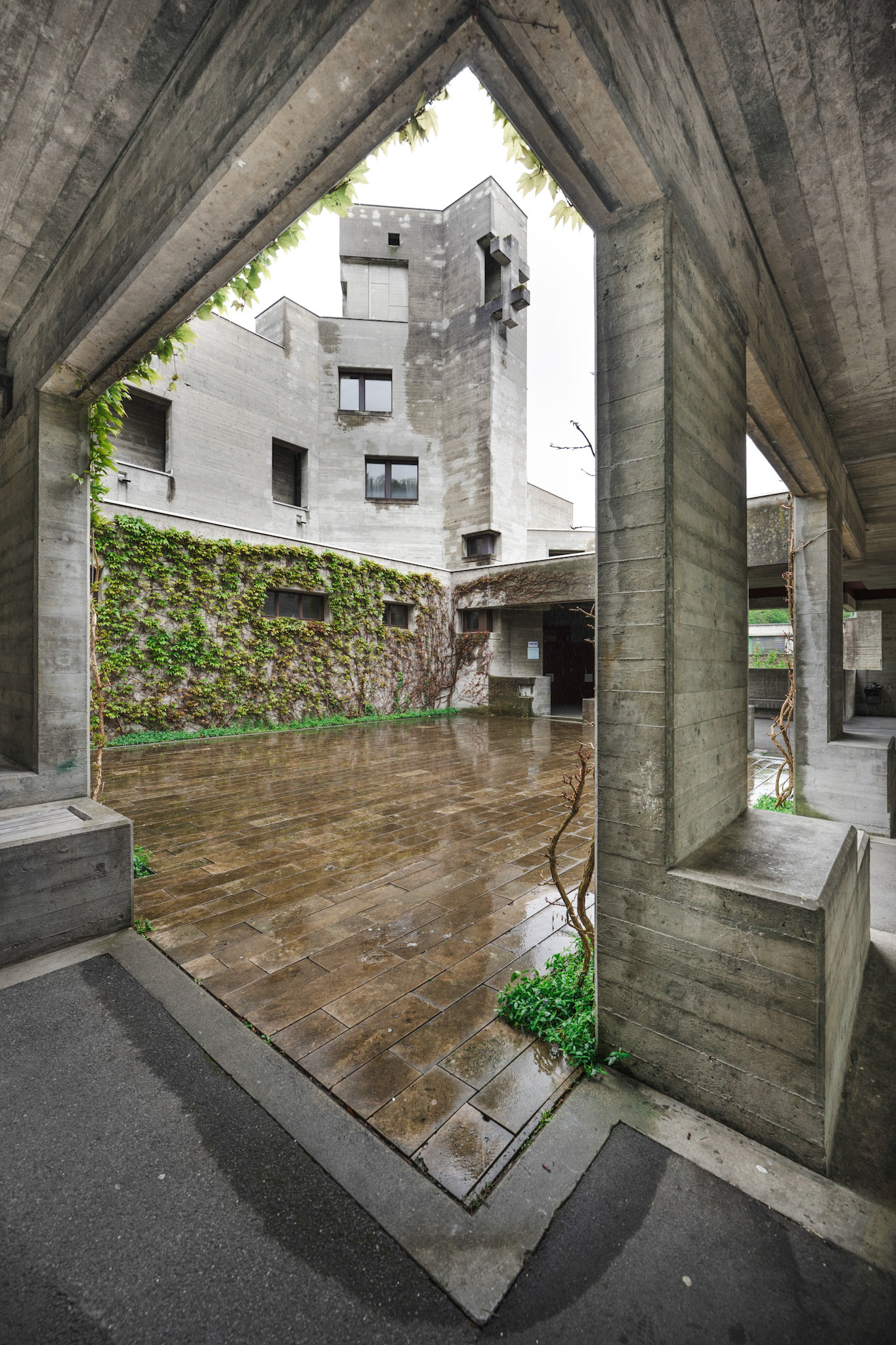
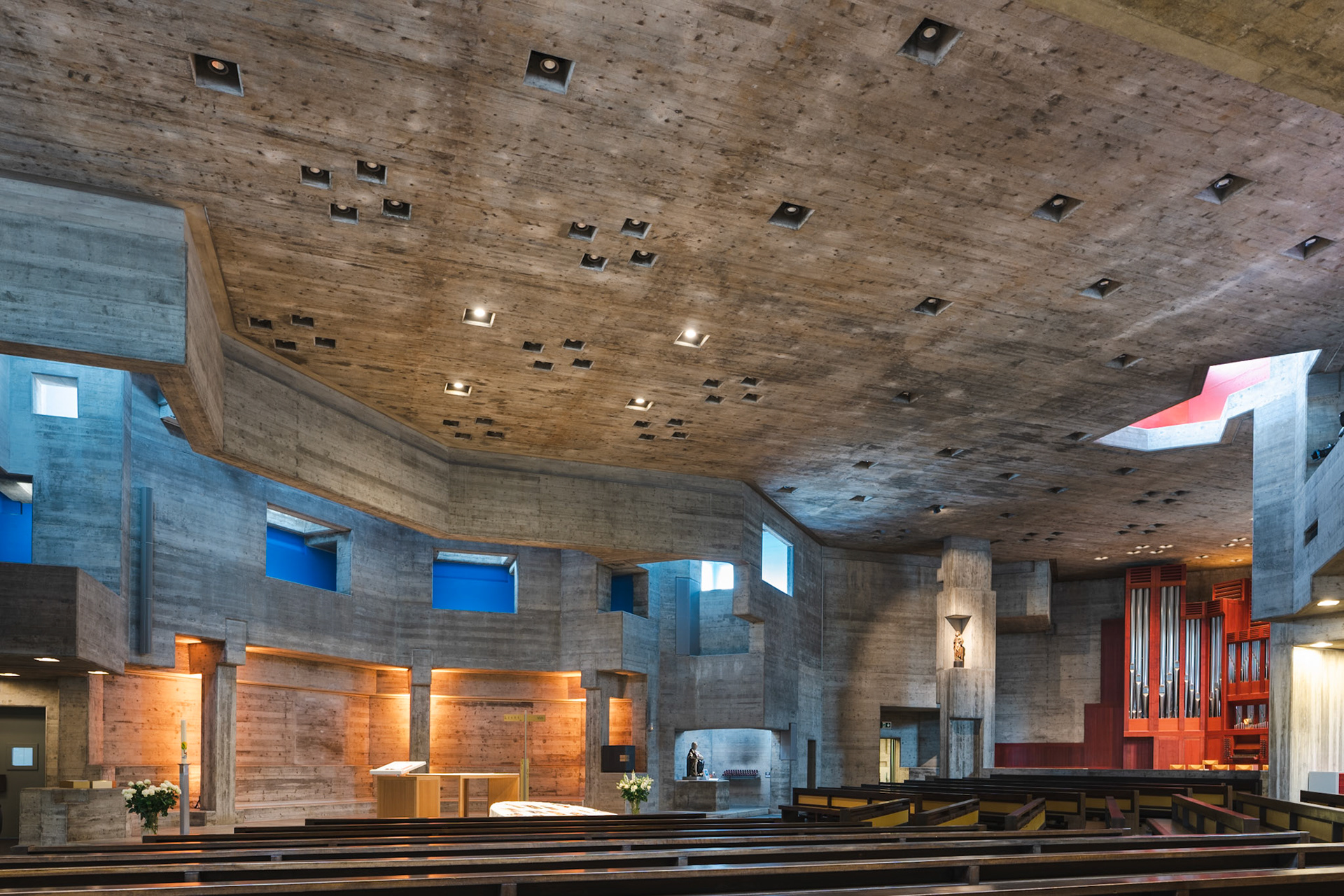

The church was renovated in 2001 under the direction of Hans Cometti und Arthur Welti.
Verkehrsmuseum
The Swiss Museum of Transport (Verkehrshaus der Schweiz) was built on the shores of Lake Lucerne between 1957 and 1959. It is Switzerland's most visited museum and shows exhibits from five domains of transport: air travel, trains, cars, boats and cable cars. It’s easy to spend a full day here, with many of the exhibits being interactive ! We spent most of our time in the Air and Space travel exhibition. This section of the museum was inaugurated on July 1st 1972 in the presence of astronauts John Glenn and Neil Armstrong and now contains exhibits such as the Red Bull Stratos capsule, the Eureca satellite deployed in space in 1992, and the Solar Wind Composition experiment used on the moon during Apollo 11 !
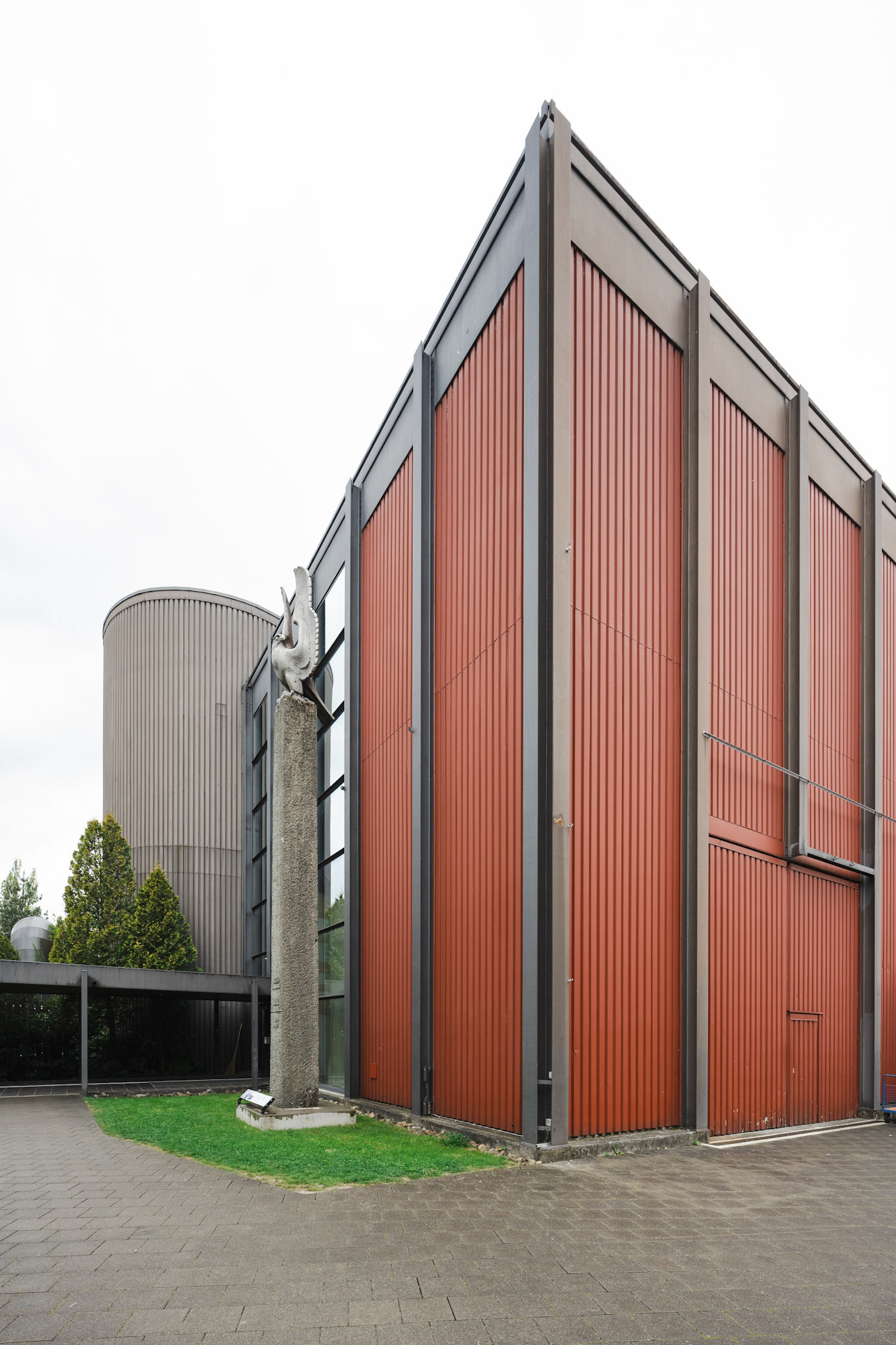
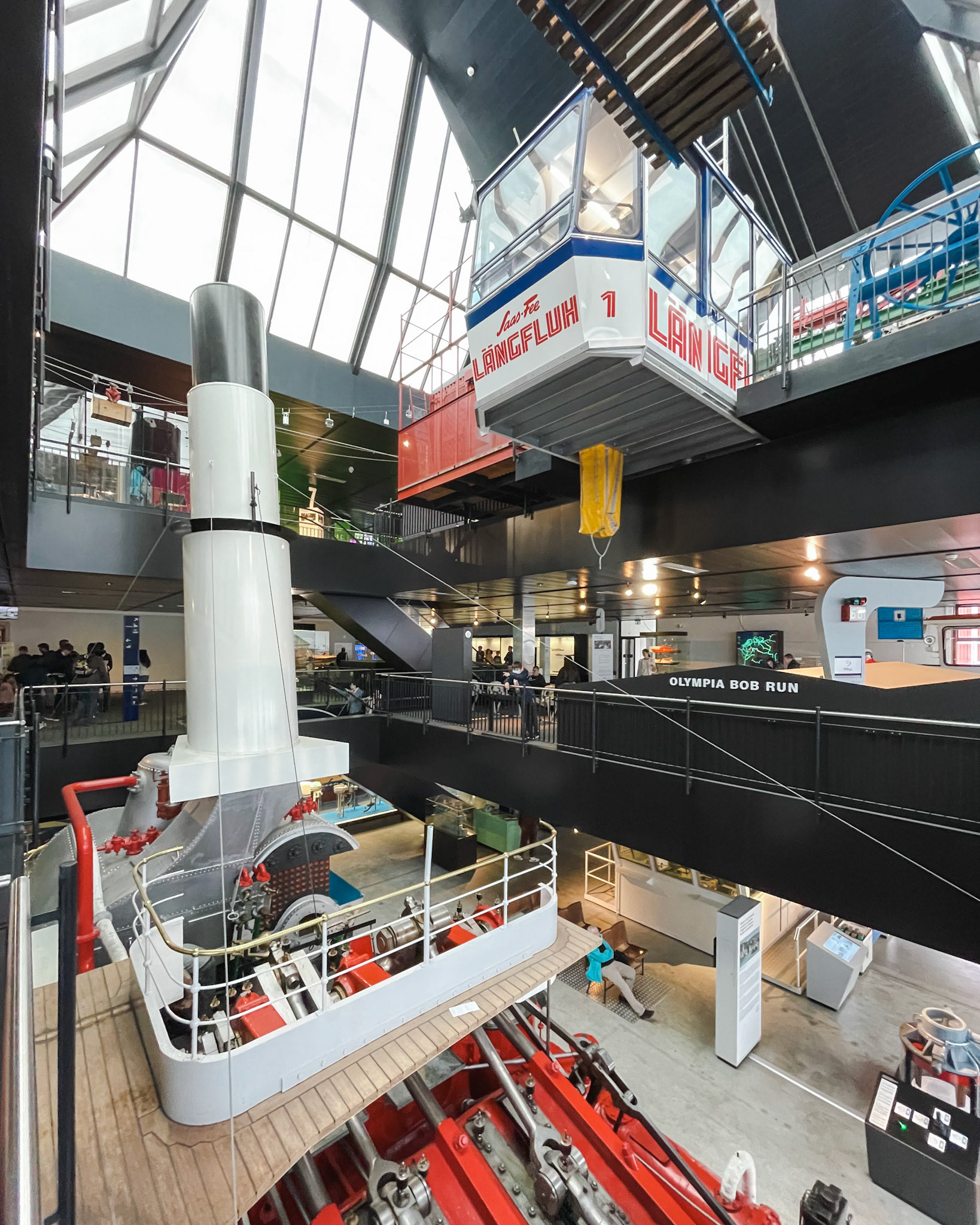
The museum buildings have been expanded multiple times since its inauguration. One of the most recent buildings is the Road Transport Hall designed by Gigon/Guyer and built between 2005 and 2009. Its facade is completely covered by 344 traffic signs.

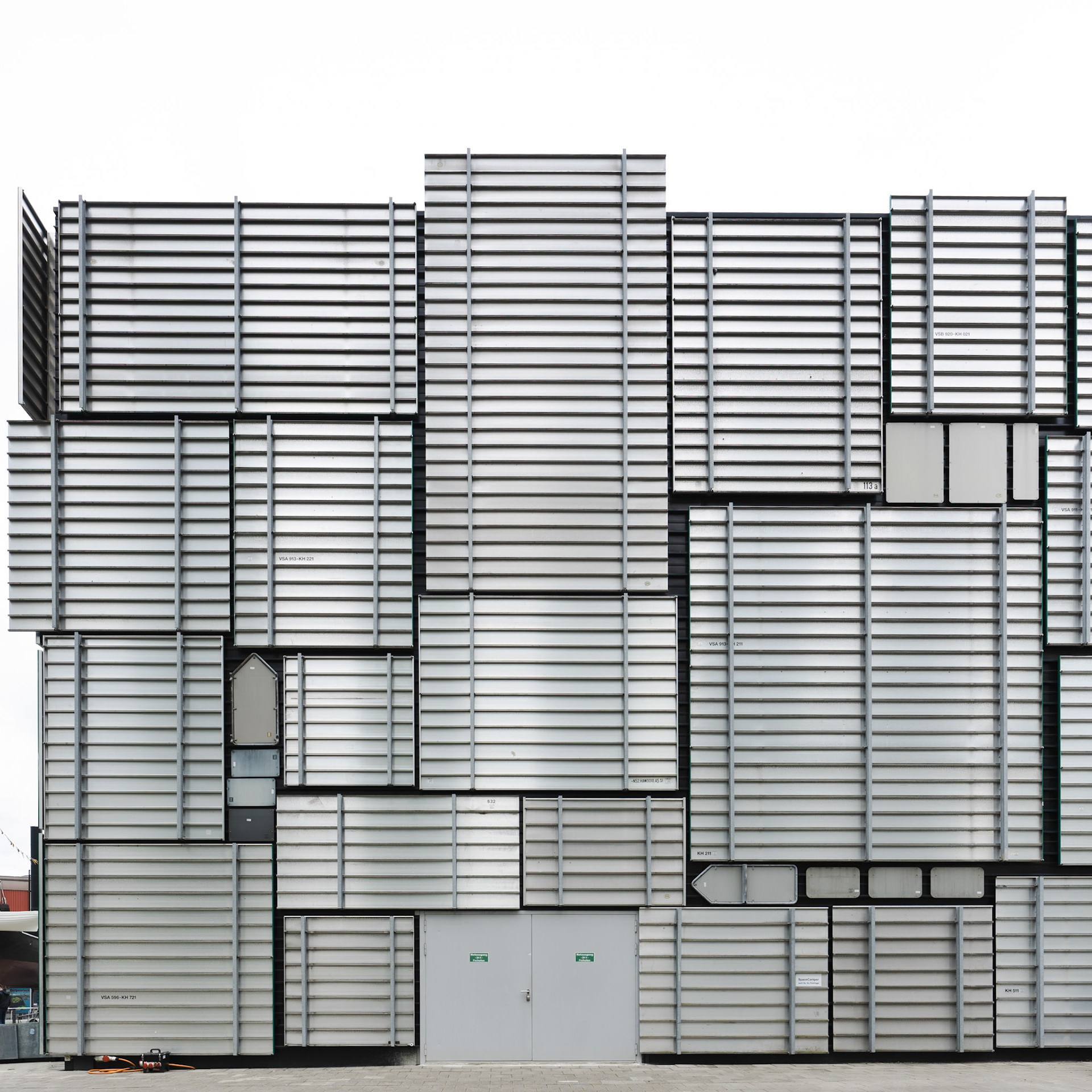
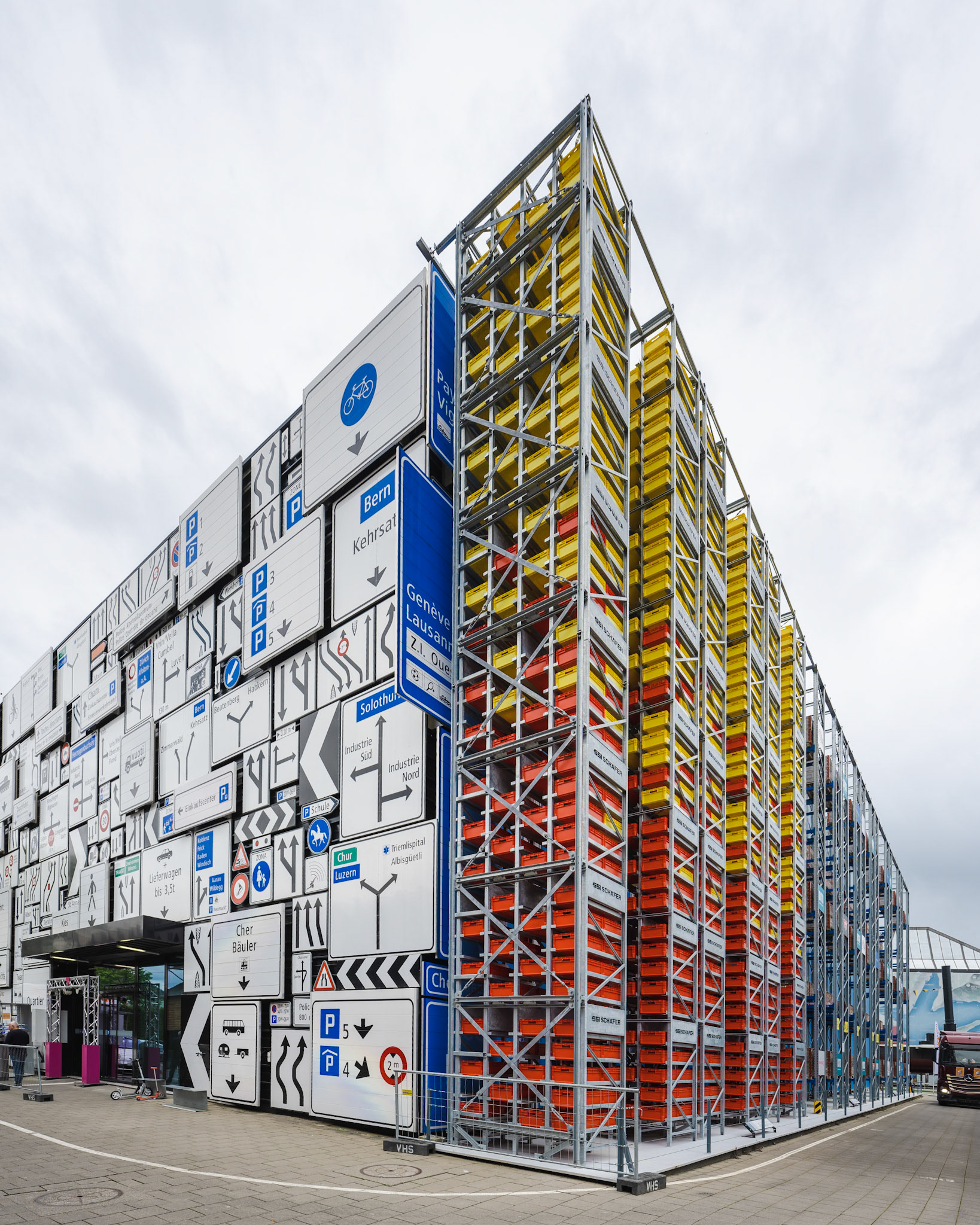
Hans Erni Museum
Hans Erni was a Swiss painter and graphic designer who lived from 1909 until 2015.
The Hans Erni Museum in Lucerne opened in 1979 inside a hexagonal building designed by architect Jean-Marie Ellenberger. At the request of Hans Erni, the museum is located on the grounds of the Swiss Museum of Transport in order to arouse the interest of visitors in science, technology and progress, but also to counterbalance the presentation of these themes inside the Verkehrshaus.
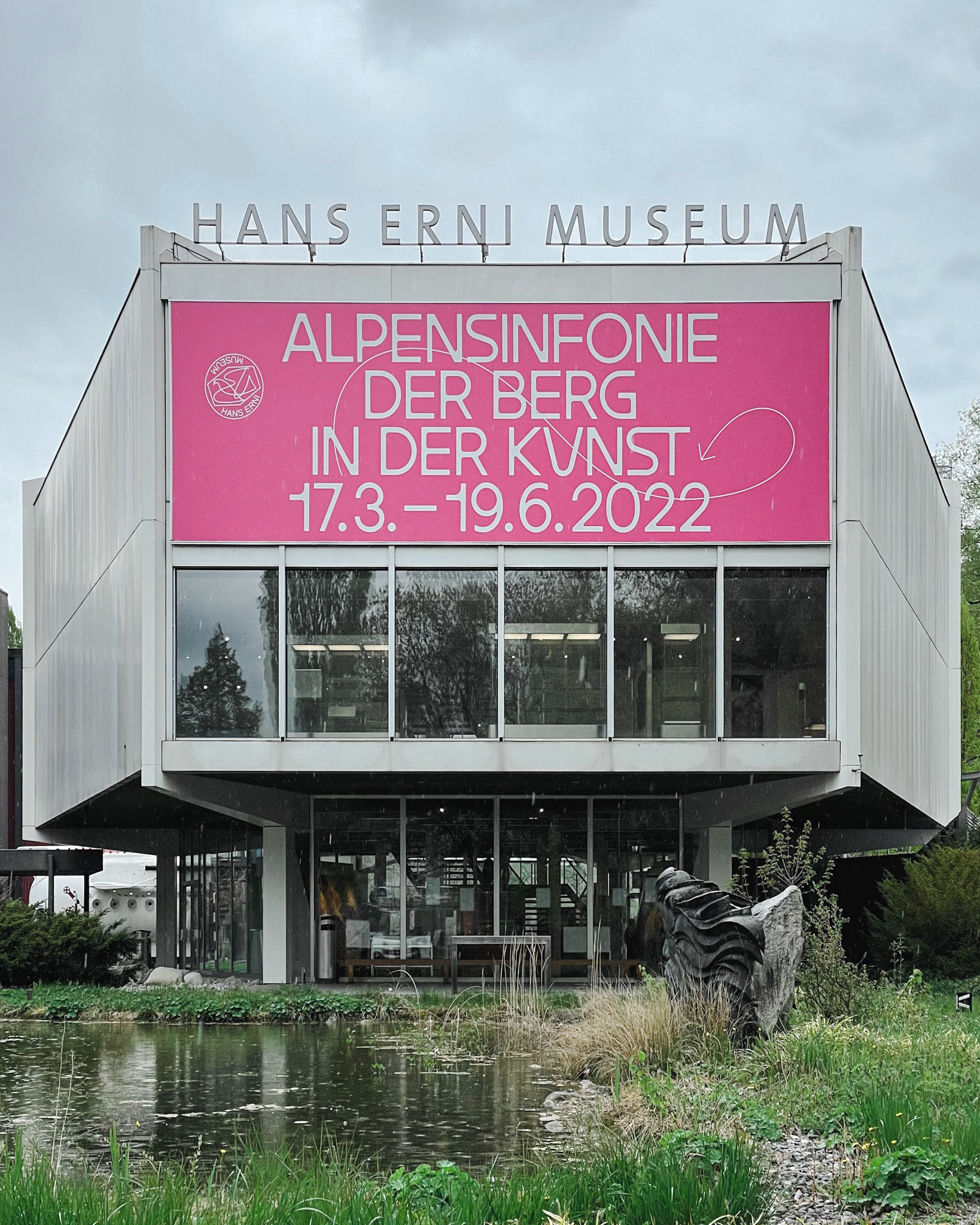
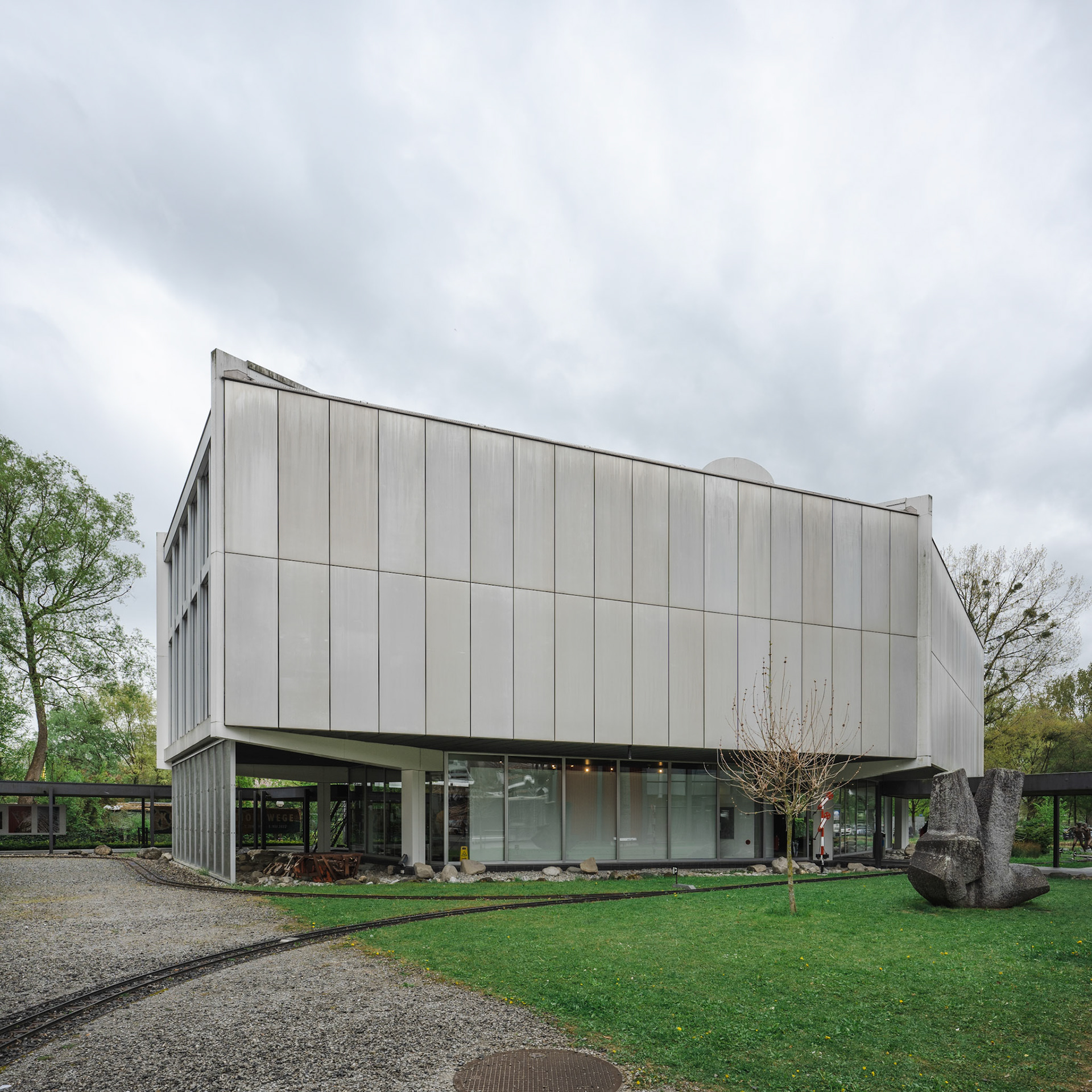


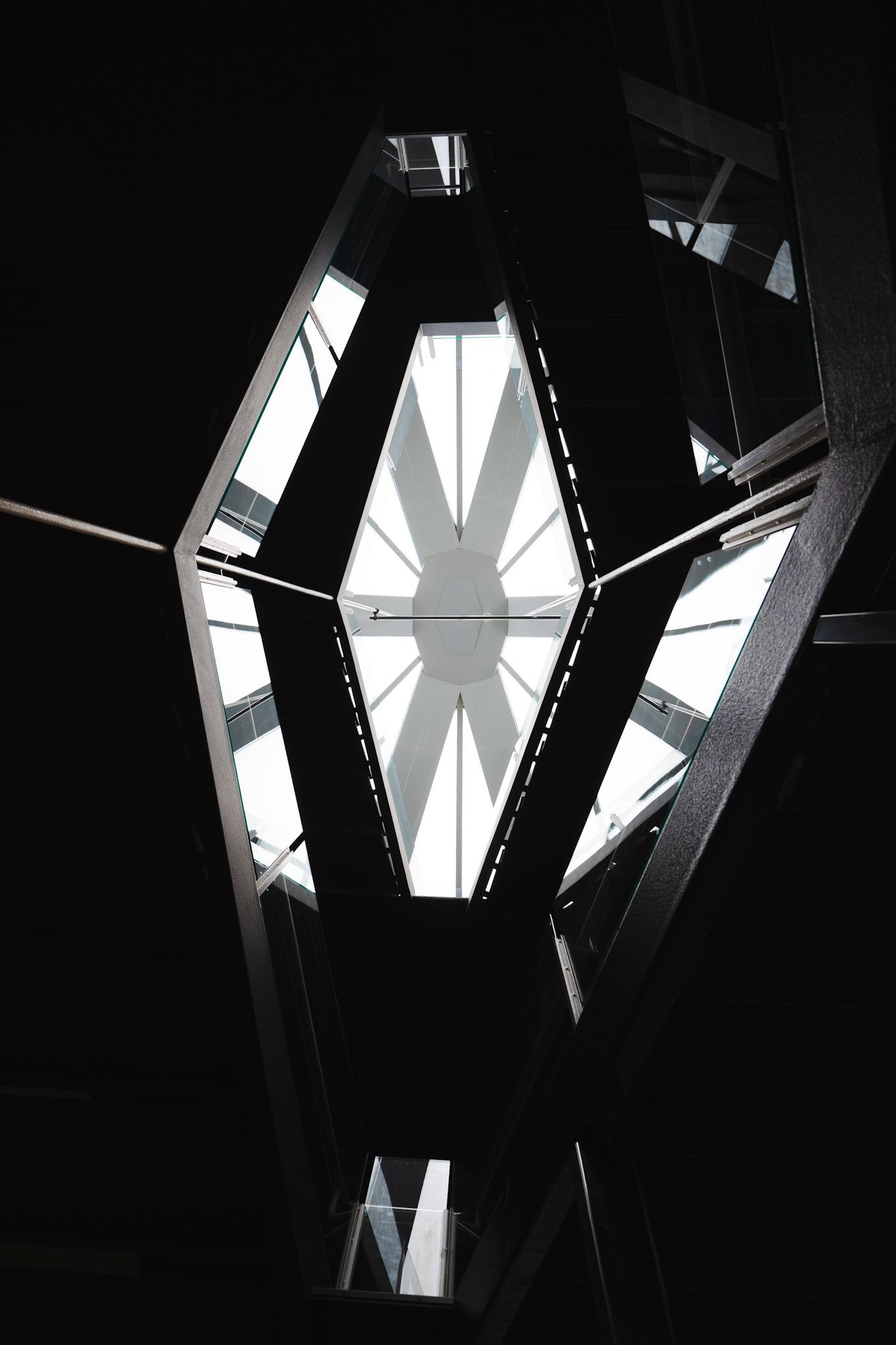
Day 4: 19th century architecture
It was time to say goodbye to the Stüssihostatt and to get to our second vacation home. On our way to the Old Pächterhaus in Heiligkreuz, we stopped in Lucerne. With a population of over 80000, Lucerne is the most populous city in Central Switzerland. Already in the second half of the 19th century, it had become a center of modern tourism and a popular destination for artists and royals: German composer Richard Wagner lived in Luzern from 1866 until 1872, English Queen Victoria visited in 1868 and American writer Marc Twain visited in 1878 and 1897. We started our exploration with some of the museums and attractions these early visitors might also have experienced.
Gletschergarten
The Lucerne Glacier Garden opened in 1873 after Josef Wilhelm Amrein-Troller had discovered glacial pots during construction work in 1872. The glacial pots date from the last ice age 20000 years ago when Lucerne was covered by 800m thick ice.
Among the attractions of the Gletschergarten is also the mirror maze, built originally for the National Exhibition in Geneva in 1896 and installed at the Glacier Garden in 1899.
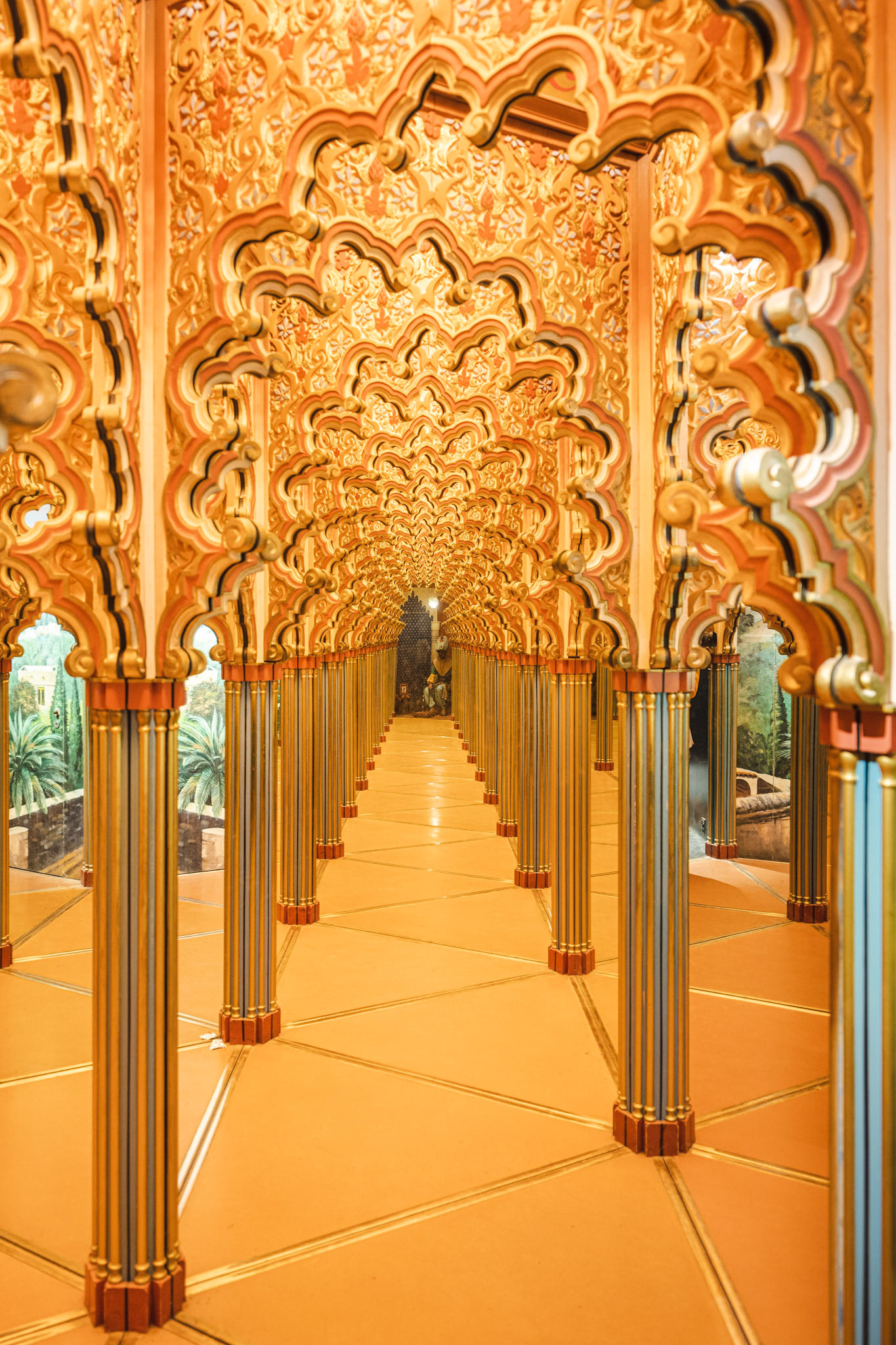

The new Felsenwelt attraction was designed by Miller & Maranta and opened in 2021.
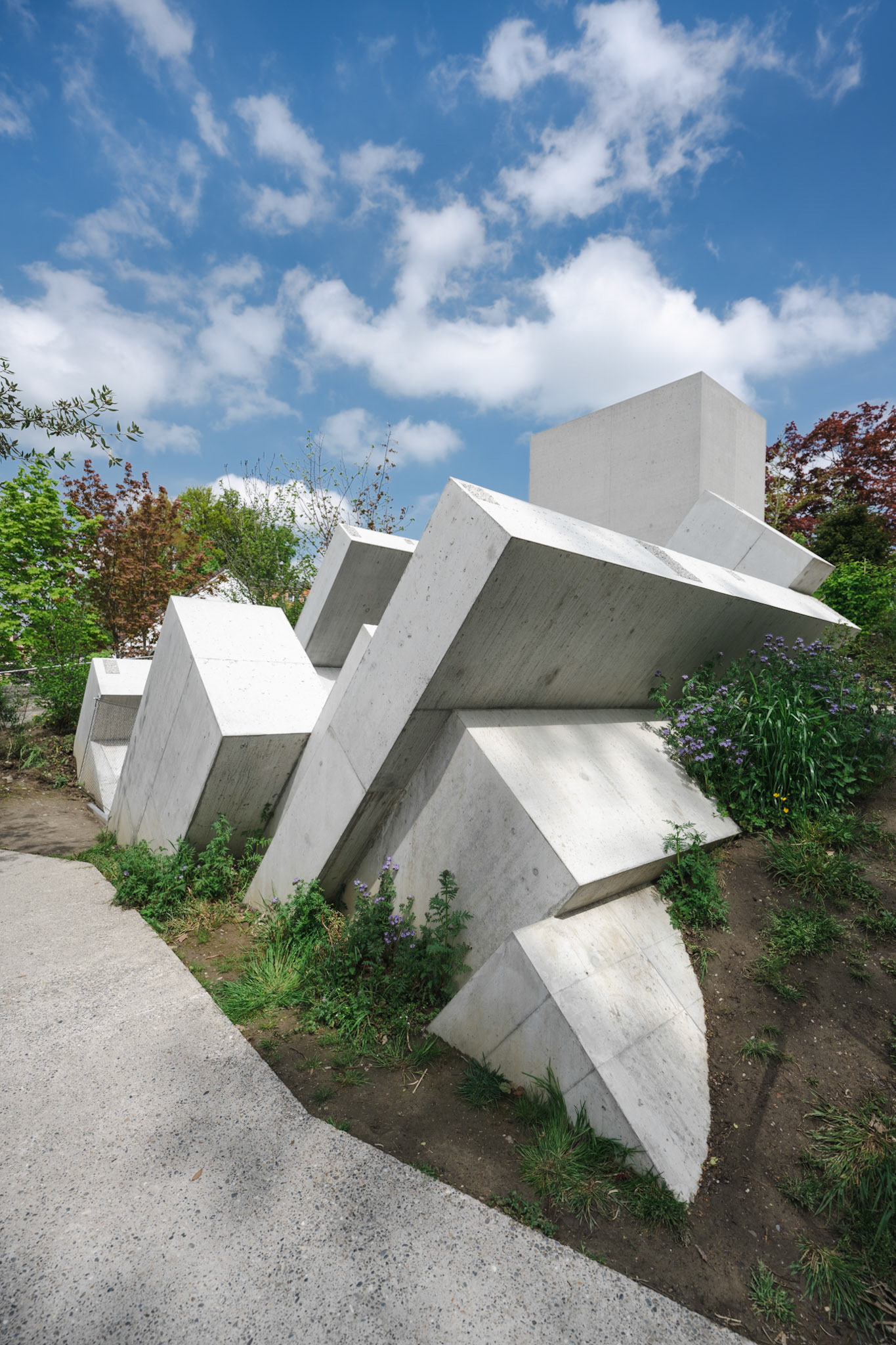
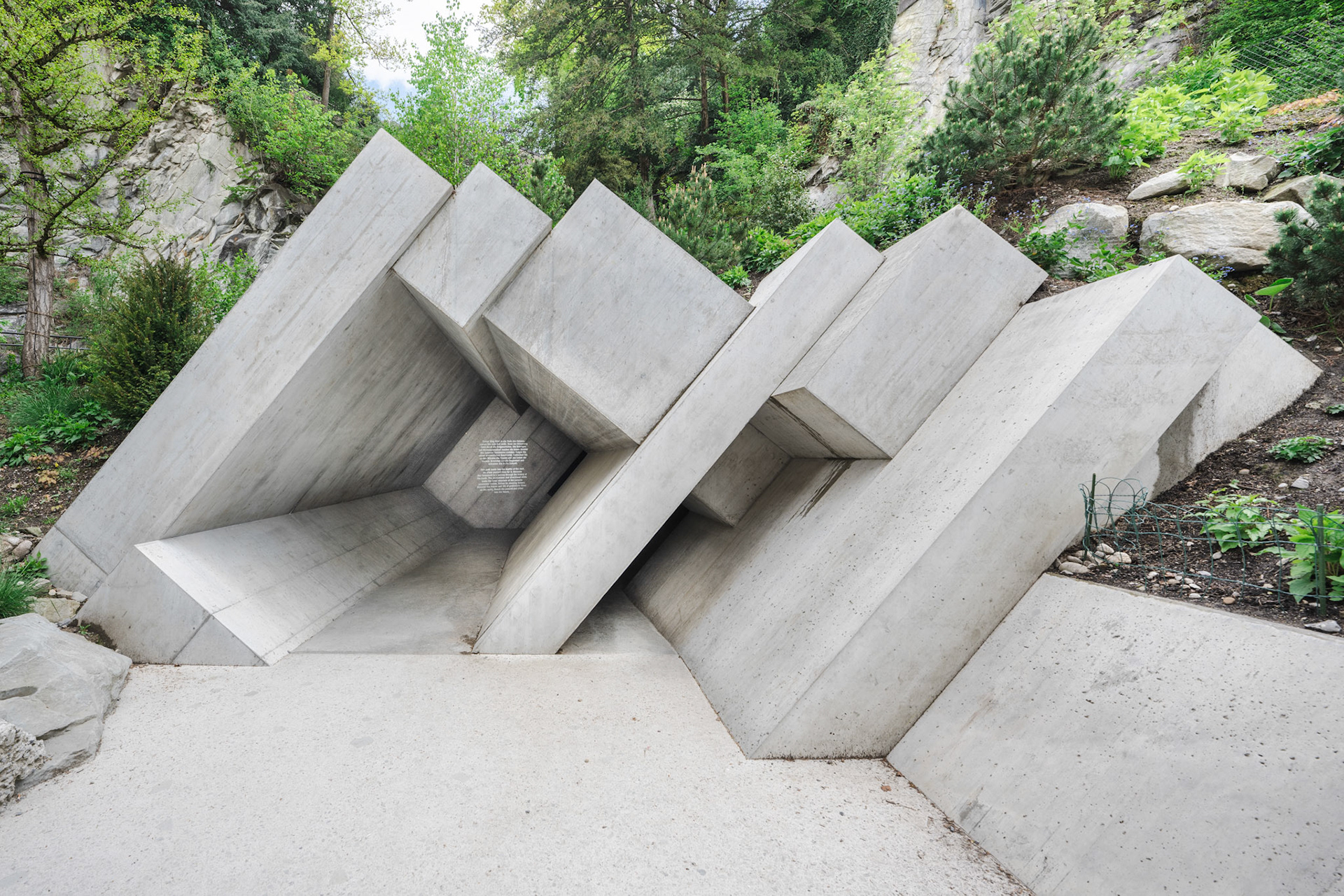
Bourbaki Panorama
Bourbaki Panorama is a circular painting showing the internment of more than 60000 men of the French army at the end of the Franco-Prussian war. It was painted in 1876 by Edouard Castres who had volunteered as a medical assistant during the war. He had the help of 10 assistants, among them Ferdinand Hodler. After having shown the 14m high and 114m long painting in Geneva, Benjamin Henneberg transferred it to Lucerne in 1889.
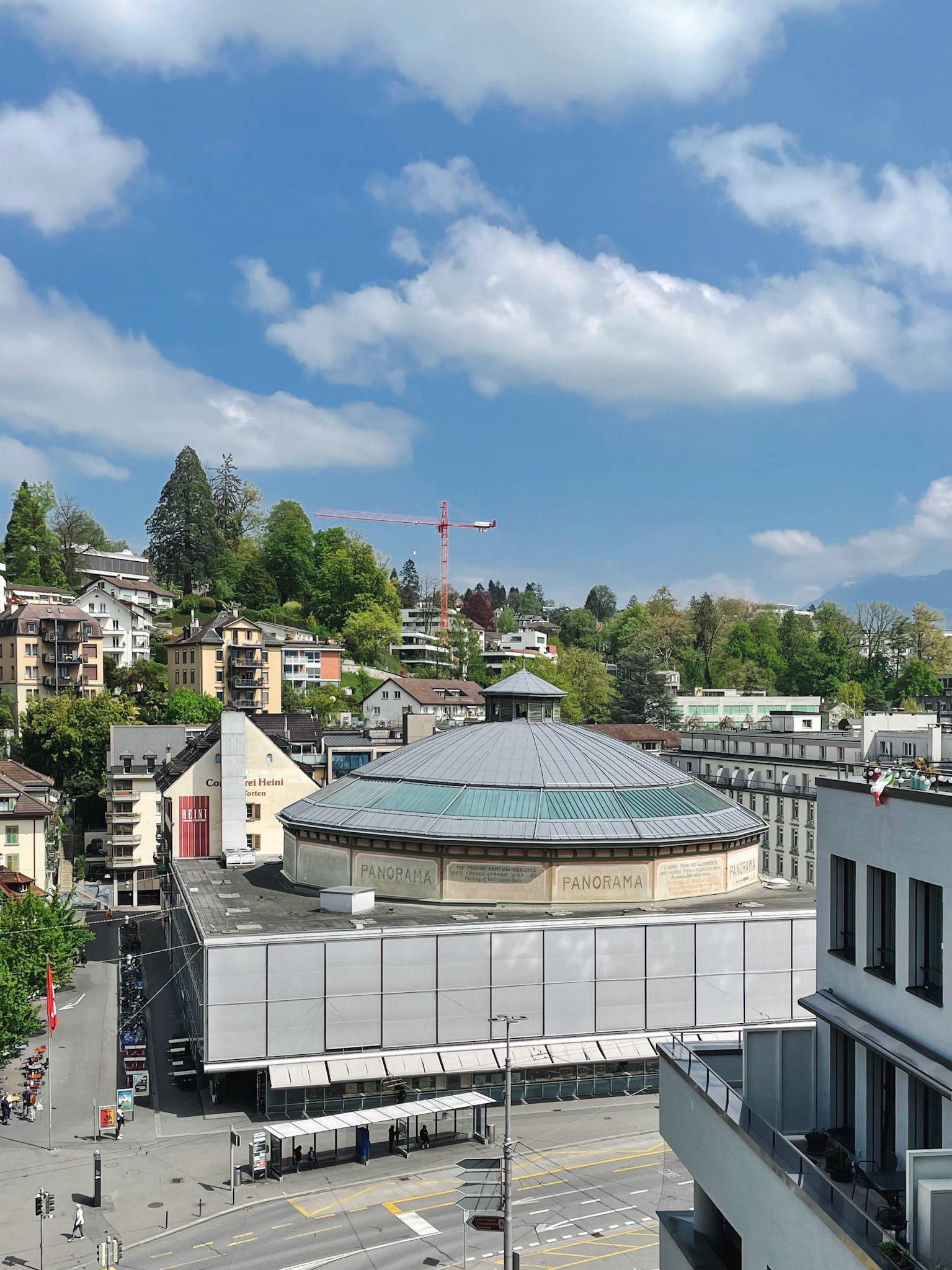

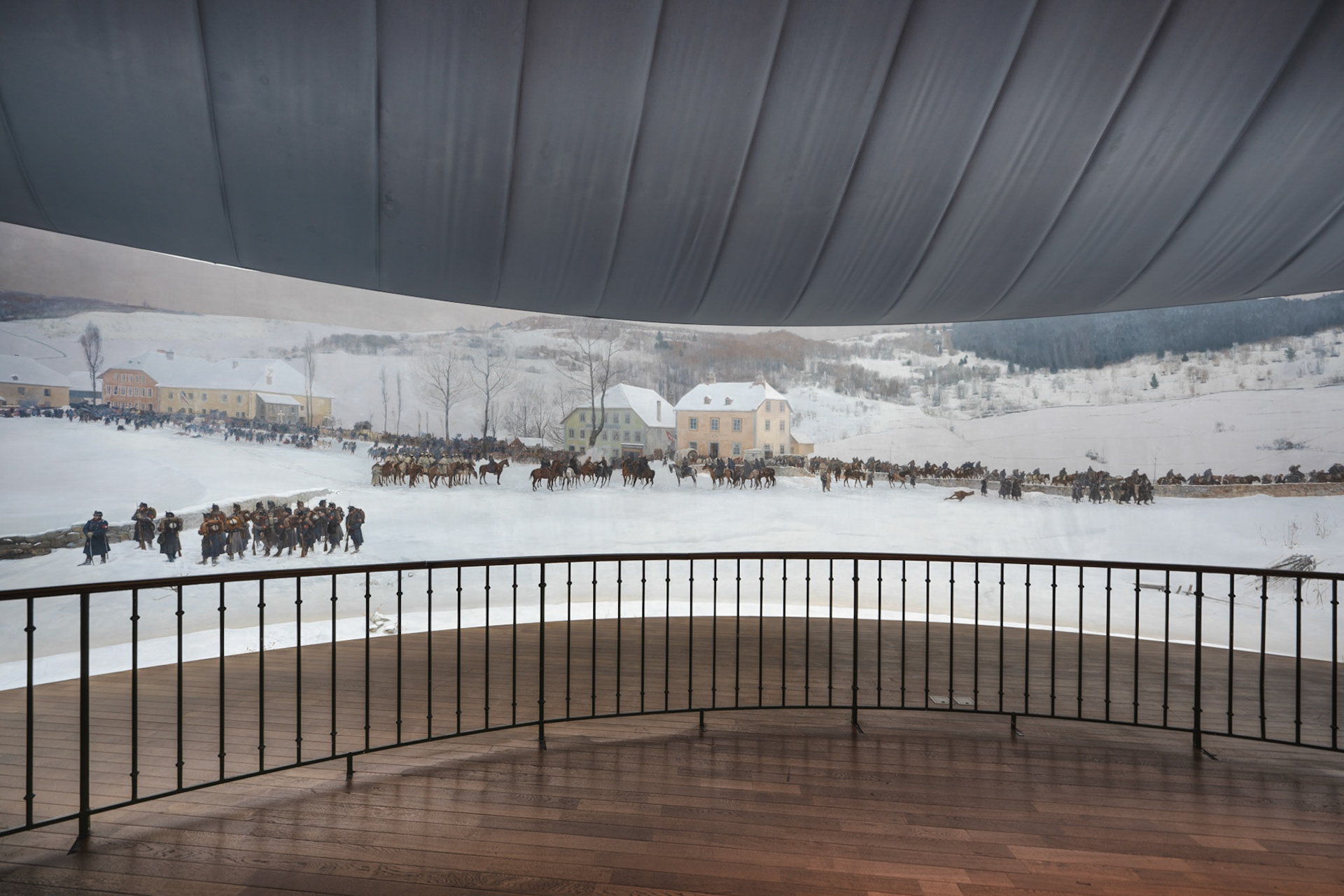
Due to the increasing competition with movie theaters, Benjamin Henneberg sold the building and painting to Lucerne company Koch & Söhne who installed Europe's first mechanical parking garage in it ! Using a turntable (which is still functional today), the almost round shape of the building was optimally used by requiring only one free space in order to get access to any parked car. Unfortunately, the painting was cut down in height during this time so that today, we can only see the bottom 10m, missing out on some of the original sky. Between 1996 and 2000, the building was completely transformed to plans by Werner Kreis and Ulrich and Peter Schaad and now is home, among others, to the painting, a movie theater and Lucerne's library.
Kapellbrücke
Of course, we also walked across the Kapellbrücke, Lucerne’s famous bridge, originally built in the 14th century. It is the world’s oldest surviving truss bridge and the oldest wooden covered bridge in Europe. A fire in 1993 unfortunately destroyed a large part of the 200m long bridge as well as some of the 17th century paintings it contained, but it was luckily restored since.
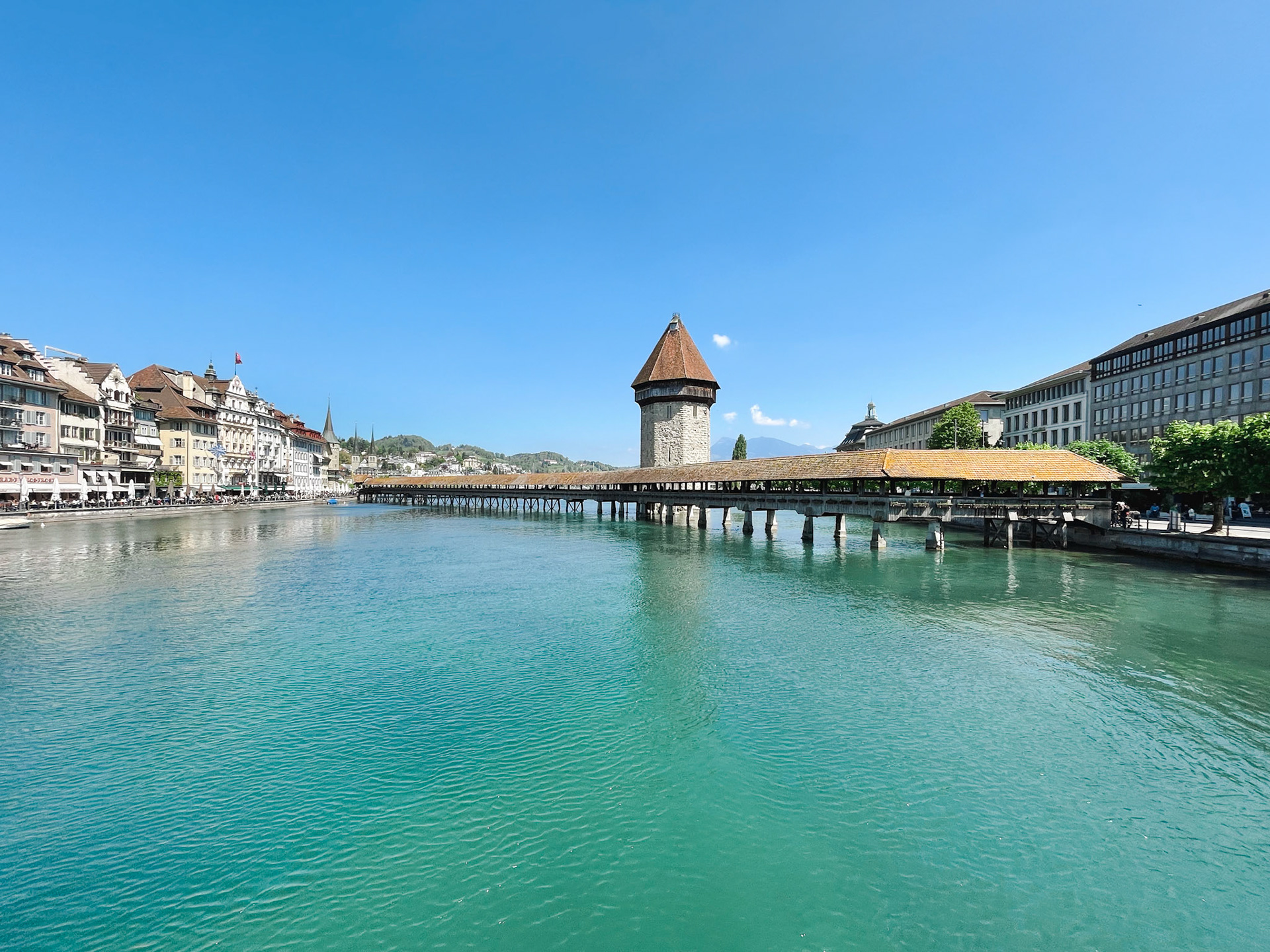

With many restaurants, coffee and ice cream shops on the river bank, it was the perfect place to relax and get some fresh air and sun !
Upon leaving Lucerne, we followed our car’s GPS to Heiligkreuz, and, let’s say the default instructions got us on the shortest path, taking a shortcut between Malters and Entlebuch through the countryside … on a tiny, narrow road ! Our tip: the longer route through Wolhusen is much nicer to drive!
Altes Pächterhaus
The Old Pächterhaus in Heiligkreuz was built between 1843 and 1845. It is located inside the Biosphere Entlebuch at a height of 1130m above sea level, 400m above the village of Hasle.
The building features two full floors as well as two floors in the protruding roof and a barn attached to the east side. Its facades are clad with wooden shingles.

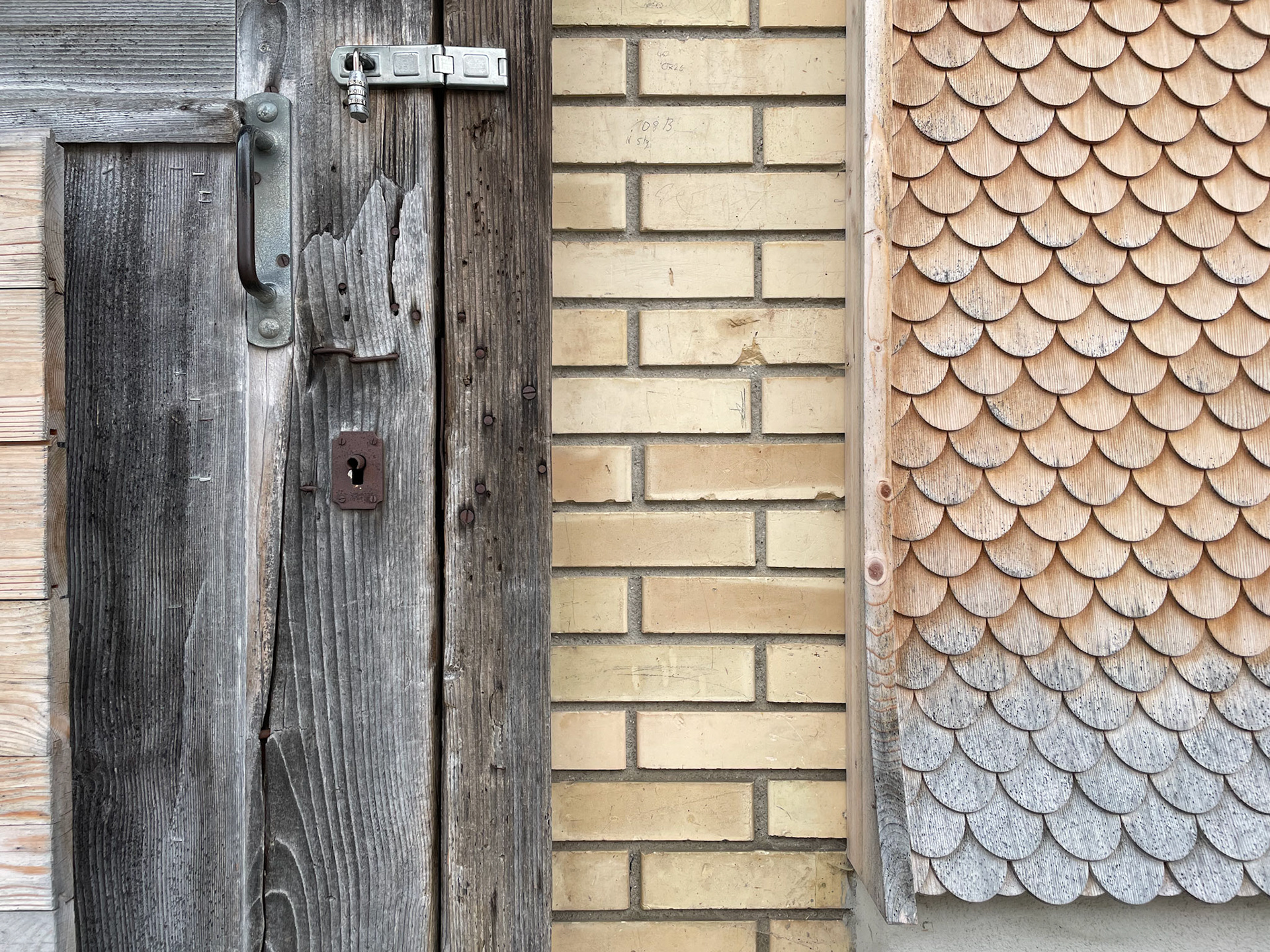
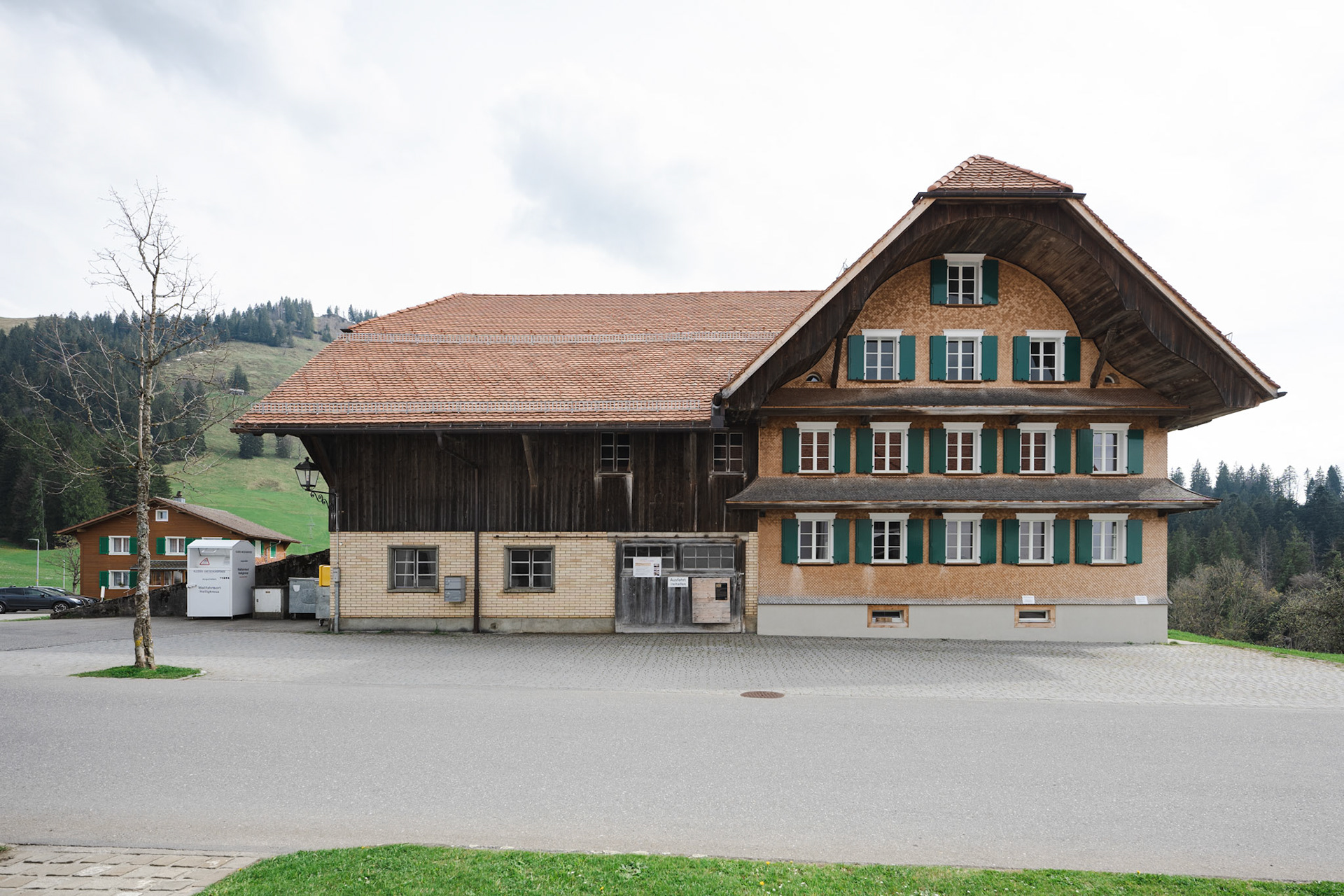
It was used until the 1990s and then renovated in 2013. It now contains two vacation apartments on the two lower floors.
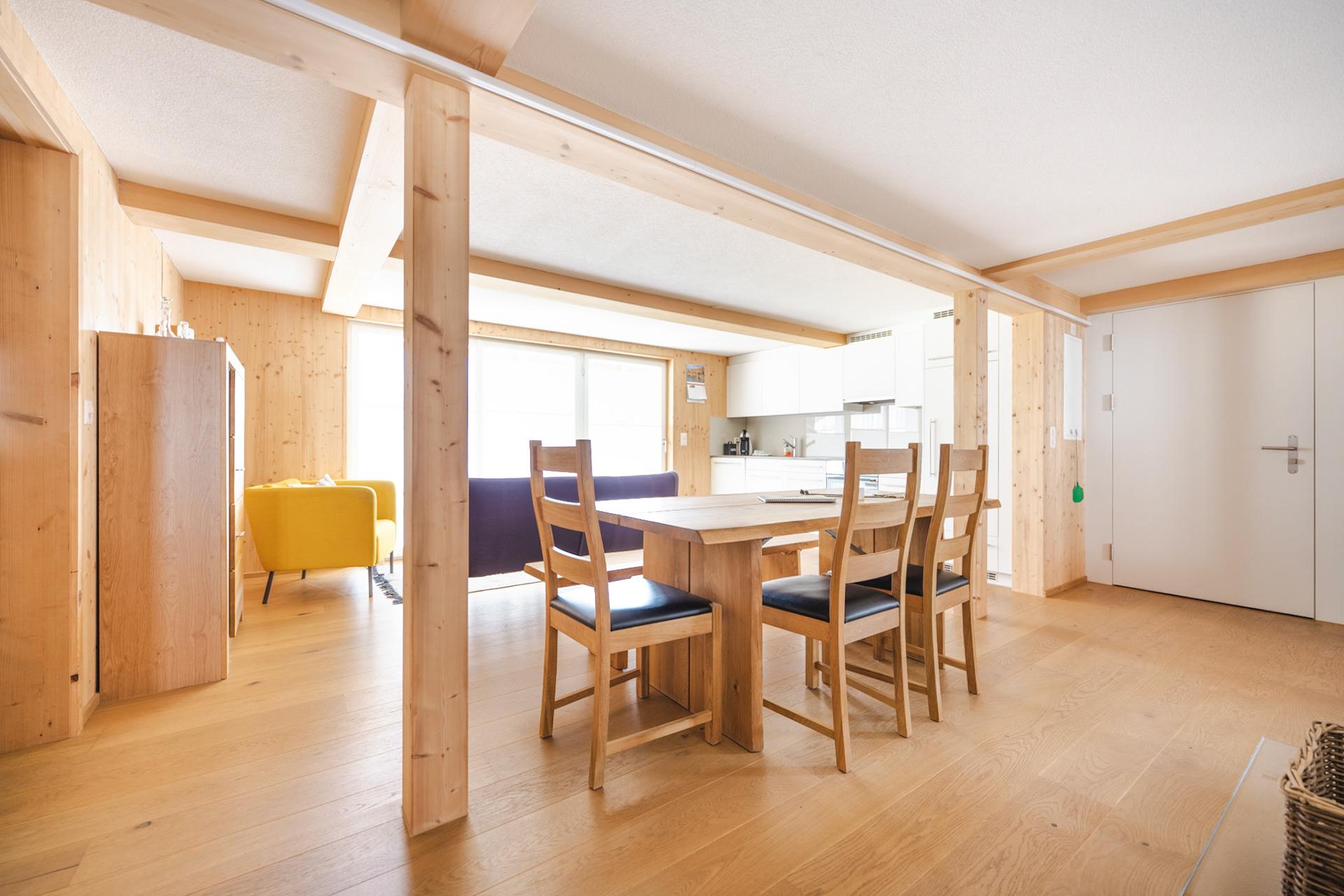

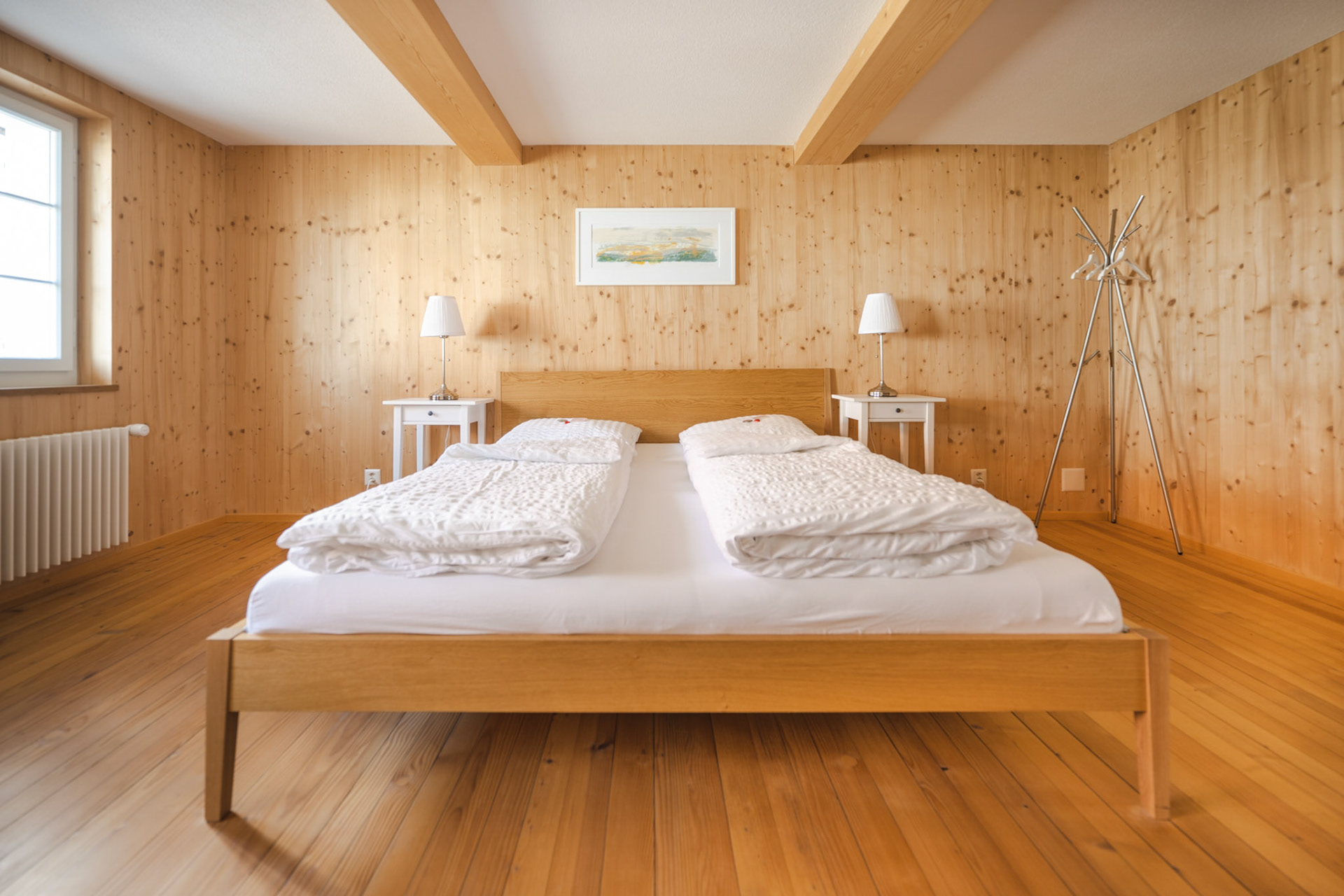



The closest neighbor to the Altes Pächterhouse, literally just across the street, is the Wallfahrtskriche Heiligkreuz, making this a particularly quiet and peaceful vacation destination.
Wallfahrtskirche Heiligkreuz
The Heiligkreuz Church near Hasle was built in 1588 at the location where in 1344 Johannes von Aarwangen, a Cistercian brother from the monastery of St. Urban, had built a chapel and a hermit's house. It received its present appearance in 1753/1754 when architect Jakob Singer added a confessional and a tower to the originally late Gothic chapel and redesigned the interior in the Rococo style.
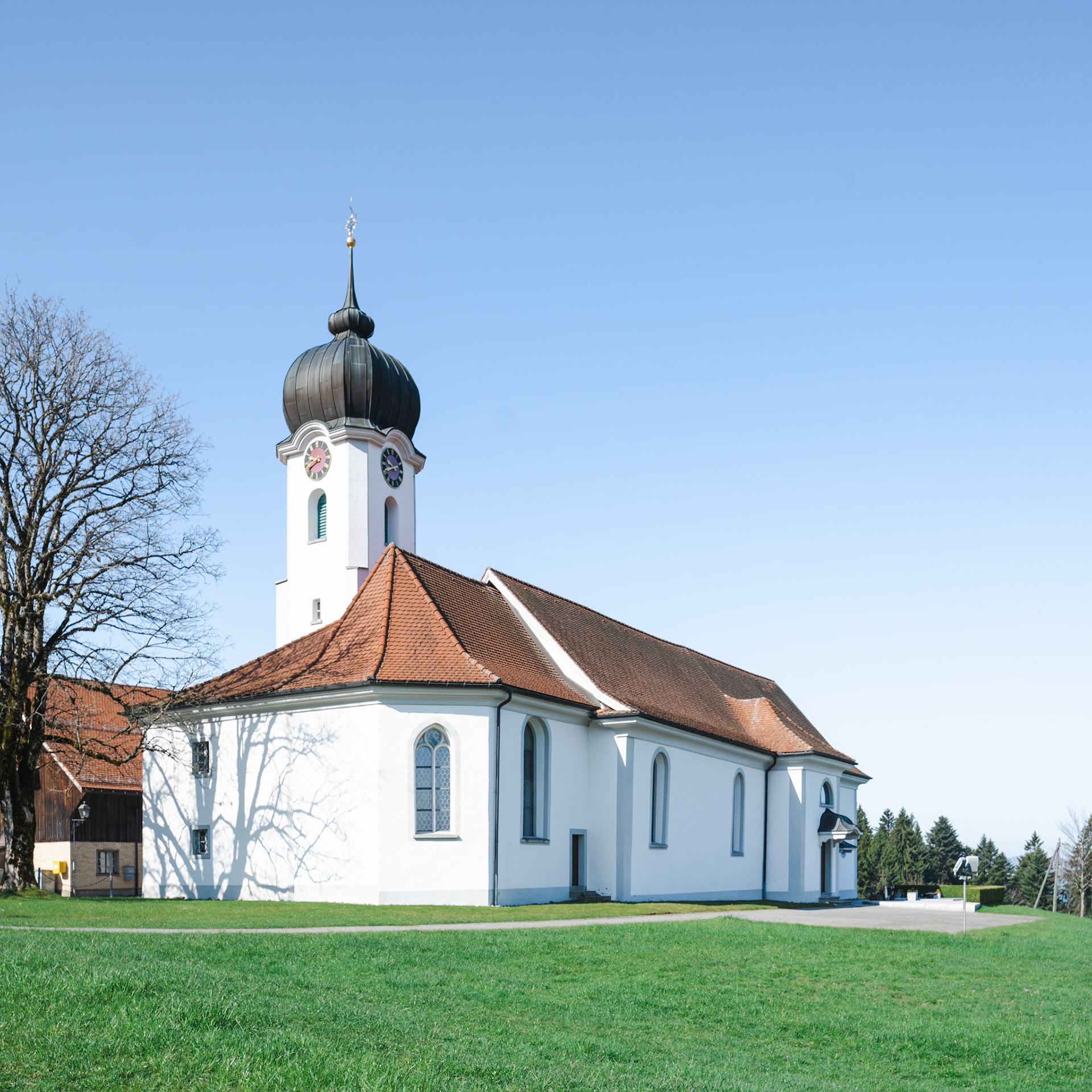

The frescoes on the walls were discovered during restorations in 1976.
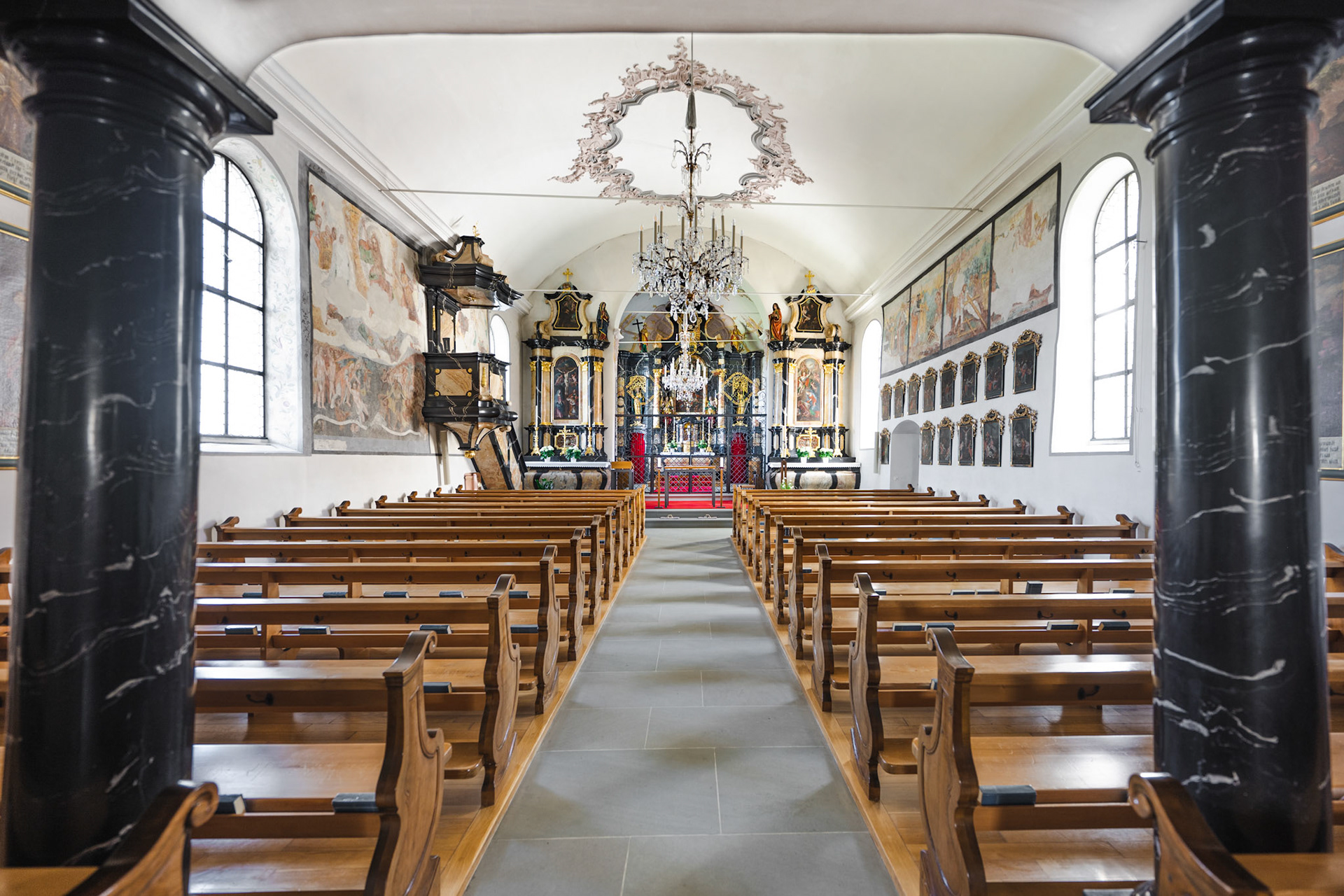
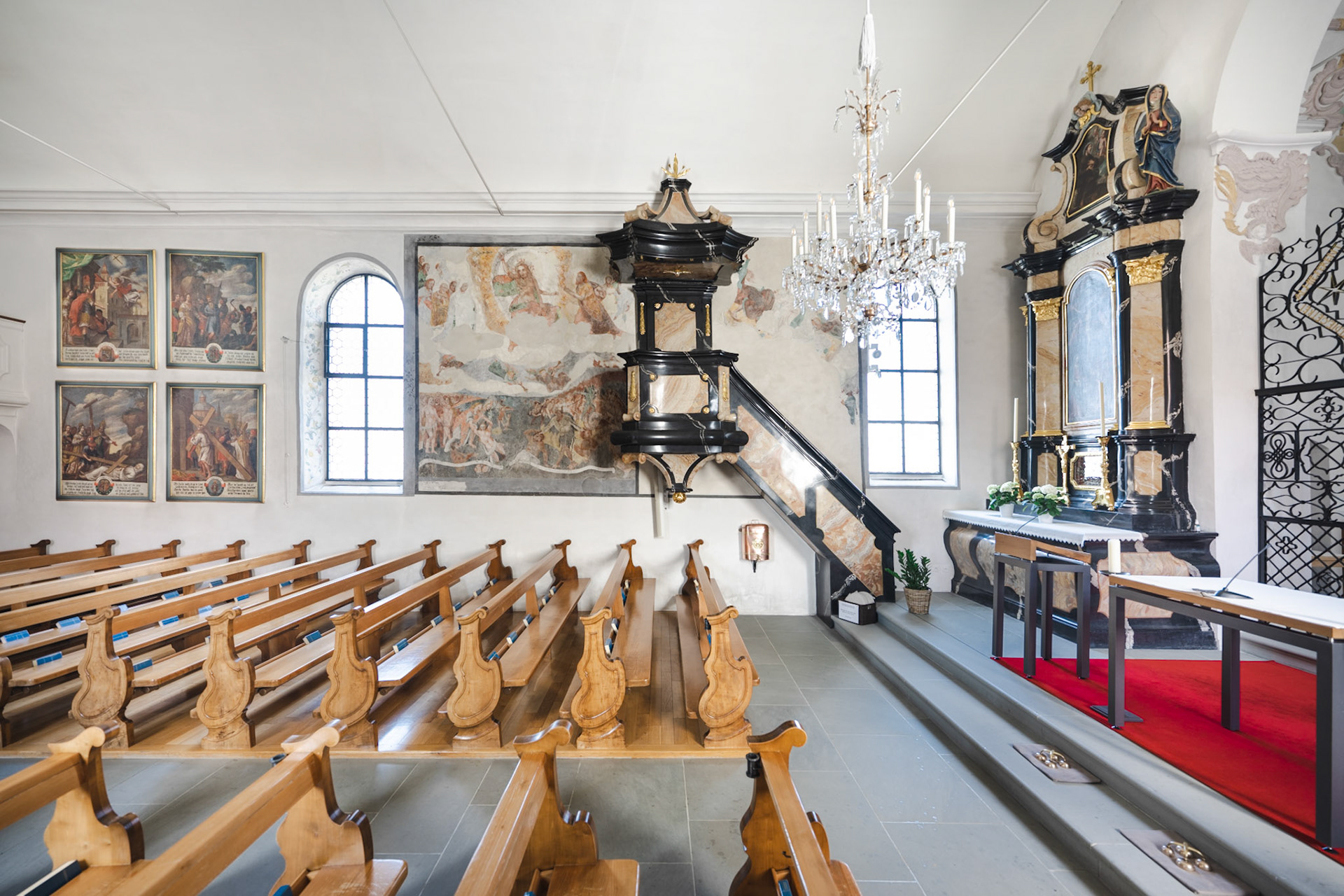
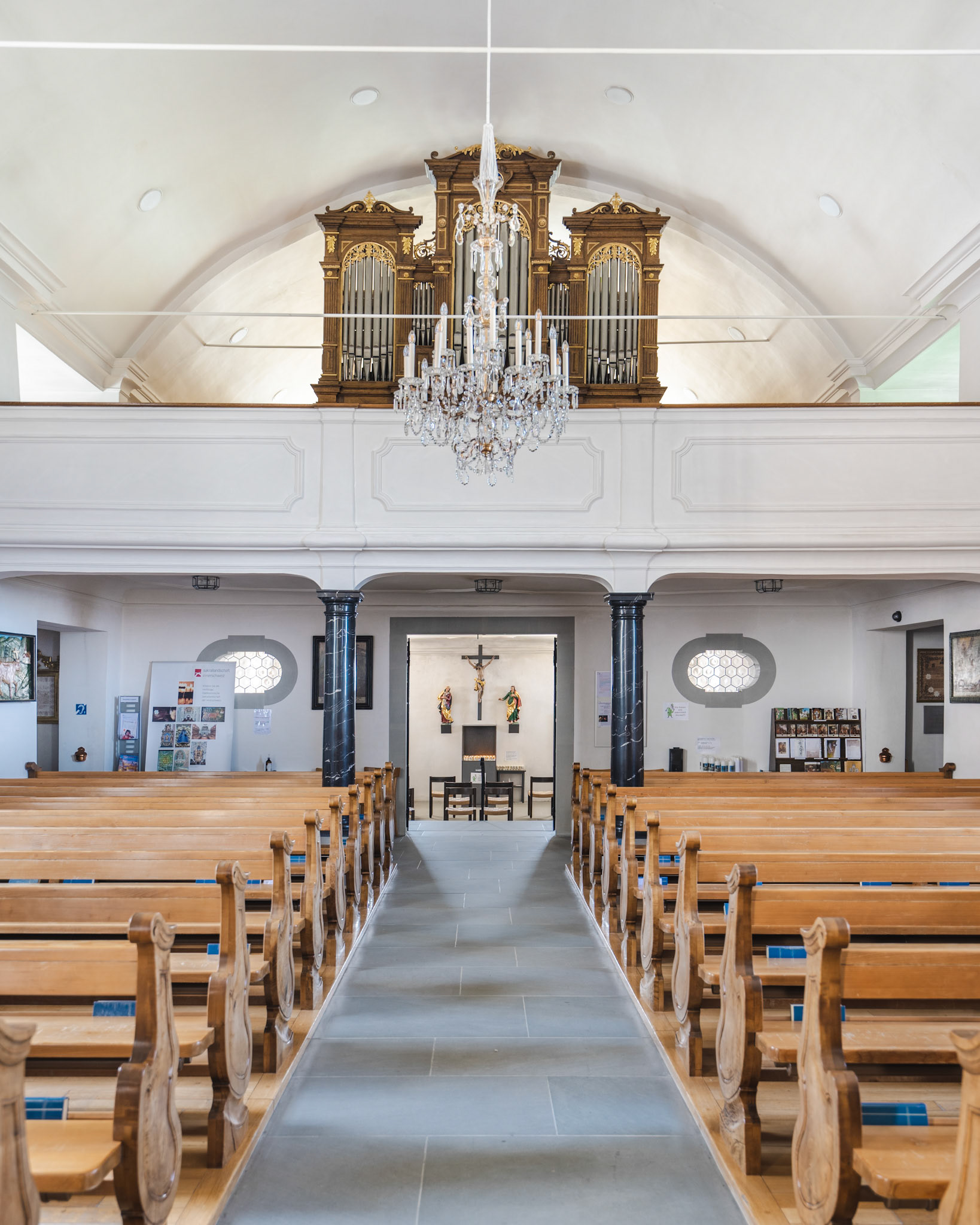
While the Stüssihofstatt was located inside the valley, the Alte Pächterhaus sits on top of the hills with wonderful views of the surroundings and we luckily could see some beautiful sunsets
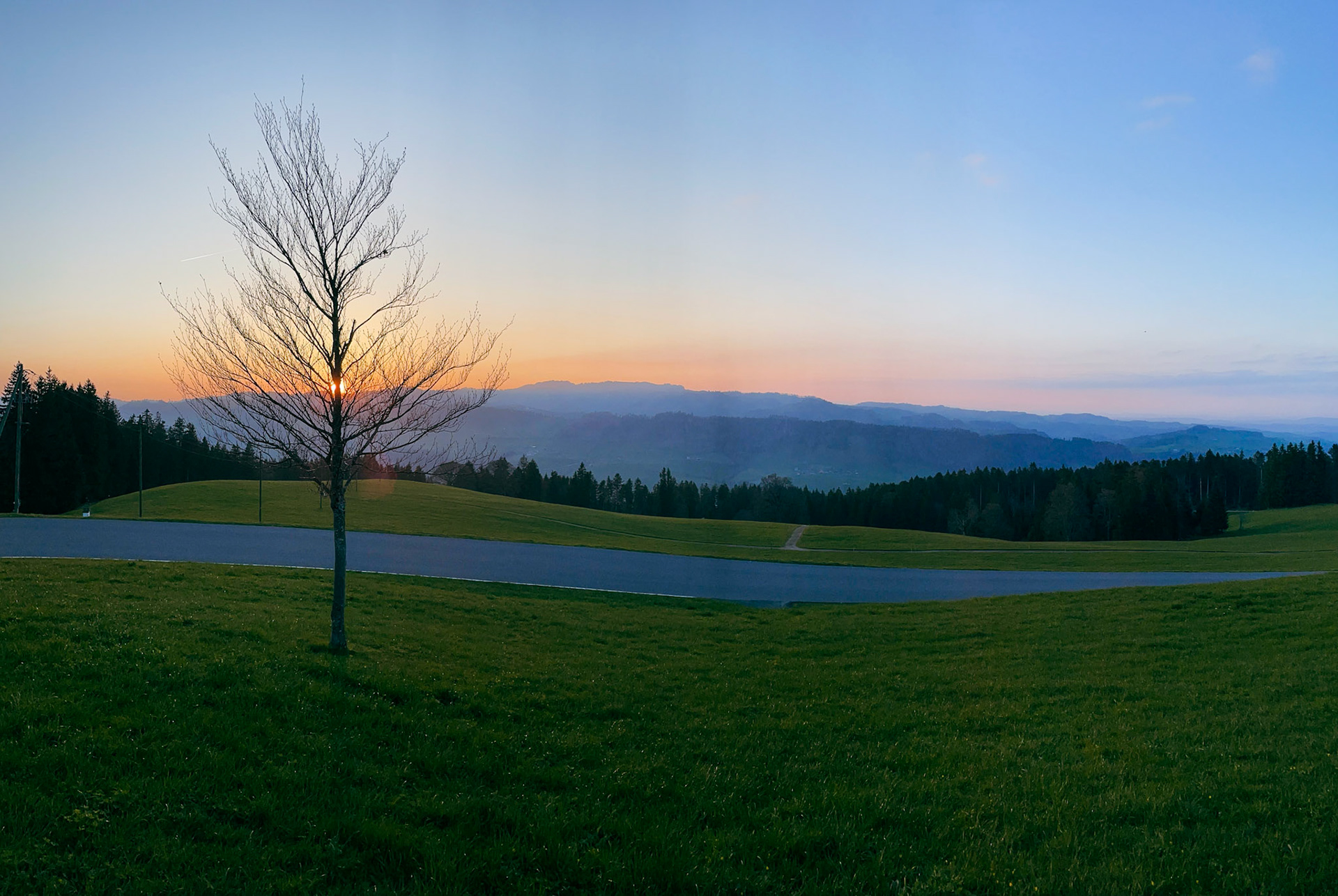
Day 5: Nature Day: Biosphere Entlebuch
The Entlebuch Biosphere is an almost 400 square kilometer nature reserve. It’s the second UNESCO Biosphere Reserve in Switzerland, after the Swiss National Park in Grisons. Comprising almost a third of Switzerland’s wetlands, it is home to nearly 300 different species of fungi. It also features some interesting activities we didn’t expect such as gold panning in the Napf region or charcoal burning in Romoos.
Heiligkreuz
The local hiking trails in Heiligkreuz started right at the doorstep of the Alte Pächterhaus, so we spent the morning exploring some of them: the Seelensteg, the Kraftbaum and the Health trail, a barefoot path across the woods.
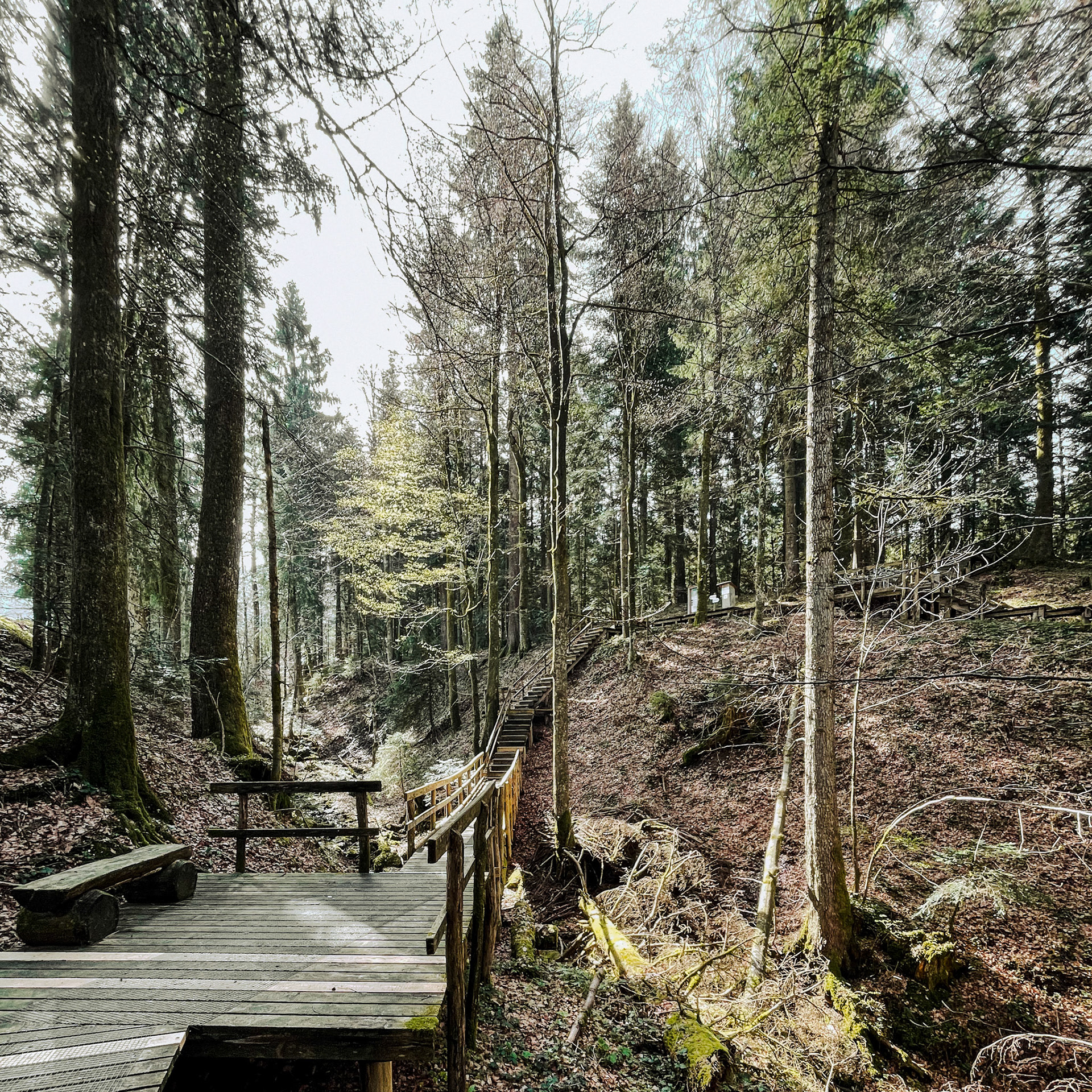
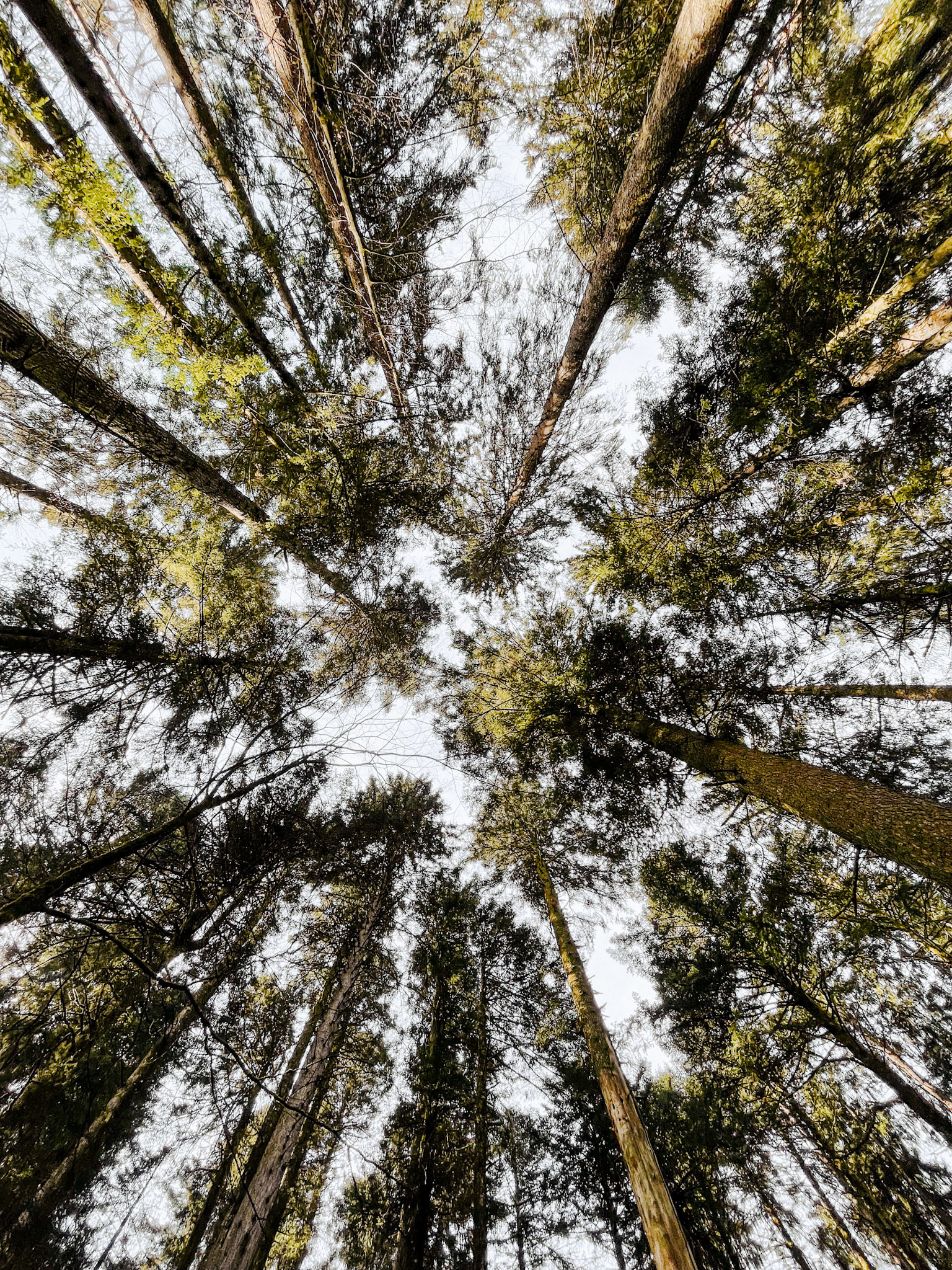
Chessiloch waterfall and suspension bridge
The afternoon we decided to see the Chessiloch, a 6km hike with amazing waterfalls and two suspension bridges. The hike starts in Flühli where it was also easy to park the car and initially follows the road before leading into the forest. The new suspension bridge was built in 2019 and crosses the Seebach at a height of 45m !
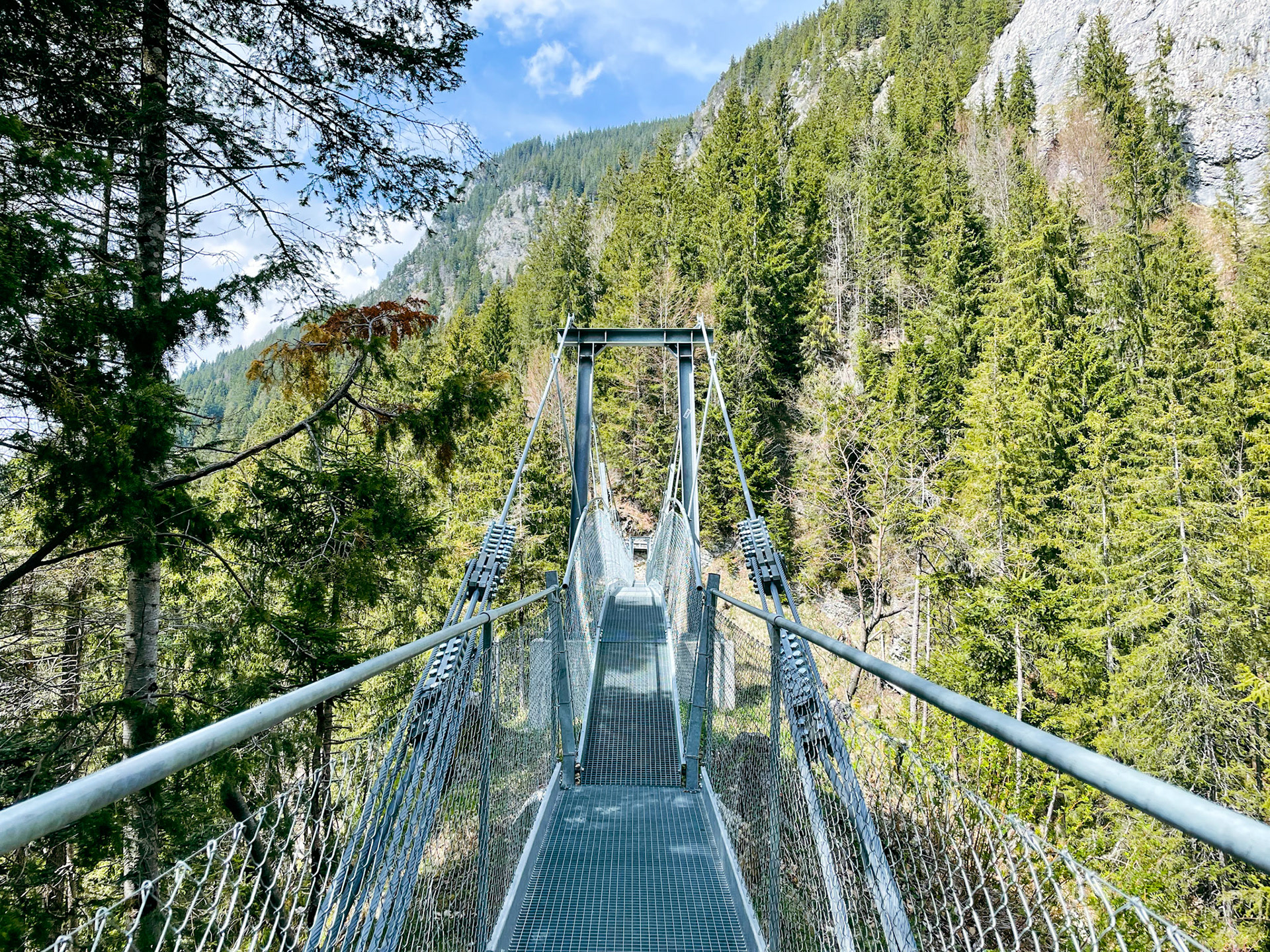
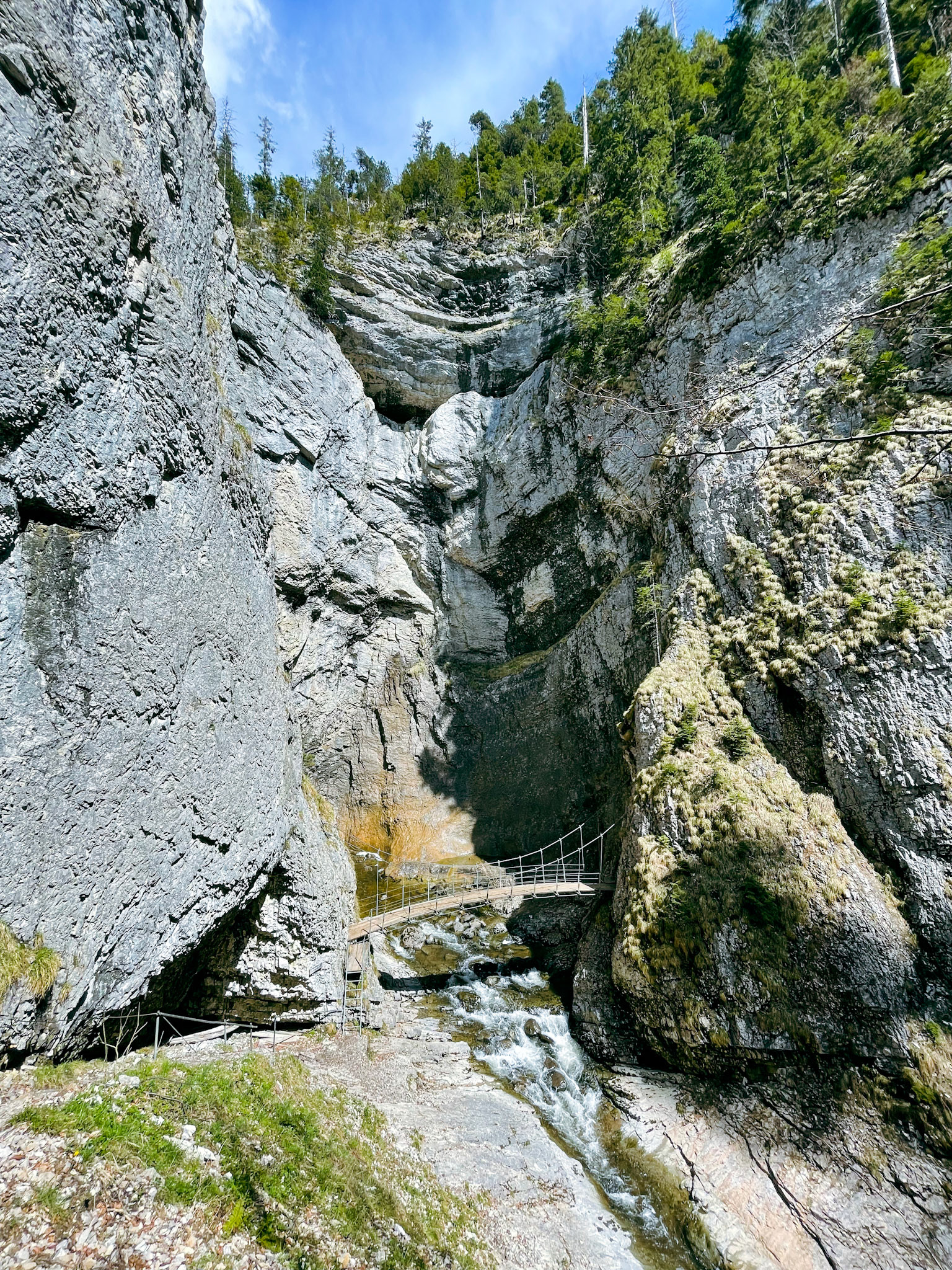

Day 6: Modern Art in Luzern
After having initially explored mostly the historical side of Lucerne, we just had to come back to explore its modern side, Lucerne also being a center of 20th century architecture and art.
KKL
The Kultur- und Kongresszentrum Luzern KKL was designed by French architect Jean Nouvel and built between 1995 and 2000. It replaces the former Art and Convention Center designed
by the Swiss architect, Armin Meili, in 1933/34. The total construction costs were slightly above 220 million Swiss francs and the KKL now contains three main volumes: a concert hall for almost 2000 spectators, the multi-purpose Lucerne Hall and the Lucerne Museum of Art. They are separated at the ground level by two channels of water from Lake Lucerne that flow into the building and brought together into one big complex through the huge cantilevered roof measuring 113 by 107 meters.
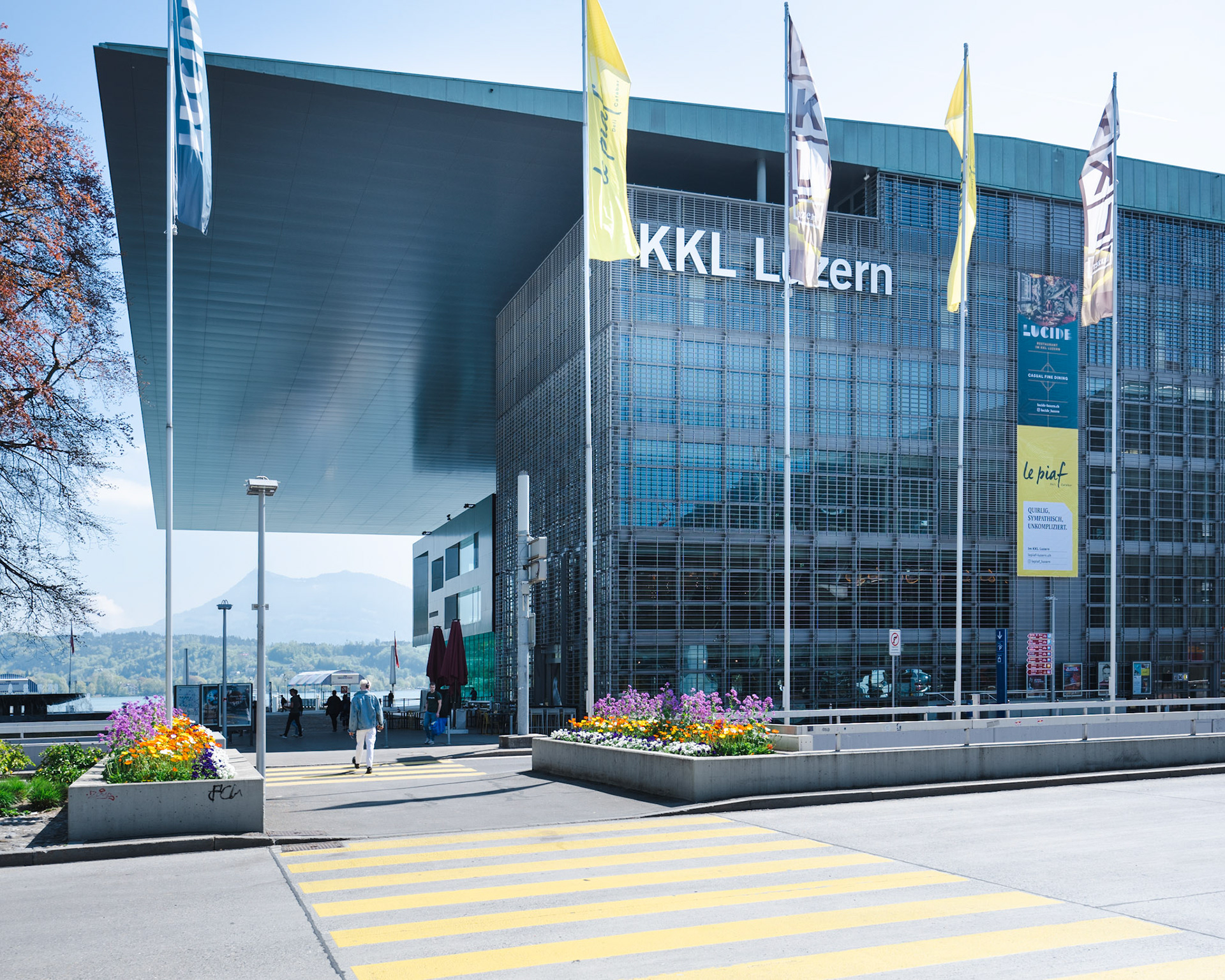
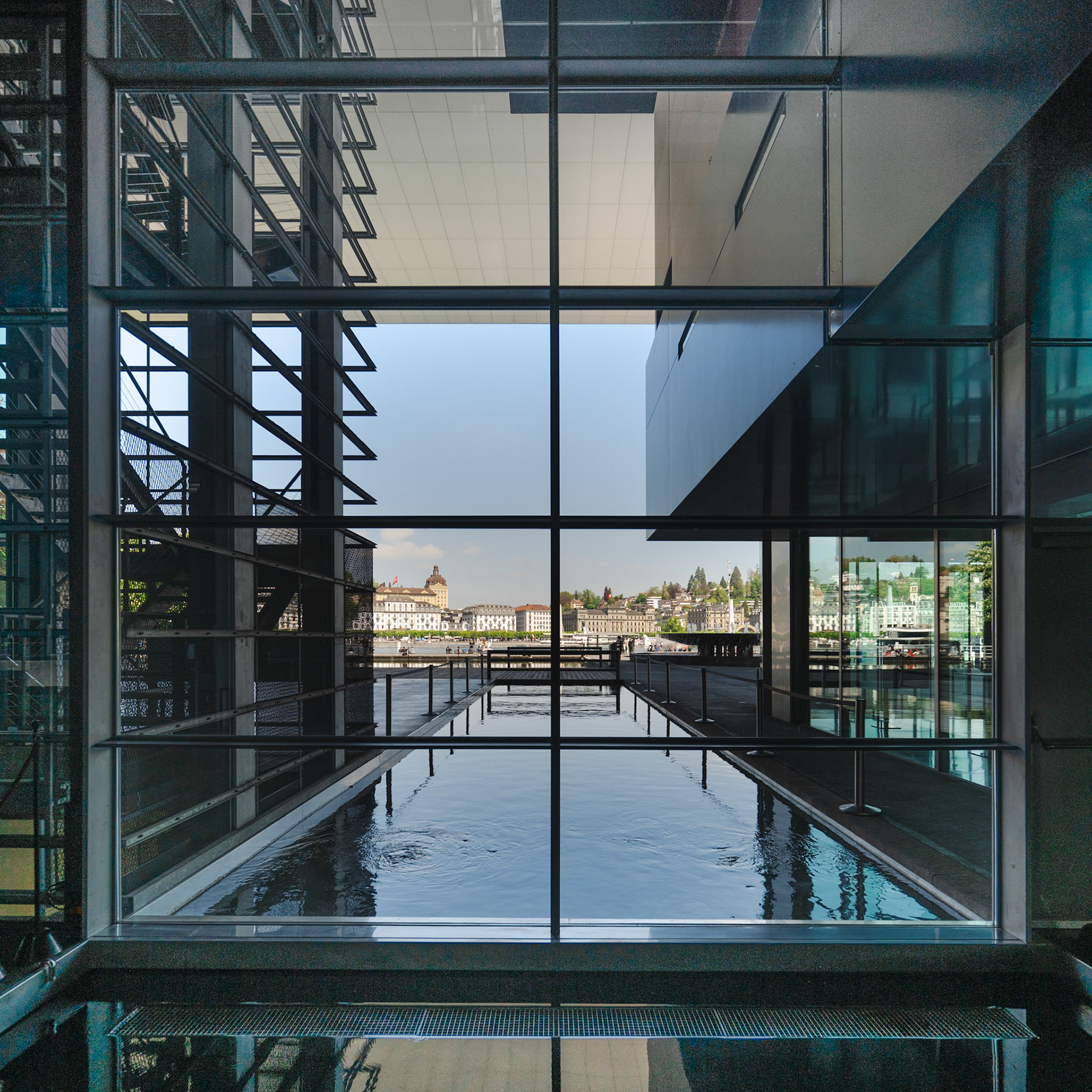
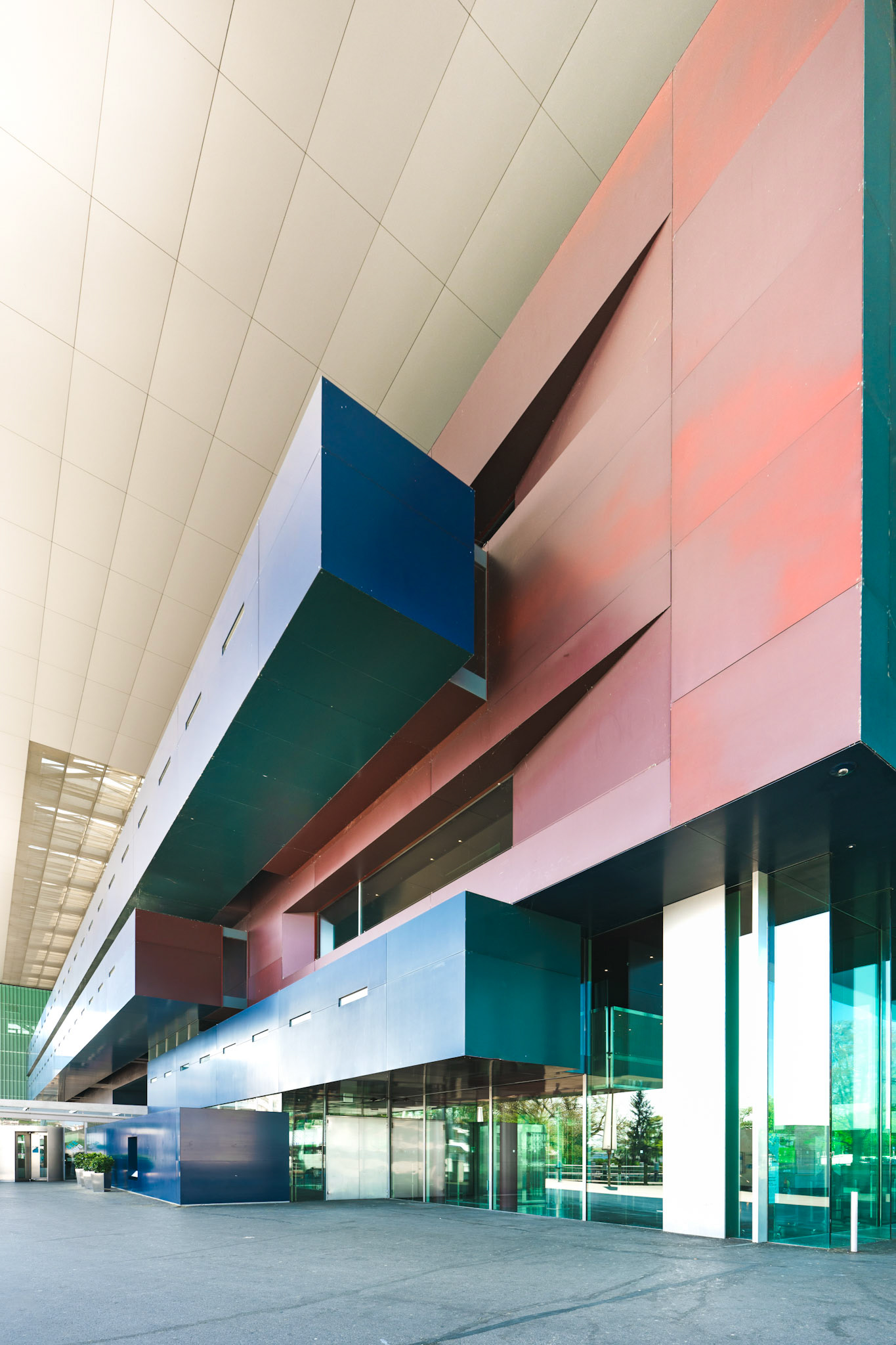
Concert Hall
The concert hall has seating for 1898 spectators and has the reputation of being among the most beautiful in Switzerland.

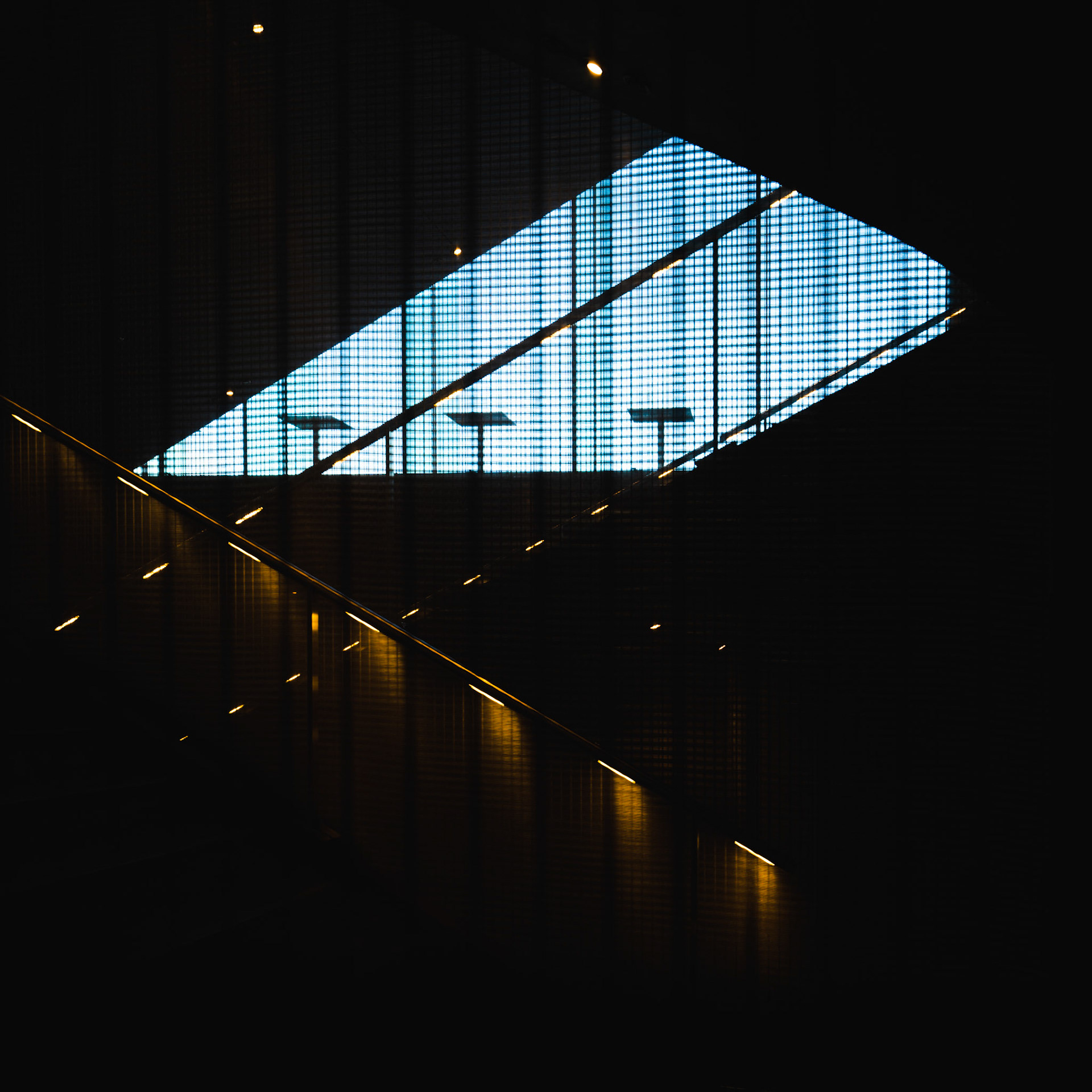
While the entrances to the "Salle blanche" have red carpets, the concert hall itself is all in tones of blue and white, from the blue seats to the white plaster reliefs on the walls to the night-blue starry sky.
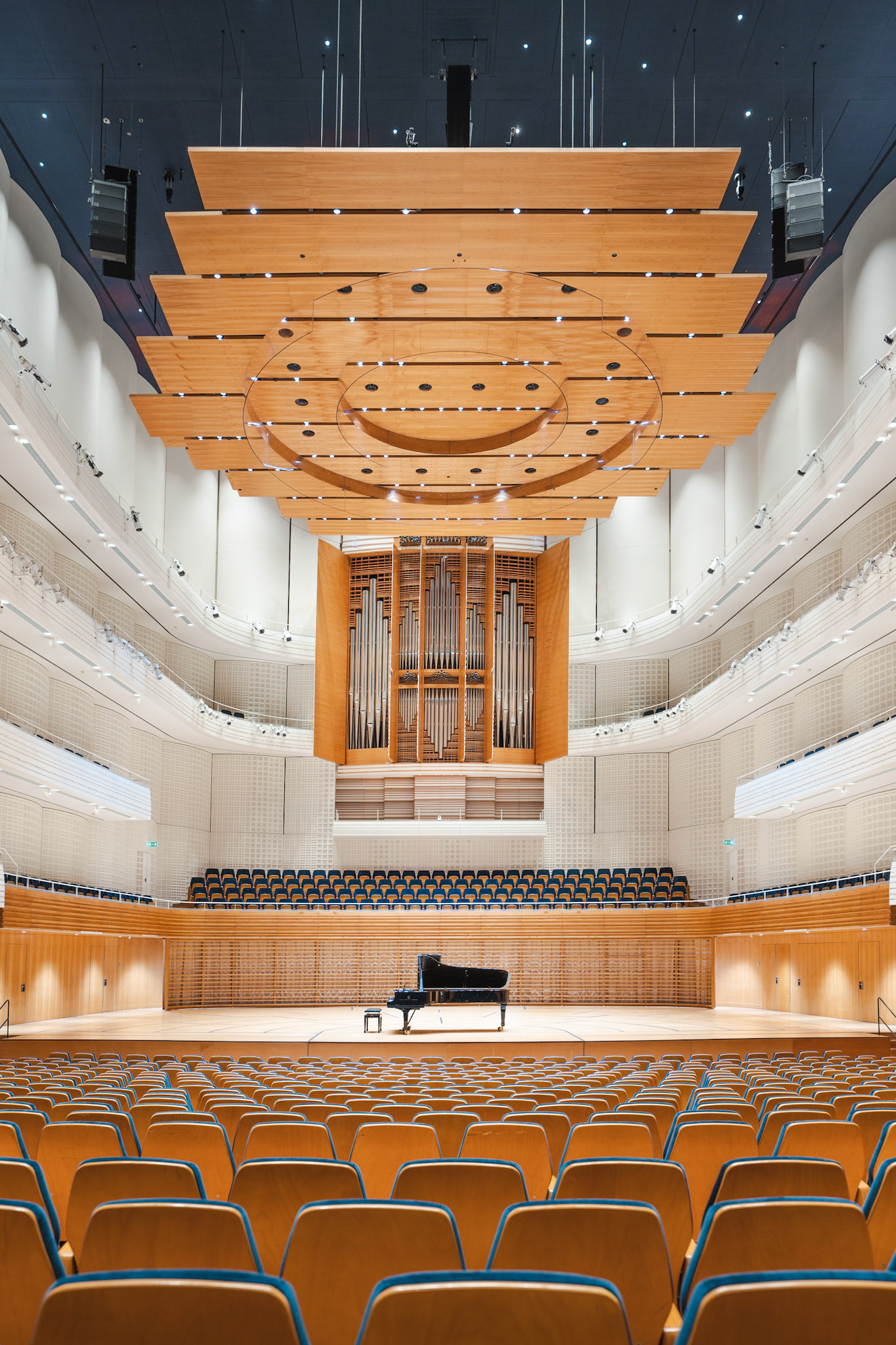
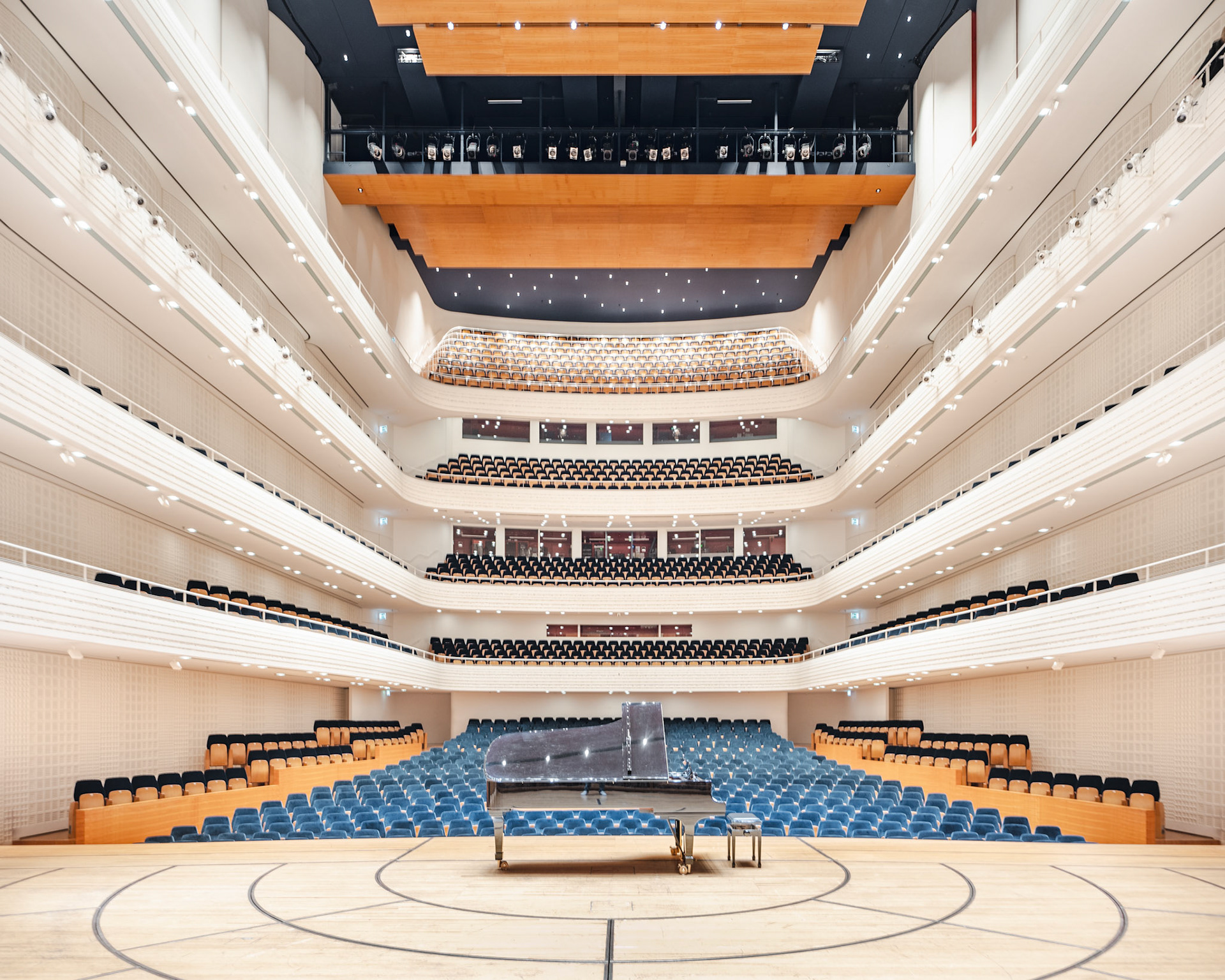
American acoustician Russell Johnson used the dimensions of the famous concert halls of Vienna and Amsterdam as his acoustic models. It also features a height adjustable acoustic canopy above the stage as well as a reverberation chamber with fifty revolving doors allowing to increase the volume of the hall by 7000 cubic meters, depending on the occasion. The opening concert on August 18 1998 was played by the Berlin Philharmonic Orchestra under the direction of Claudio Abbado and many recordings have since been made here, such as for example the Somewhere album by Keith Jarrett.
Kunstmuseum
The Lucerne Art Museum (Kunstmuseum Luzern) was founded in 1932. It has been located on the 4th floor of the KKL since 2001. The collection of the Kunstmuseum Luzern is a cultural archive of Central Switzerland with several thousand objects from the Renaissance to the present day.
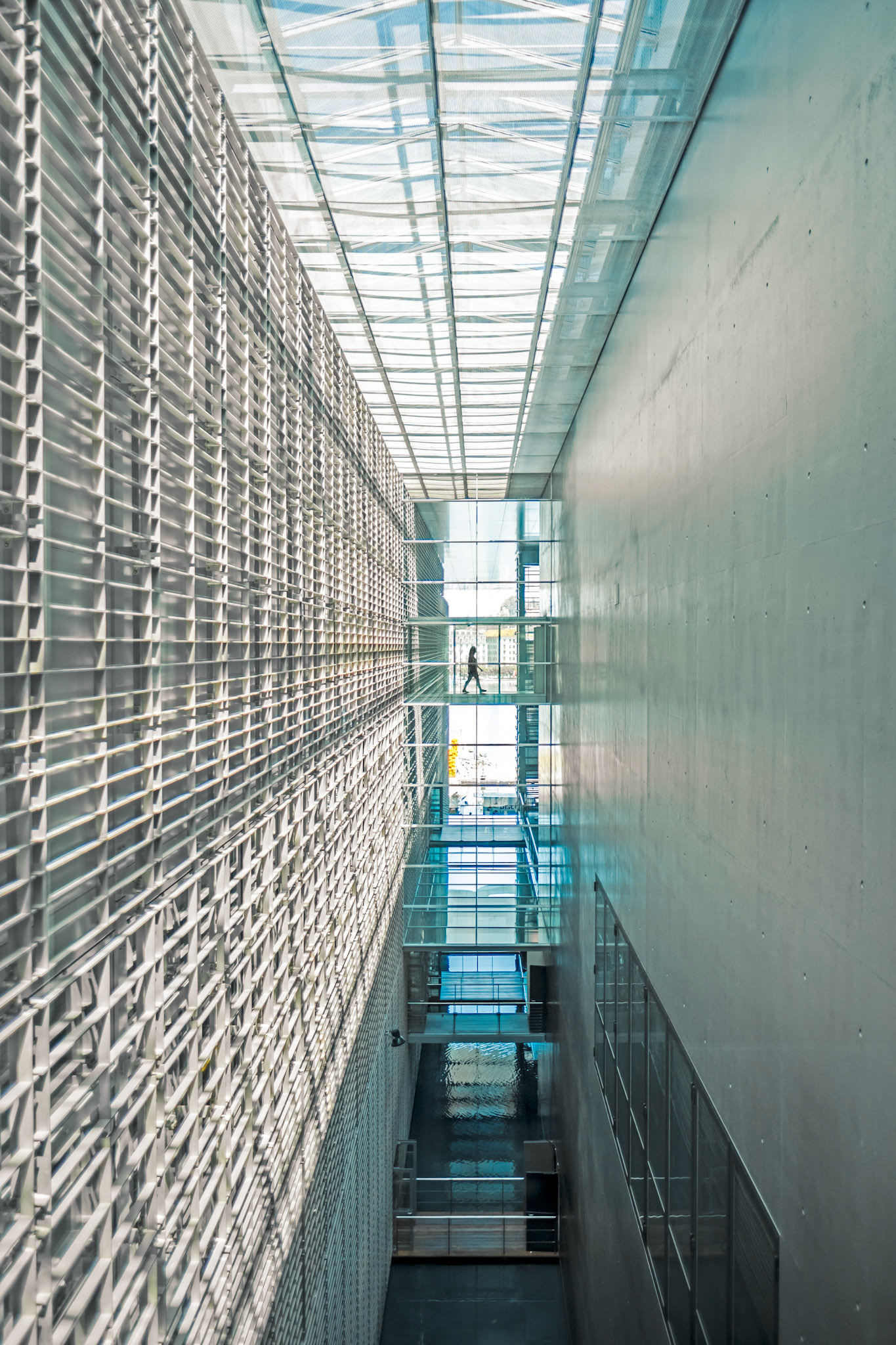
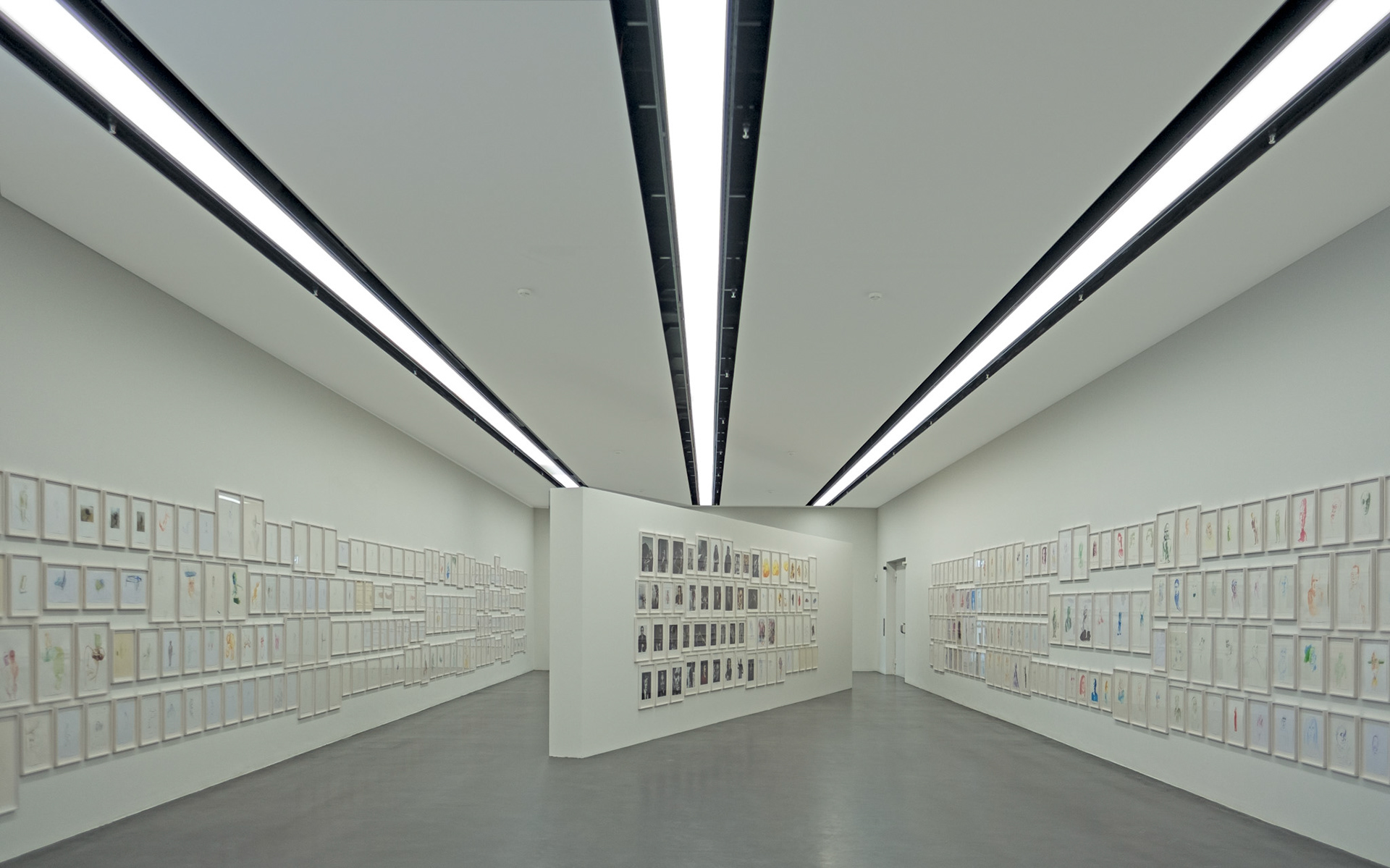
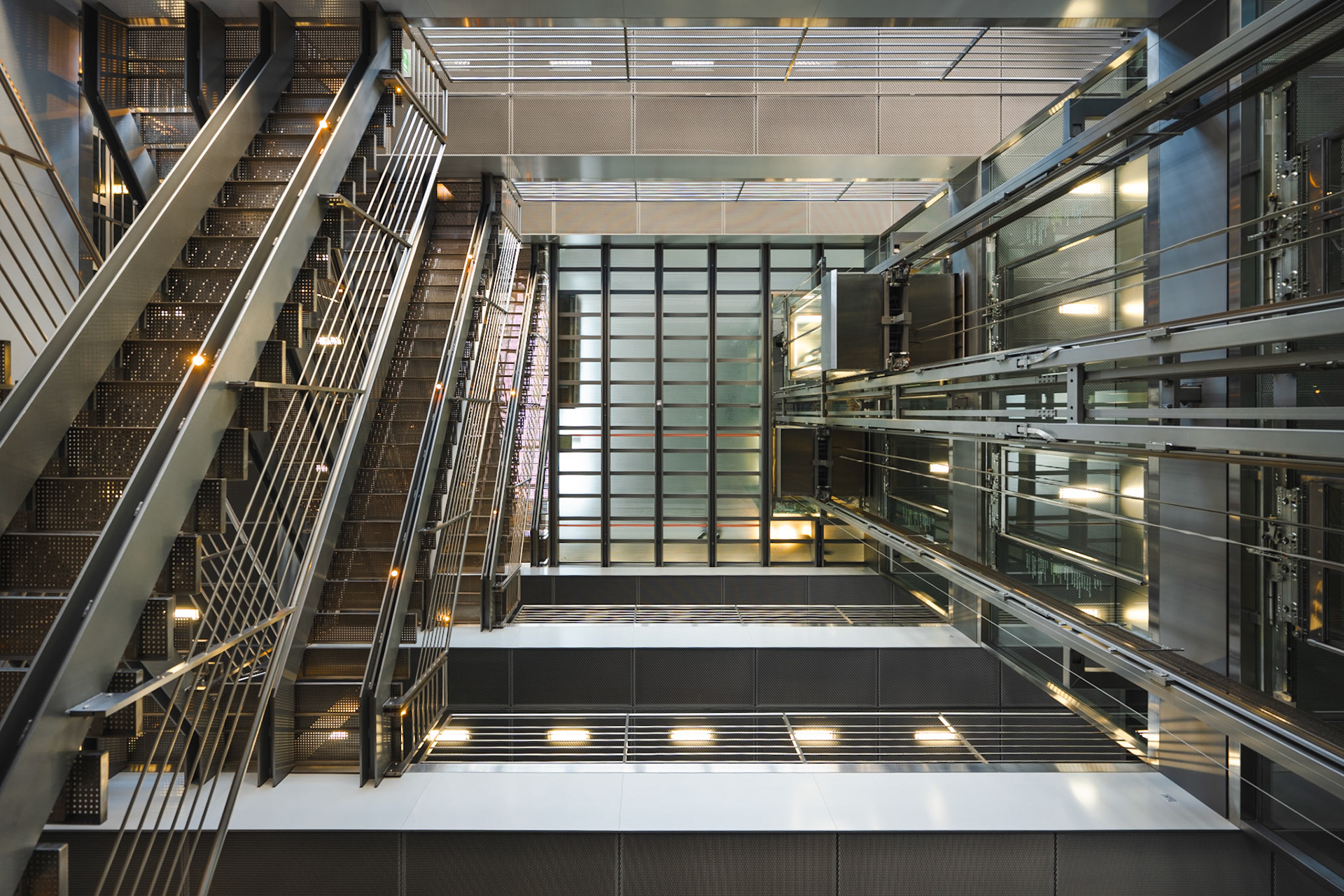
Railway Station
The Lucerne railway station is located just next to the KKL. The historical station unfortunately was destroyed in a fire in 1971. It was replaced by a new construction by architectural firm Ammann and Baumann, which was designed by their employee Santiago Calatrava, making this one of the first major realizations by Santiago Calatrava, after having received his doctorate from ETH Zürich in 1991. The transparent glass construction terminates the over 100m long facade of the train station using 16 14-meter high concrete columns.
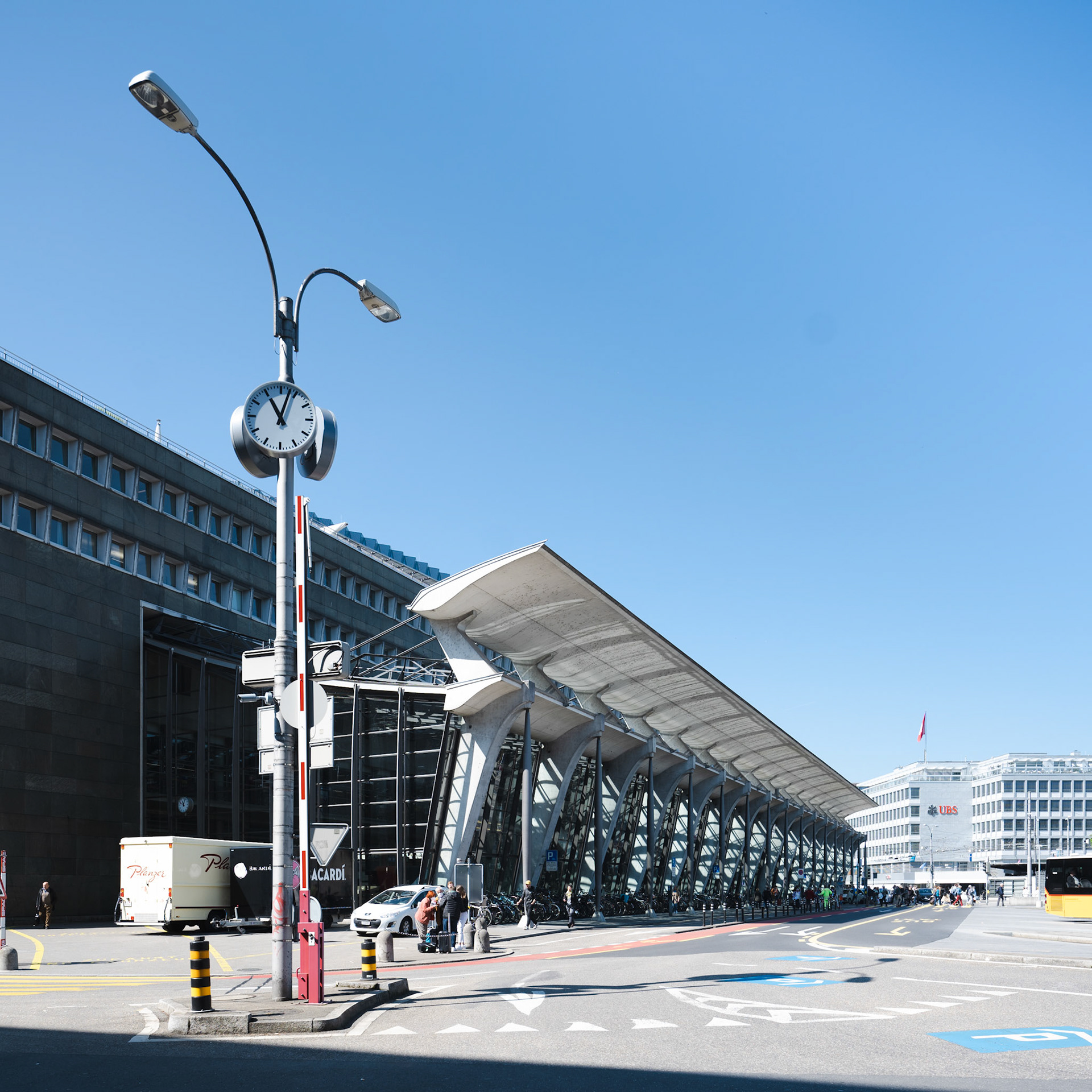

Sammlung Rosengart
Sammlung Rosengart is a modern art museum in Lucerne, inaugurated in 2002. It is located inside the former Swiss National Bank, built in 1924 to plans by Hermann Herter, and transformed for the museum by Diener & Diener.
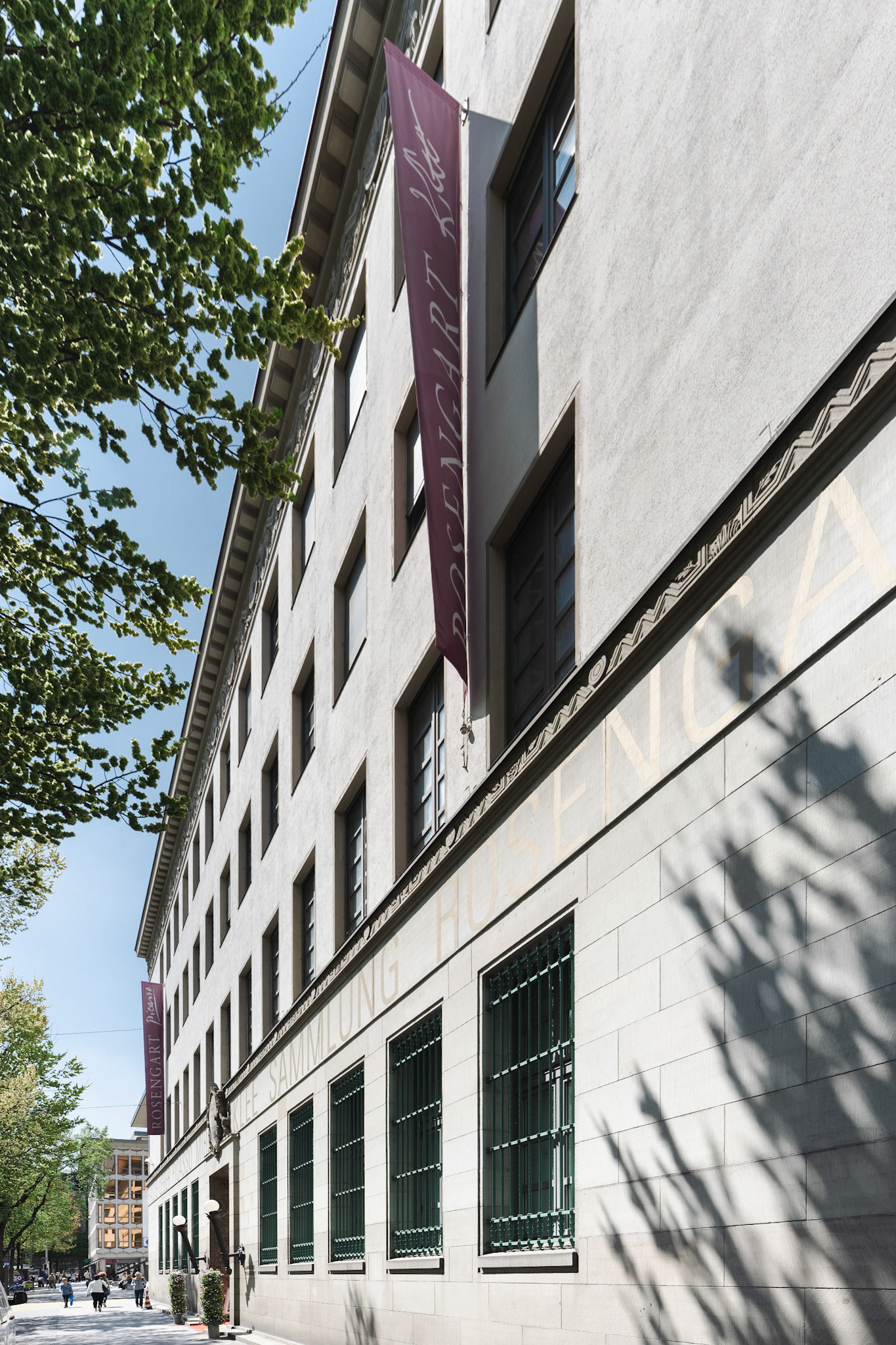
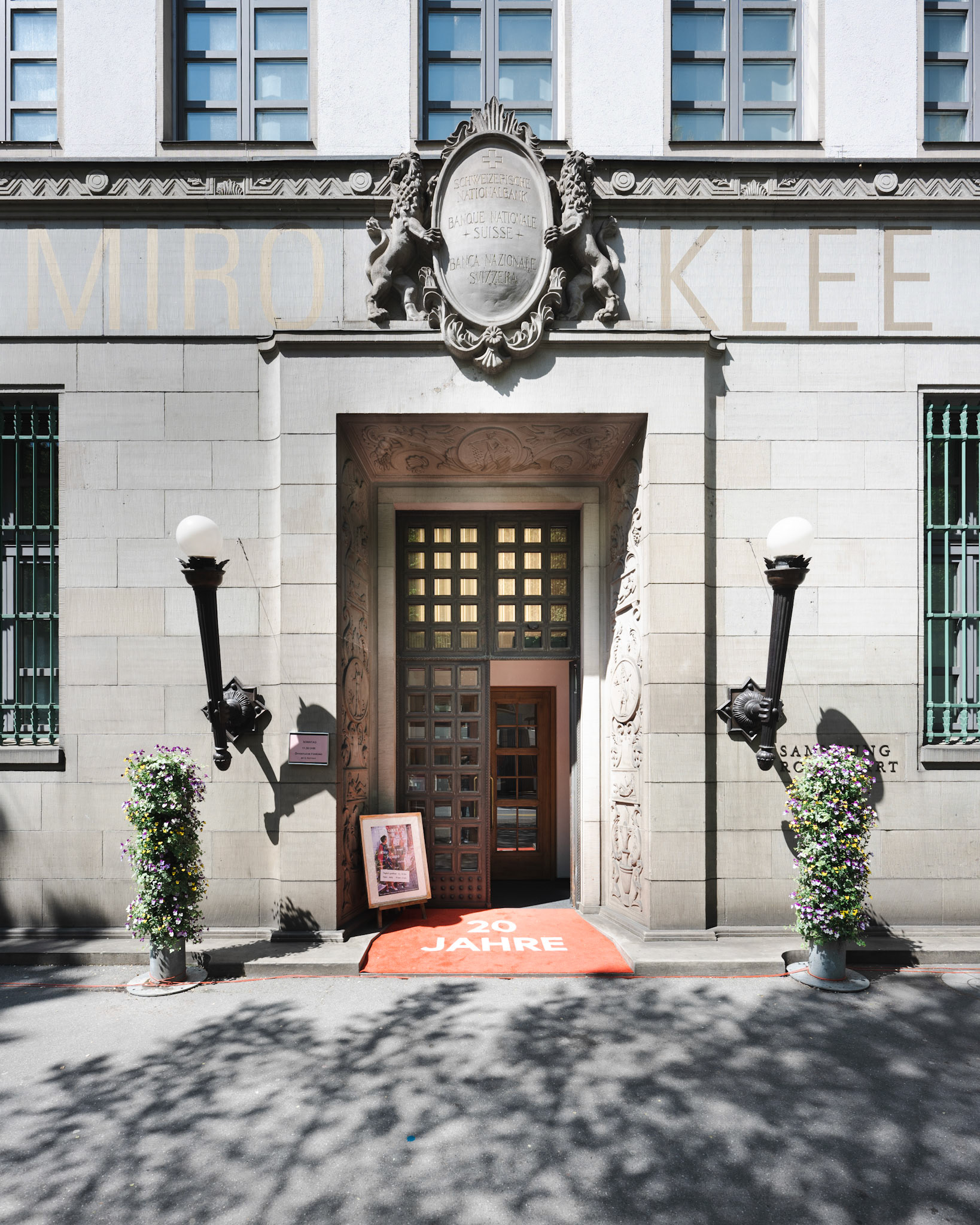
It contains works of the private collection of the Rosengart family. Angela Rosengart and her father Siegfried Rosengart were art dealers specializing in Classic Modernism and over time created a private collection of over 300 works, with Paul Klee and Pablo Picasso being the most represented ones.
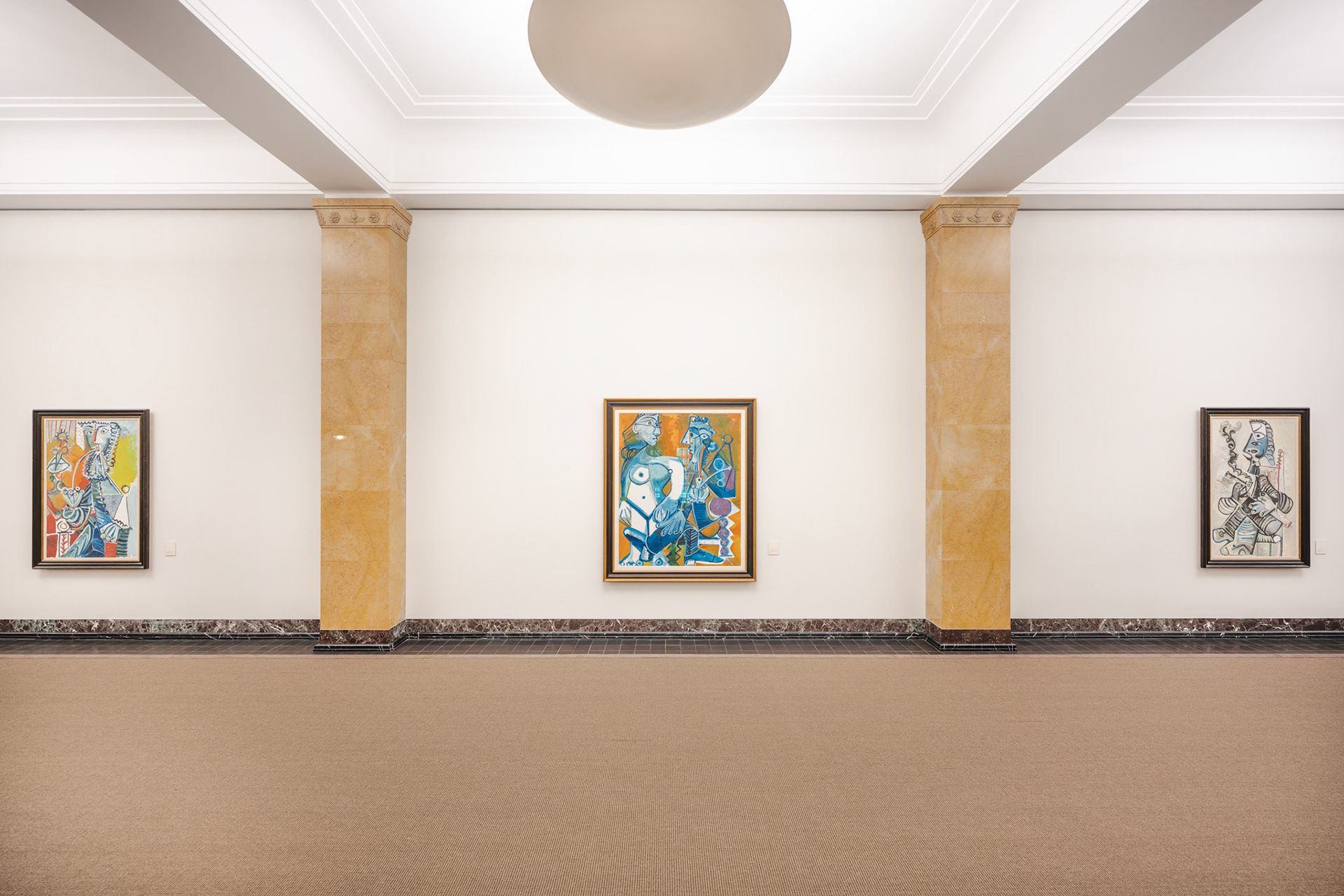
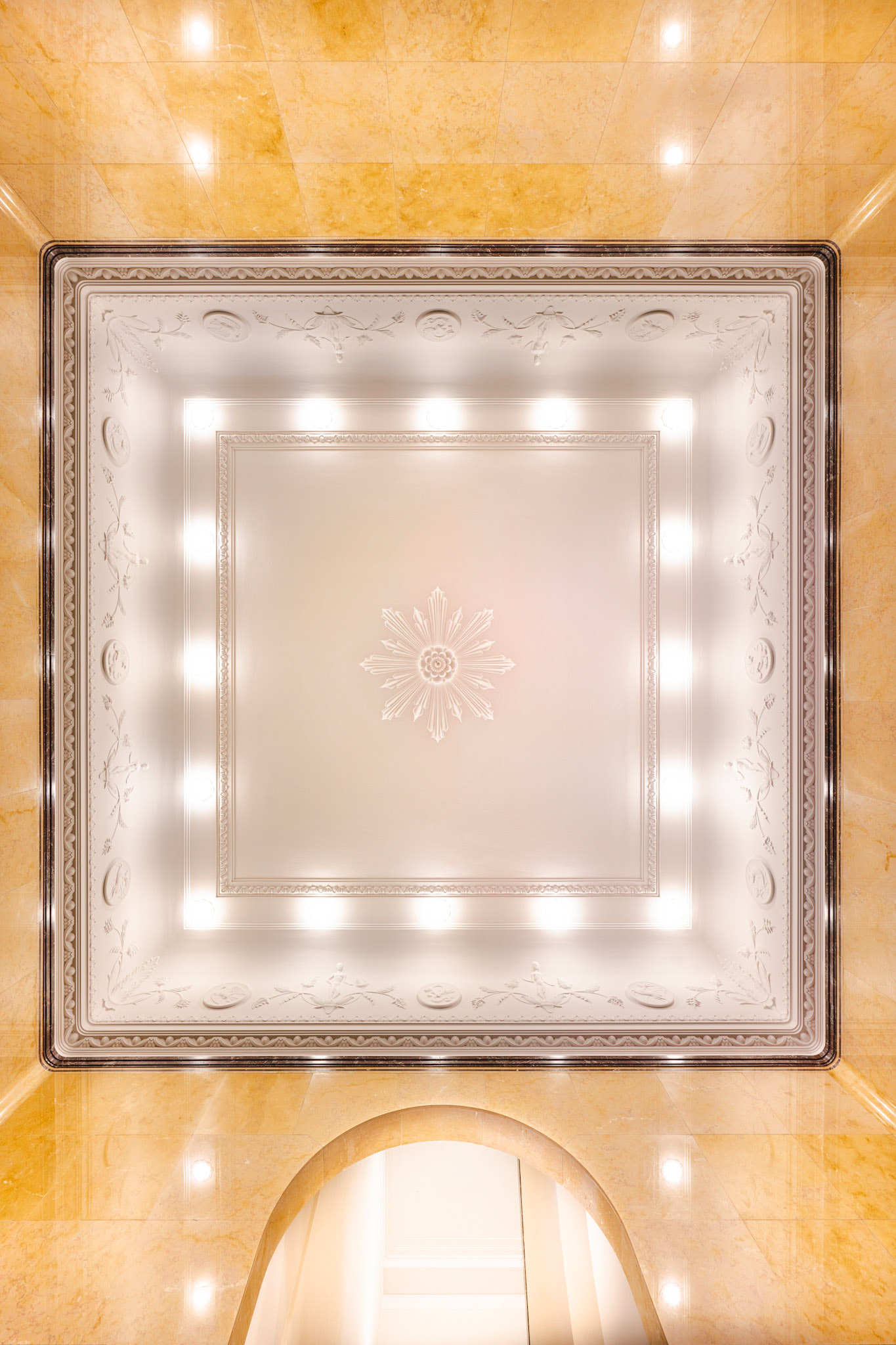
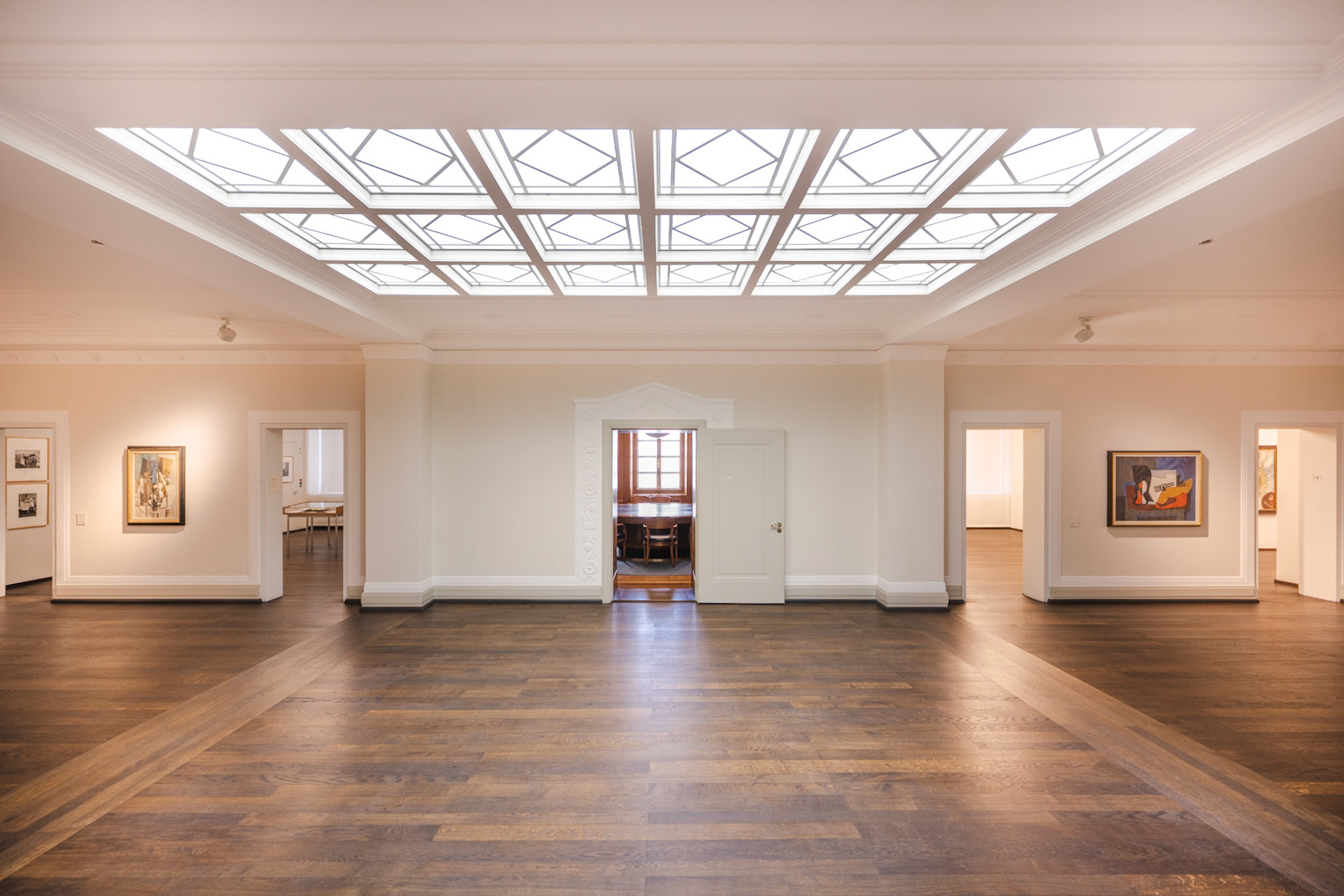
Day 7: Return
All good things come to an end, we needed to get back home.
Kambly Experience
Taking route 10 towards Bern, we encountered on the way an inalpe, the ascension of the cows up the mountain for the summer, and were happily surprised to find the Kambly Experience and Factory Store in Trubschachen. We just had to stop! We learned the history of Kambly… and made many sweet purchases!
